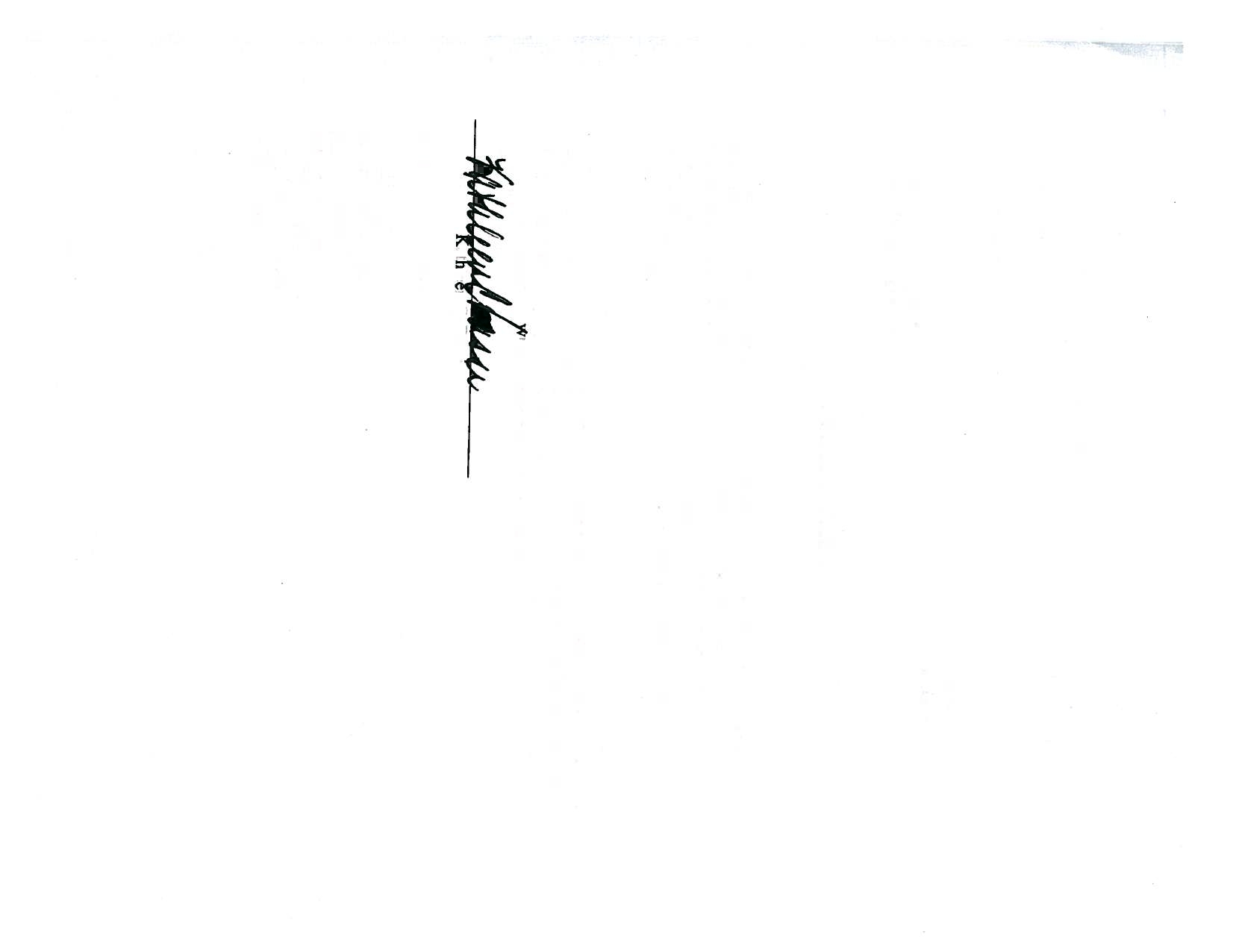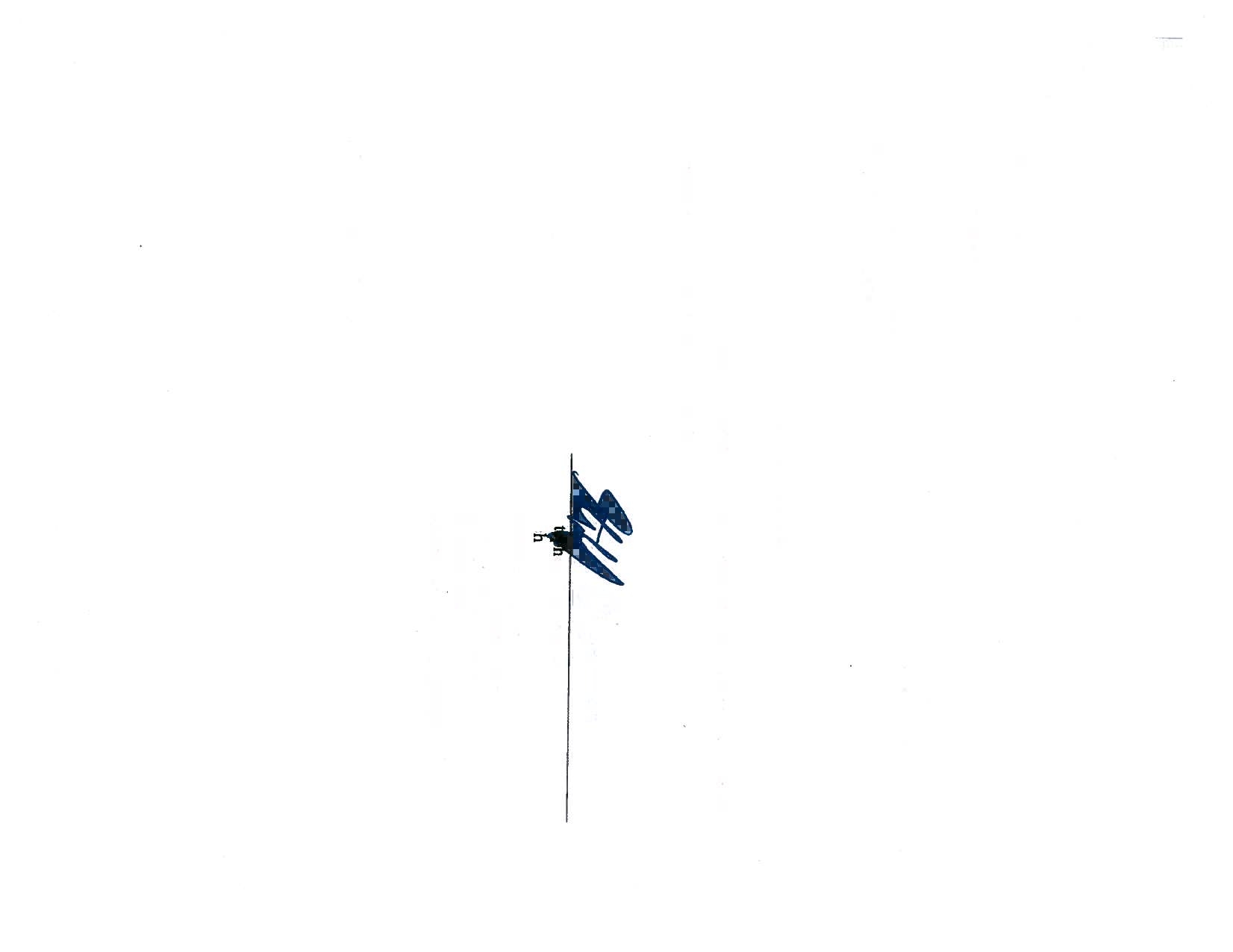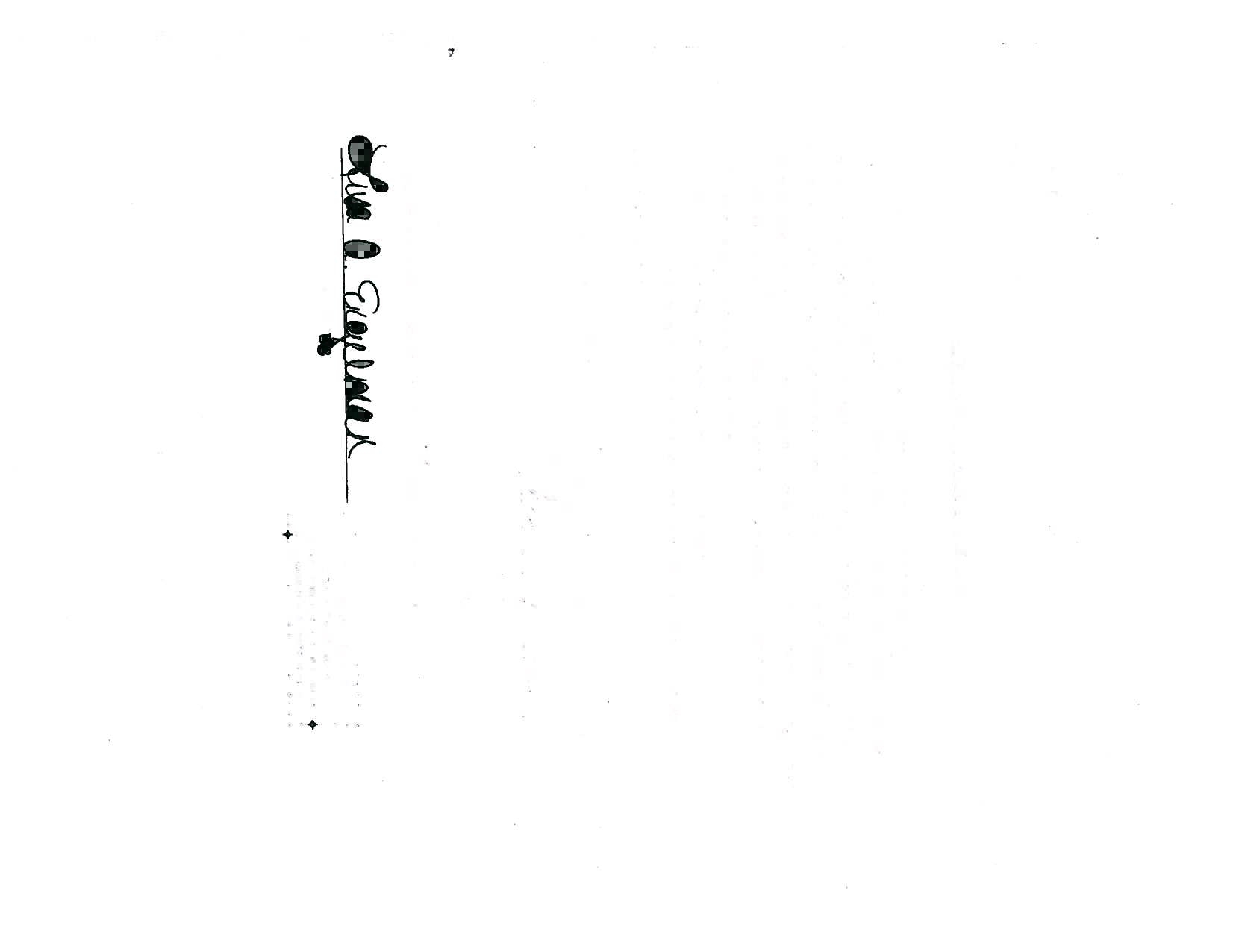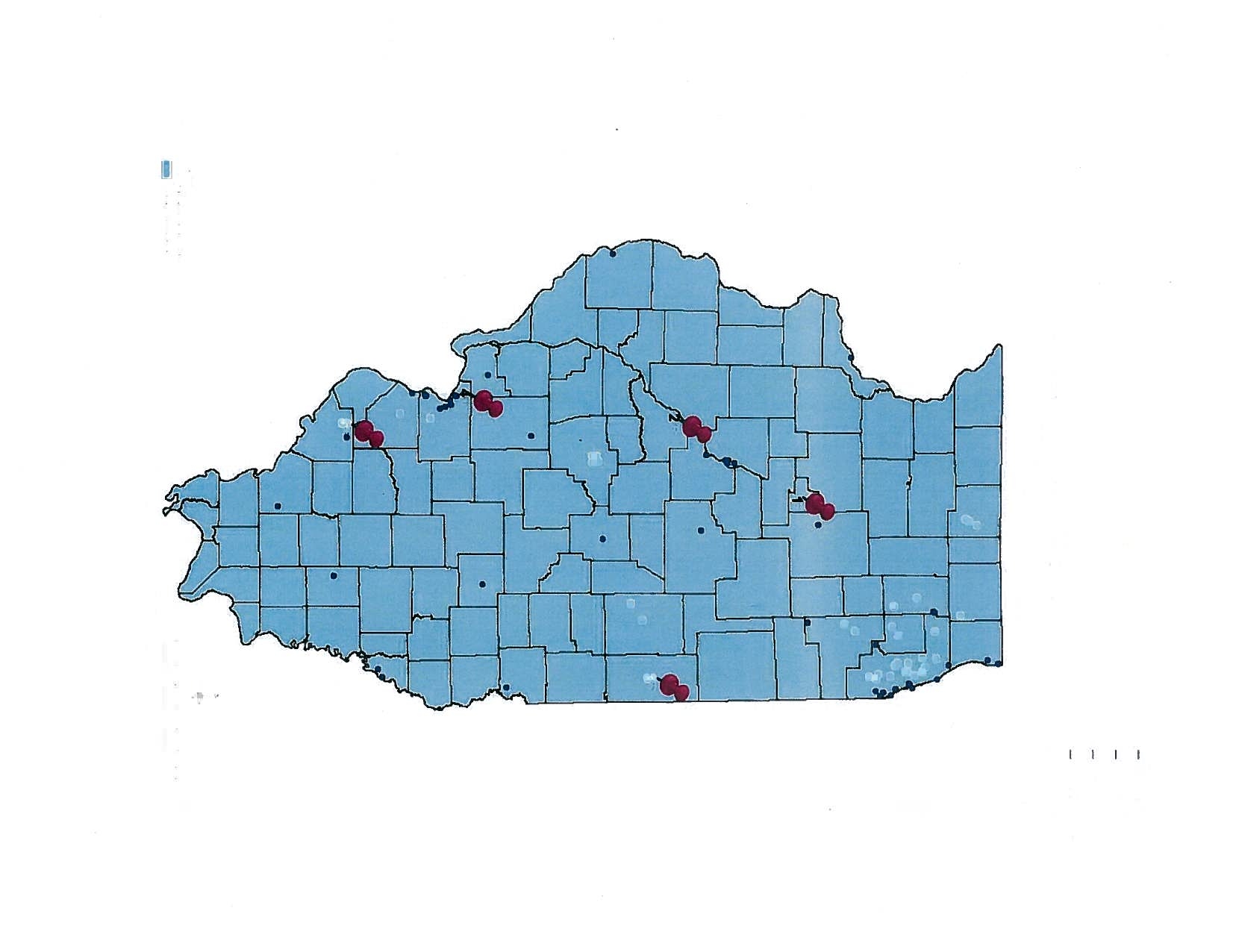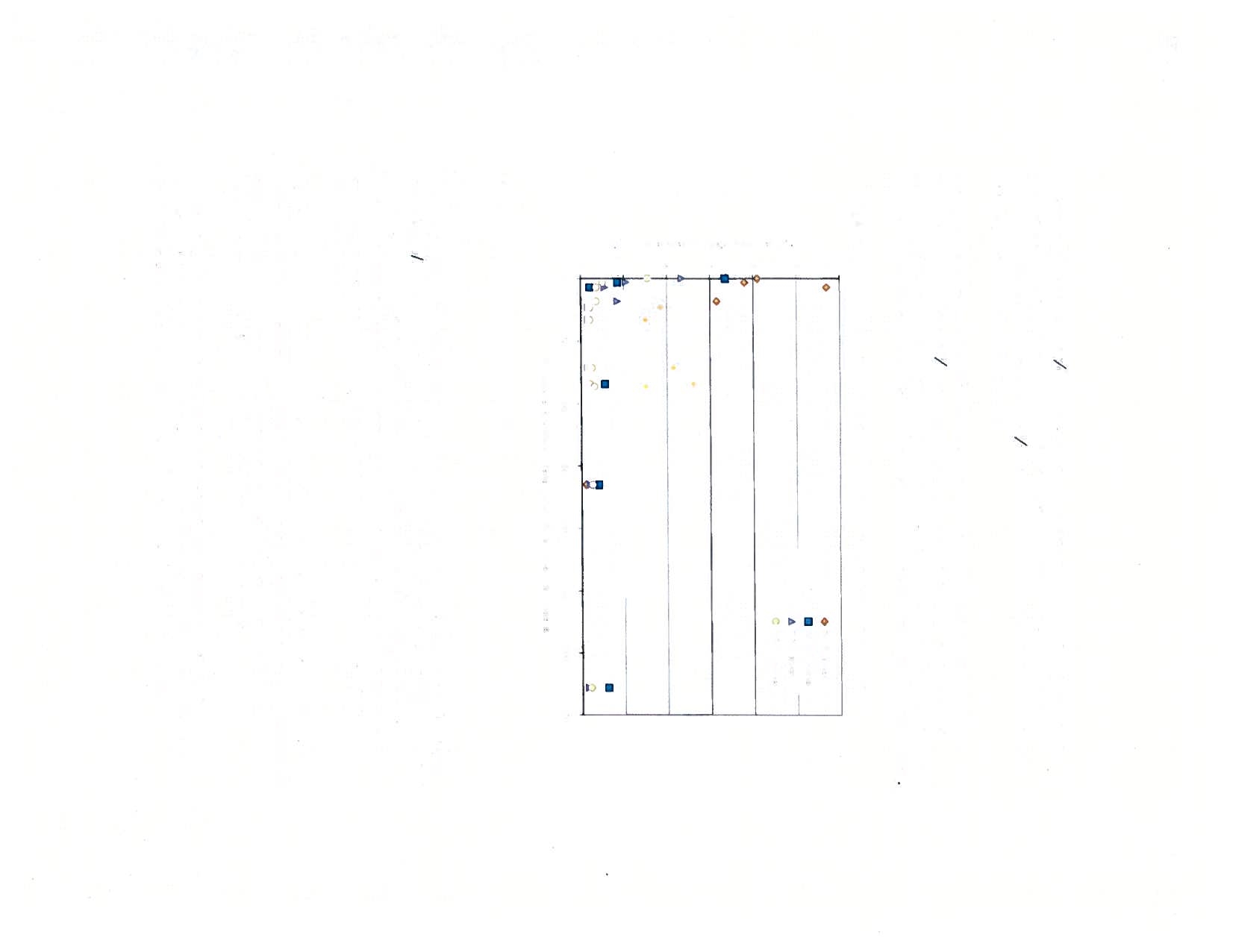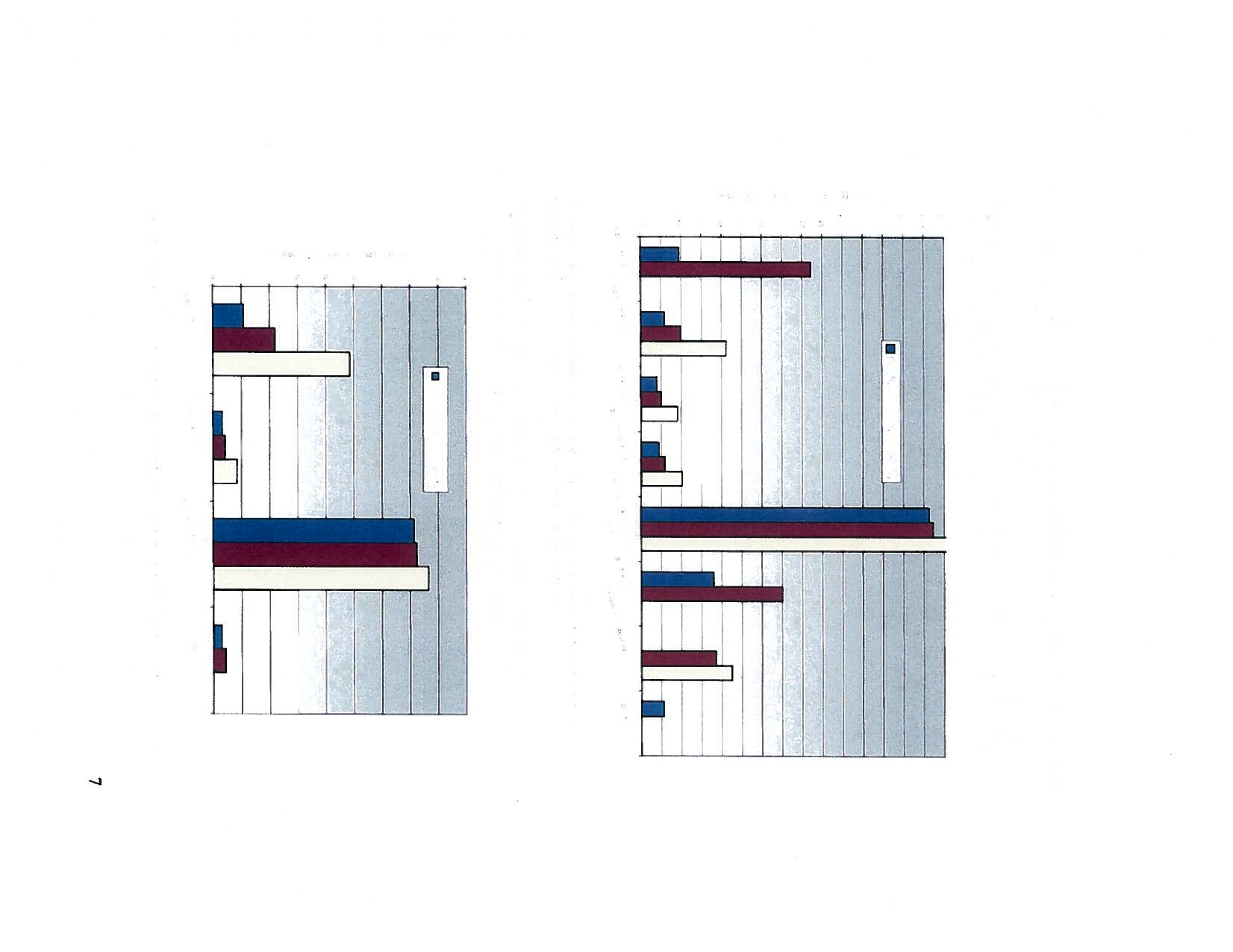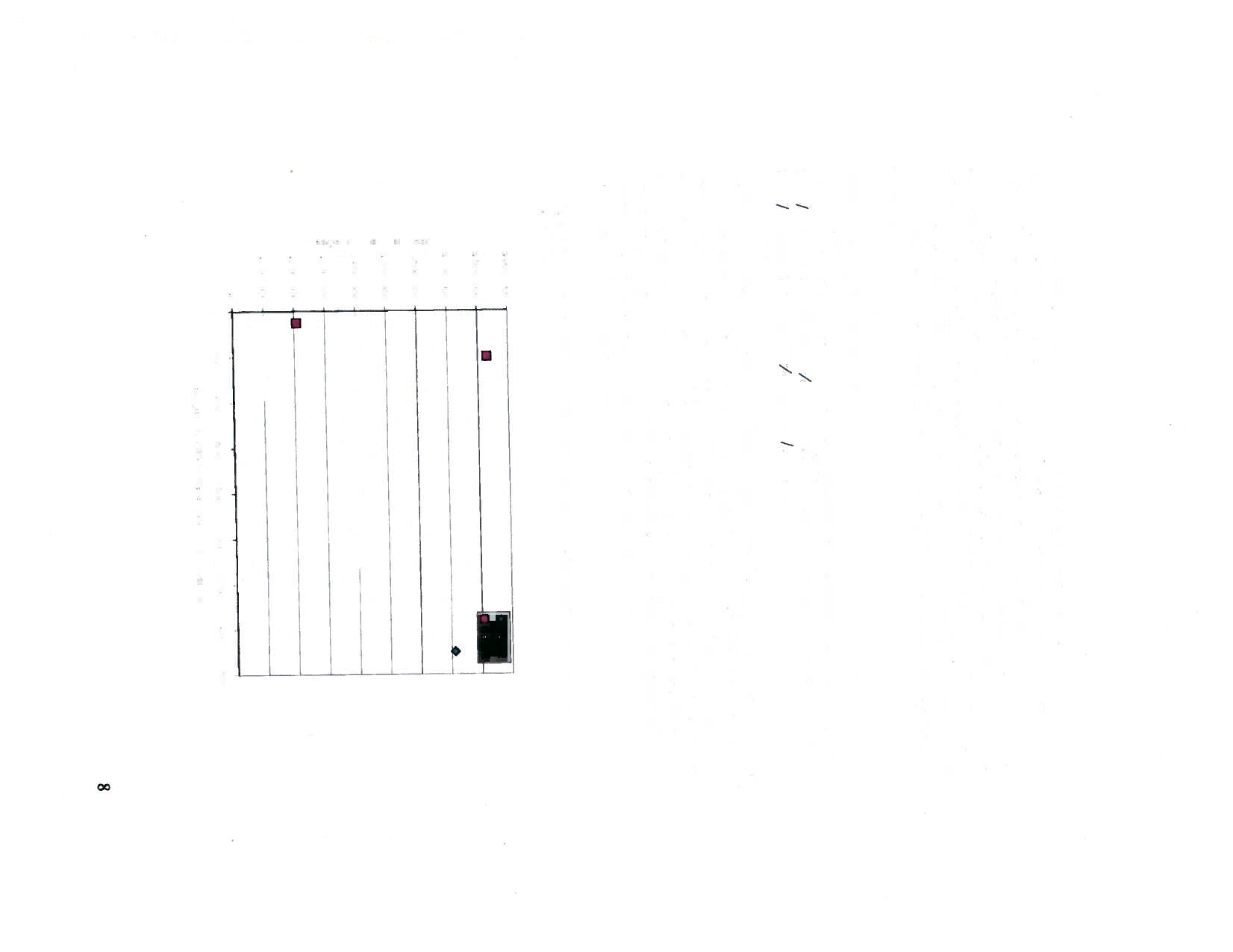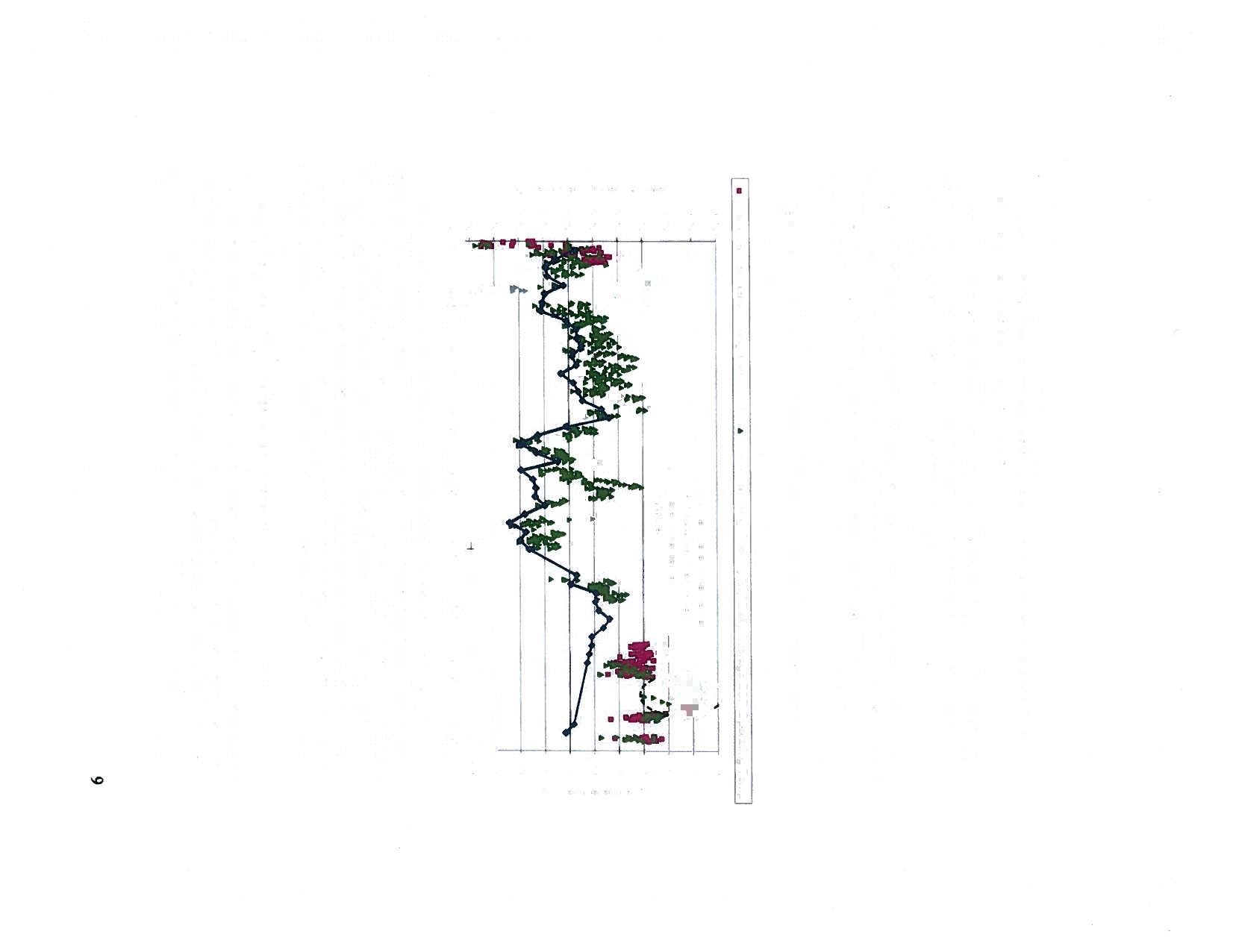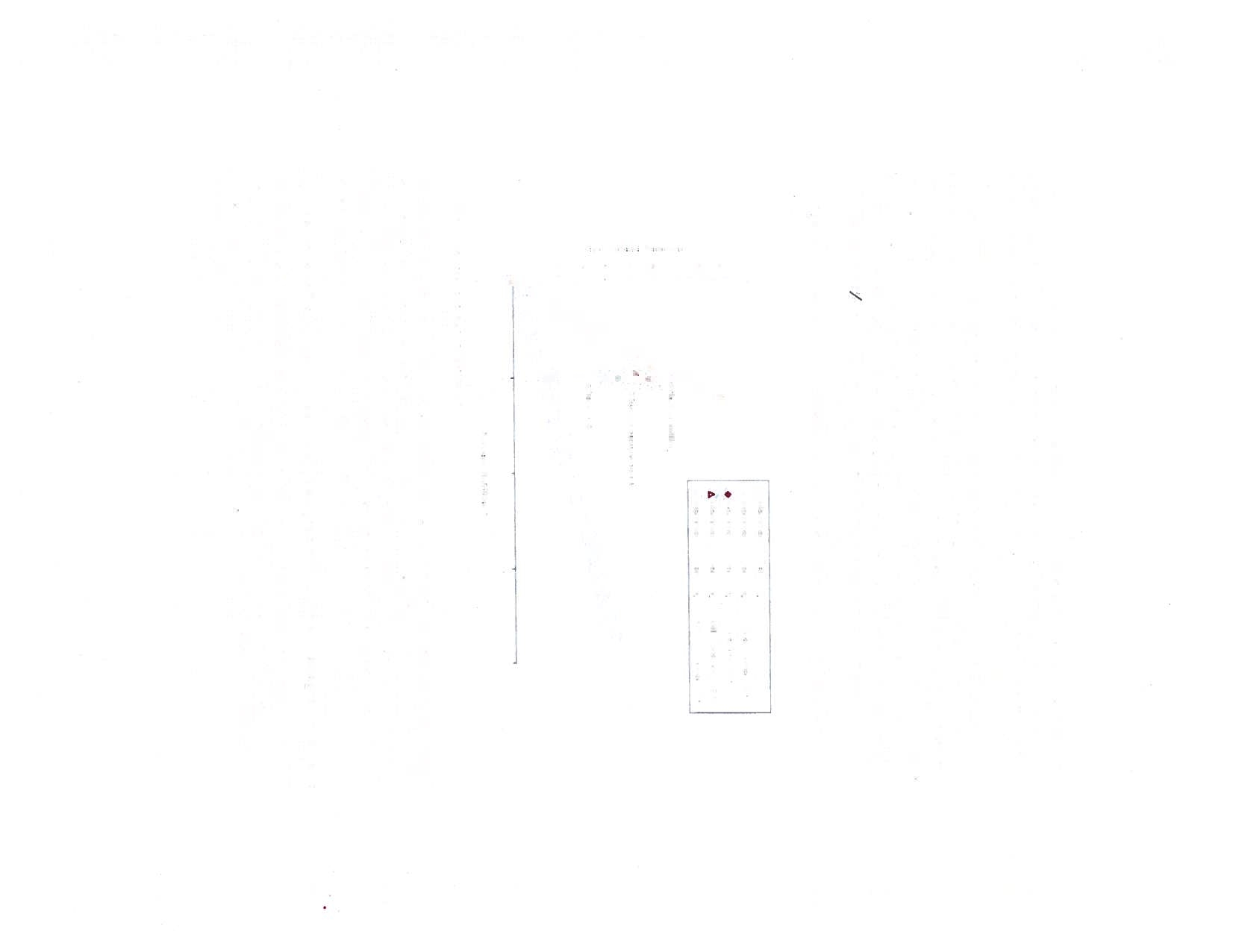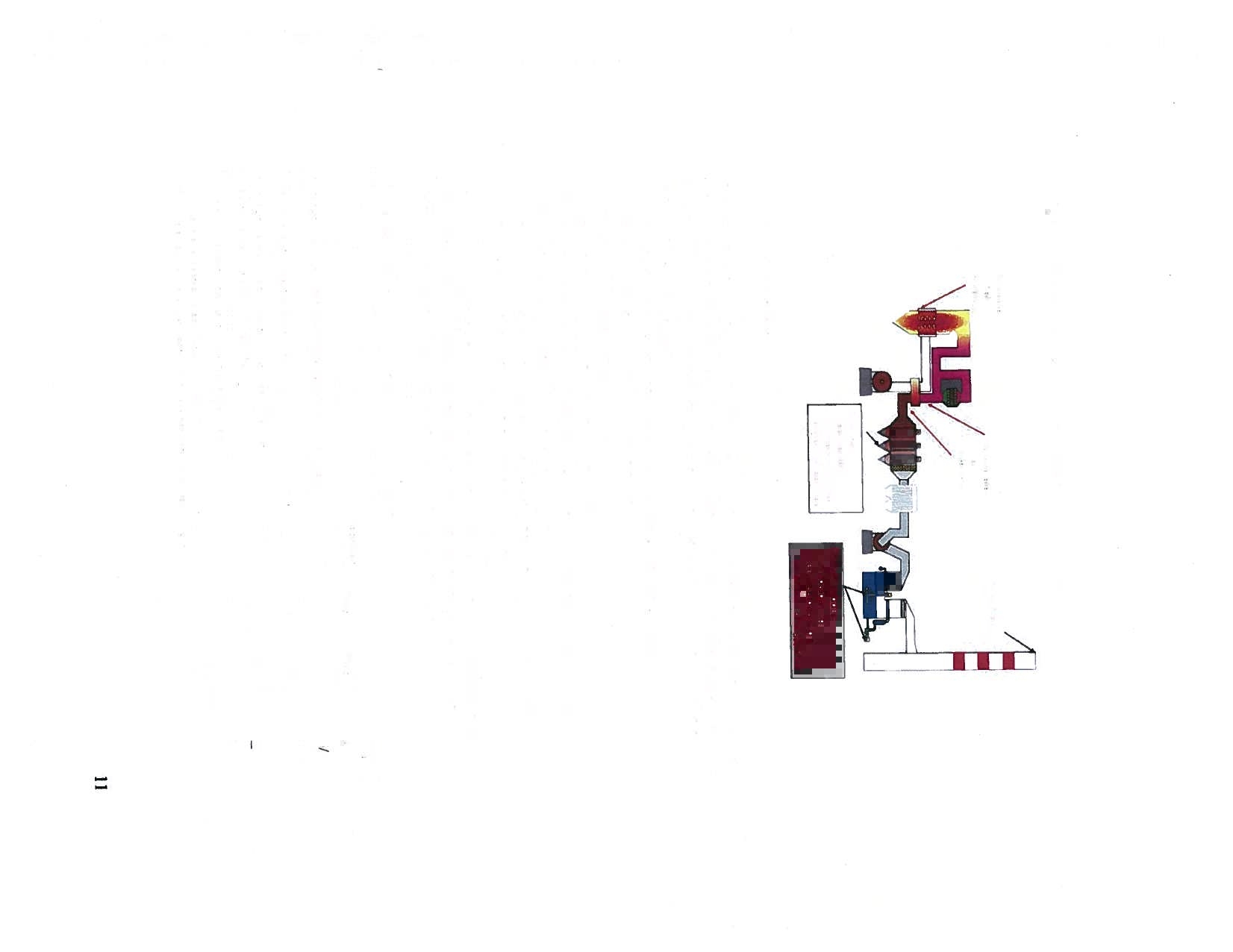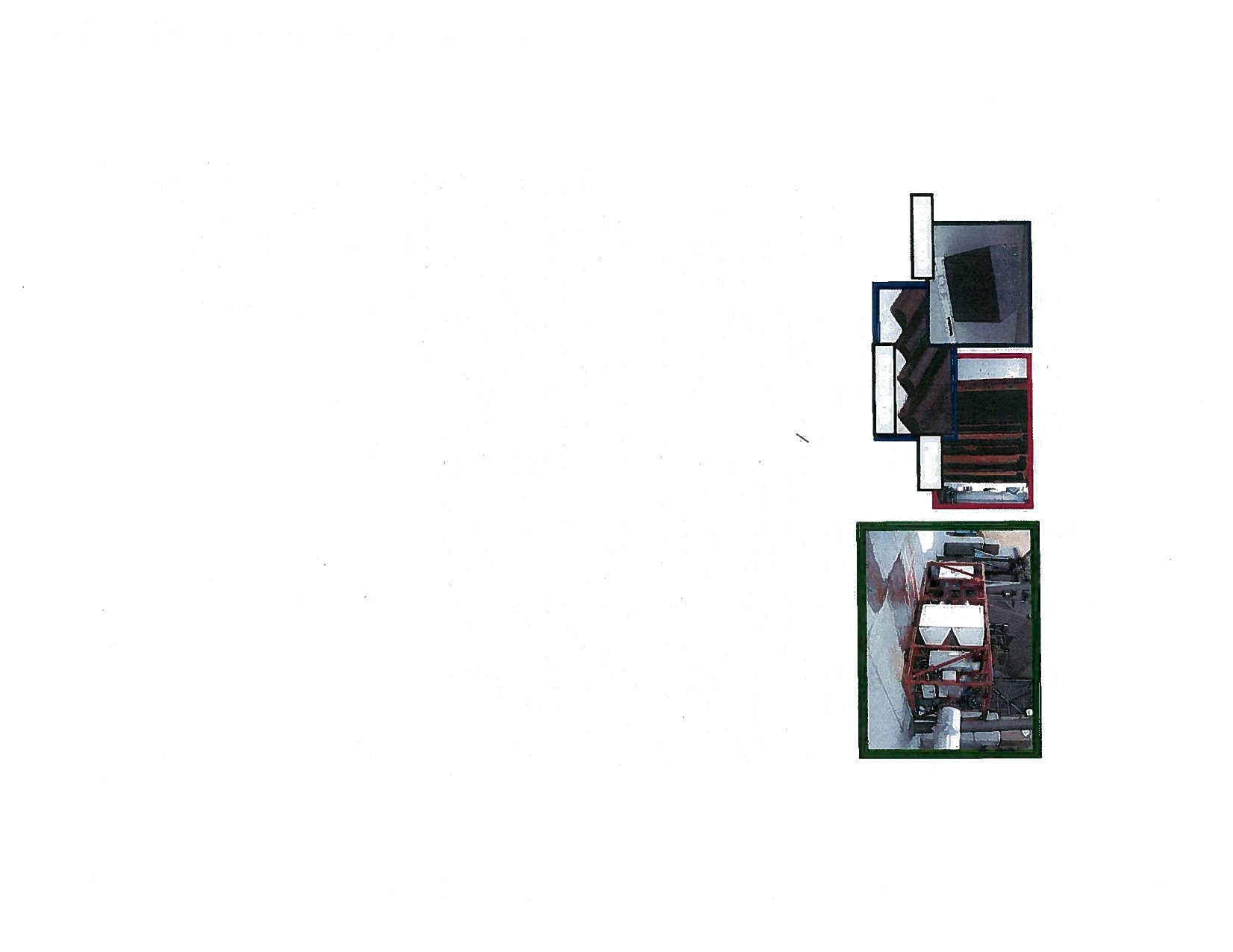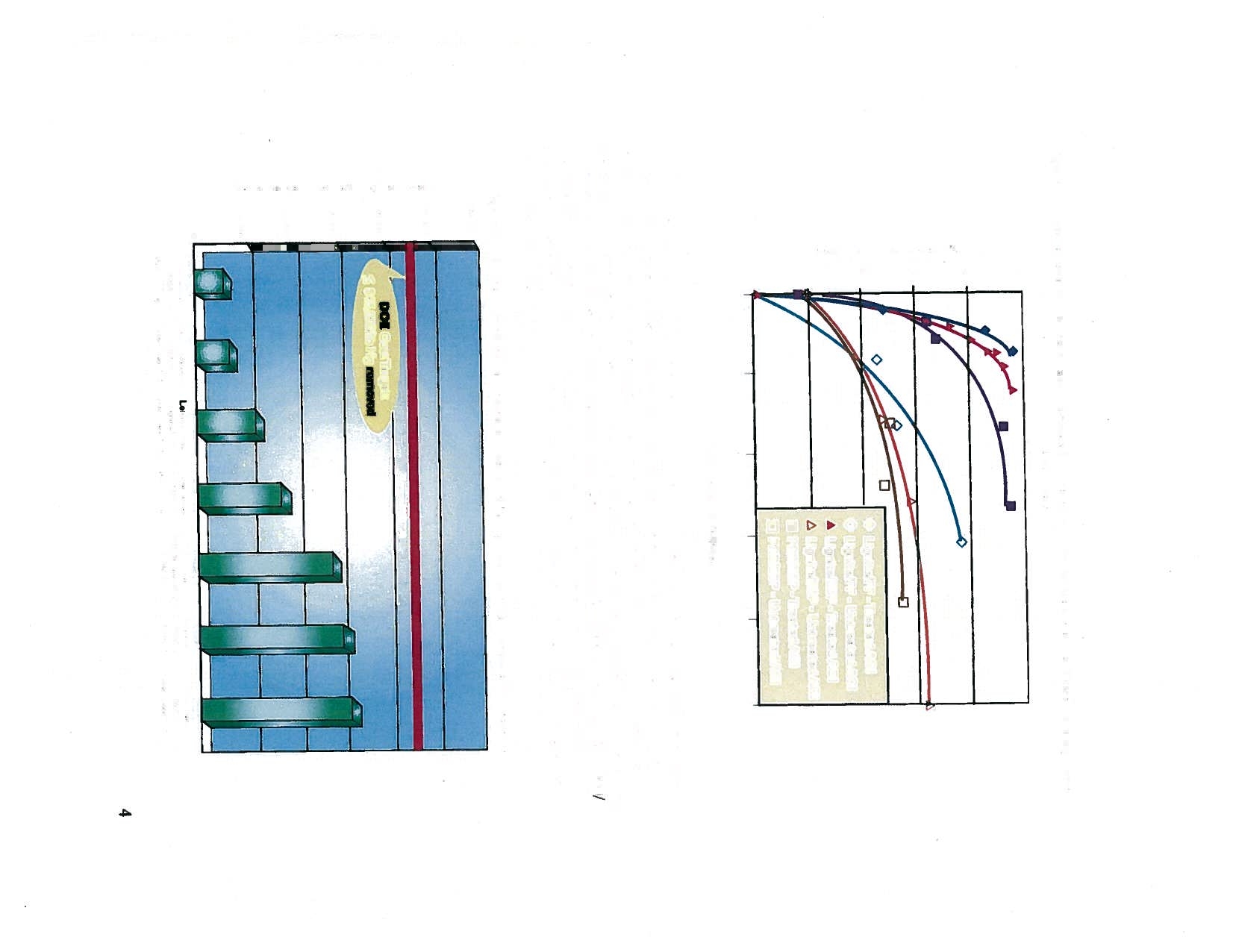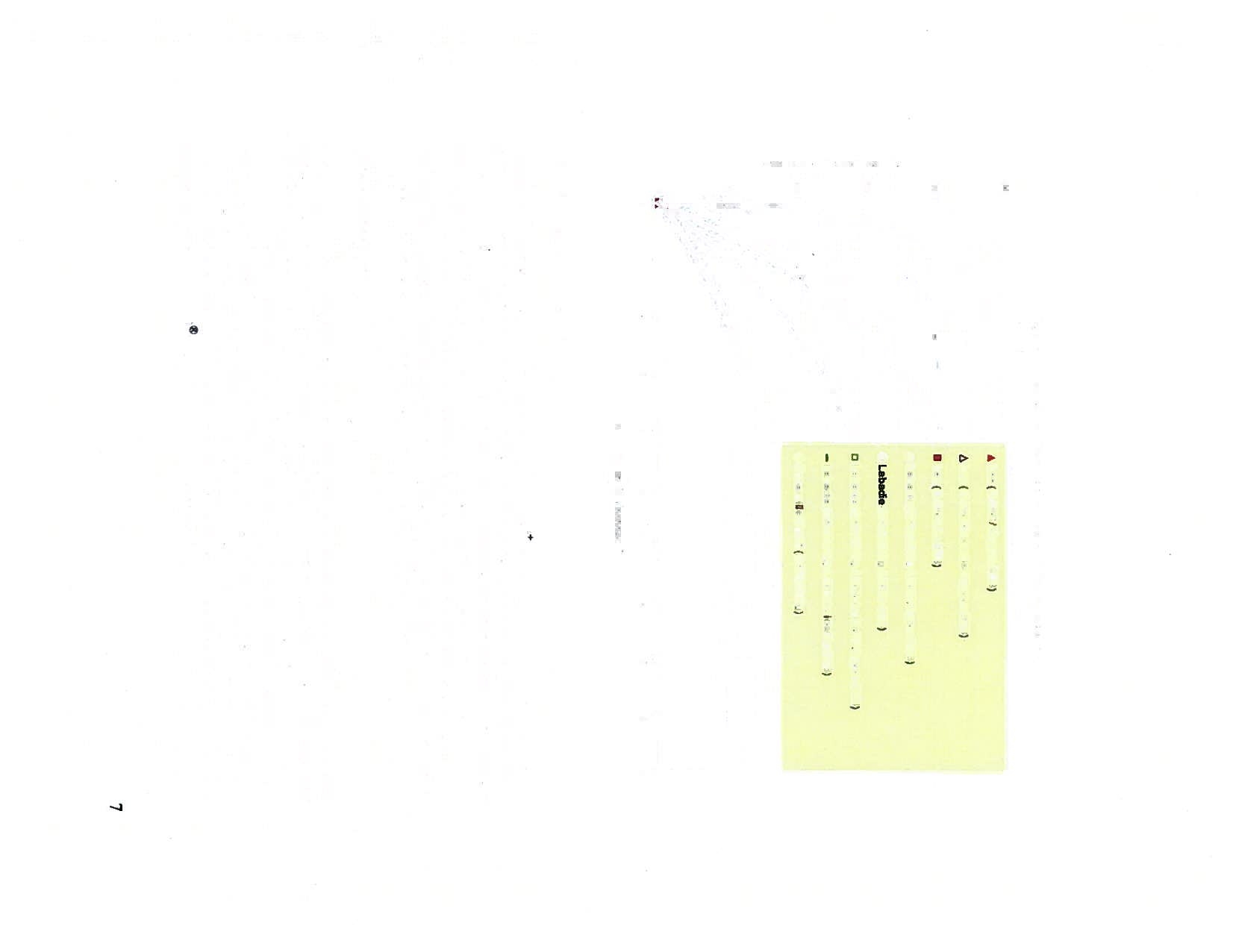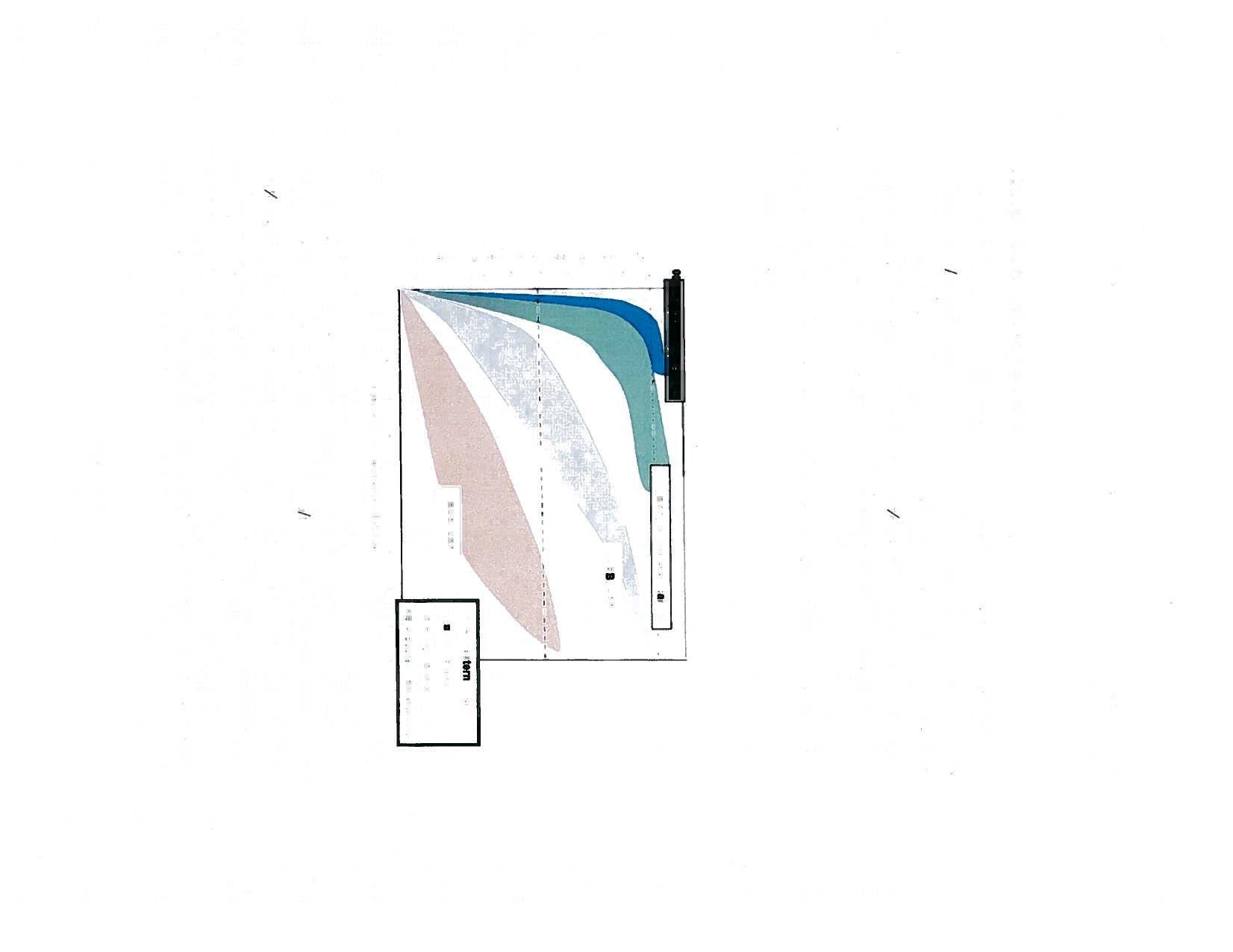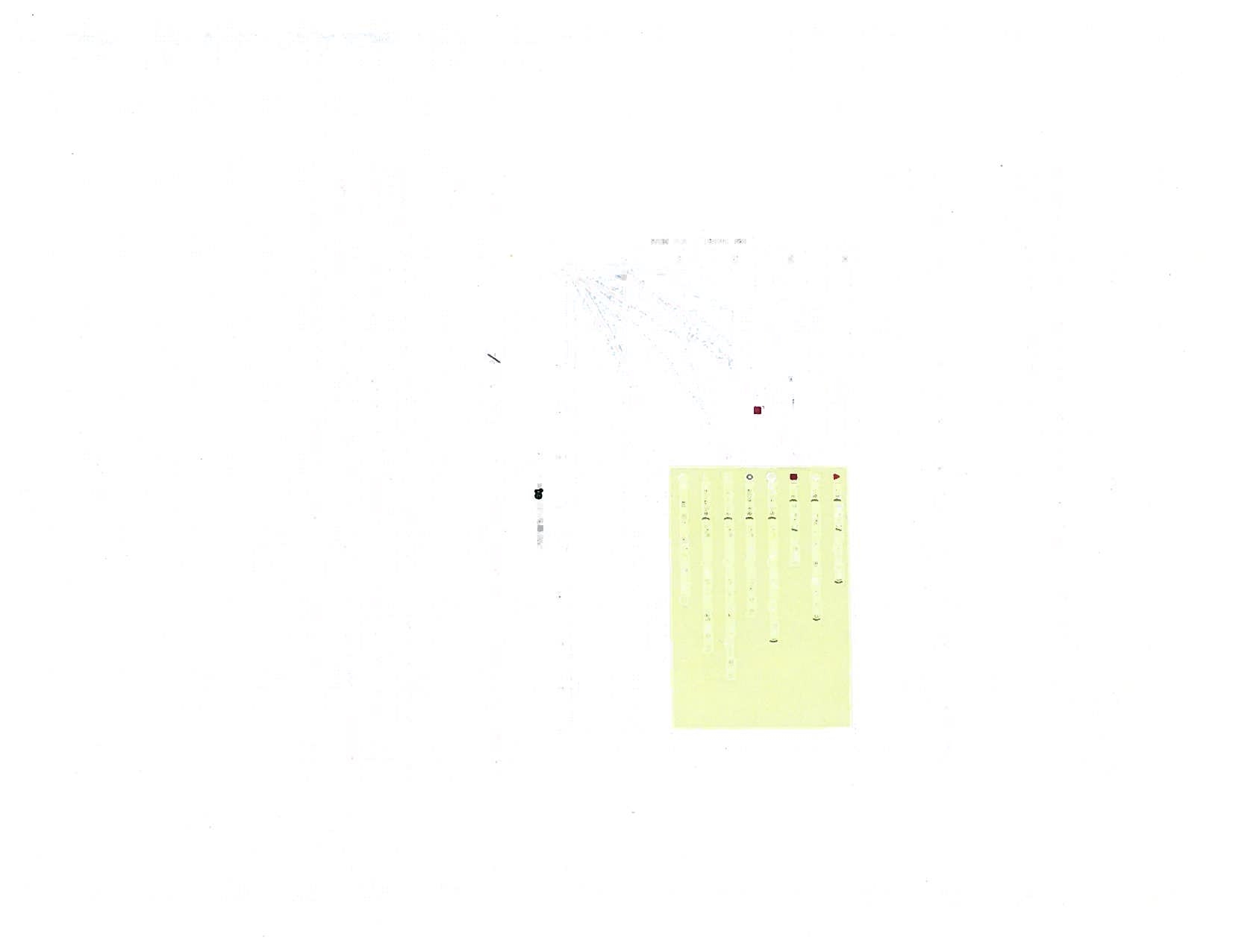BEFORE
THE
ILLINOIS
POLLUTION
CONTROL
BOARD
DYNEGY
MIDWEST
GENERATION,
INC.,
Petitioner,
ILLINOIS
ENVIRONMENTAL
PROTECTION
Agency,
To:
NOTICE
OF
FILING
John
Therriault,
Assistant
Clerk
Illinois
Pollution
Control
Board
James
R.
Thompson
Center
Suite
11-500
100
West
Randolph
Chicago,
Illinois
60601
Illinois
Environmental
Protection
Agency
Division
of
Legal
Counsel
1021
North
Grand
Avenue,
East
P.O.
Box
19276
Springfield,
Illinois
62794-9276
PLEASE
TAKE
NOTICE
that
we
have
today
electronically
filed
with
the
Office
of
the
Clerk
of
the
Pollution
Control
Board
PETITION
FOR
VARIANCE,
AFFIDAVIT
OF
ARIC
D.
DIERICX,
and
APPEARANCES
OF
KATHLEEN
C.
BASSI
AND
STEPHEN
J.
BONEBRAKE,
copies
of
hich
are
herewith
served
upon
you.
Dated:
January
9,
2009
Kathleen
C.
Bassi
Stephen
J.
Bonebrake
SCHIFF
HARDEN,
LLP
6600
Sears
Tower
233
South
Wacker
Drive
Chicago,
Illinois
60606
312-258-5500
V.
)
)
)
)
)
PCB
09-
)
Variance
—
Air
)
)
)
Electronic Filing - Received, Clerk's Office, January 9, 2009
BEFORE
THE
ILLINOIS
POLLUTION
CONTROL
BOARD
DYNEGY
MIDWEST
GENERATION,
INC.,
)
)
Petitioner,
)
)
v.
)
PCB
09-
)
Variance
—
Air
ILLINOIS
ENVIRONMENTAL
)
PROTECTION
AGENCY,
)
)
APPEARANCE
I,
KATHLEEN
C.
BASSI,
hereby
file
my
appearance
in
this
proceeding
on
behalf
of
Petitioner,
DYNEGY
MIDWEST
GENERATION,
INC.
Kathleen
C.
Bassi
SchiffHardin
LLP
6600
Sears
Tower
233
South
Wacker
Drive
Chicago,
Illinois
60606
312-258-5500
kbassi@schiffhardin.com
Dated:
January
9,
2009
Electronic Filing - Received, Clerk's Office, January 9, 2009
BEFORE
THE
ILLINOIS
POLLUTION
CONTROL
BOARD
DYNEGY
MIDWEST
GENERATION,
INC.,
)
)
Petitioner,
)
)
v.
)
PCB
09-
)
Variance
—
Air
ILLINOIS
ENVIRONMENTAL
)
PROTECTION
Agency,
)
)
APPEARANCE
I,
STEPHEN
J.
BONEBRAKE,
hereby
file
my
appearance
in
this
proceeding
on
behalf
of
Petitioner,
DYNEGY
MIDWEST
GENERATION,
INC.
Stfen
3.
Bonebrake
Schiff
Hardin
LLP
6600
Sears
Tower
233
South
Wacker
Drive
Chicago,
Illinois
60606
312-258-5500
sbonebrake@schiffhardiri.com
Dated:
January
9,
2009
Electronic Filing - Received, Clerk's Office, January 9, 2009
BEFORE
THE
ILLINOIS
POLLUTION
CONTROL
BOARD
DYNEGY
MIDWEST
GENERATION,
INC.,
)
)
Petitioner,
)
)
v.
)
PCB
09-
)
Variance
—
Air
ILLINOIS
ENVIRONMENTAL
)
PROTECTION
Agency,
)
)
Respondent.
)
PETITION
FOR
VARIANCE
NOW
COMES
Petitioner,
DYNEGY
MIDWEST
GENERATION,
NC.
(“Petitioner”
or
“DMG”),
by
and
through
its
attorneys,
SCHIFF
HARDFN,
LLP,
and,
pursuant
to
Sections
35
and
37
of
the
Environmental
Protection
Act
(“Act”),
415
ILCS
5/3
5,
37,
and
35
Ill.Adm.Code
Part
104,
Subpart
B,
respectfi.illy
requests
that
the
Board
grant
the
Petitioner
a
variance
from
certain
provisions
of
the
Illinois
Multi-Pollutant
Standard
(“MPS”),
35
Ill.Adm.Code
§
225.233,
as
applied
to
Unit
3
at
the
Baldwin
Energy
Complex
for
the
limited
period
beginning
July
1,
2009,
and
ending
March
31,
2010.
Specifically,
DMG
seeks
a
variance
at
Baldwin
Unit
3
from
the
MPS
requirement
in
Sections
225.233(c)(1)(A)
and
225.233(c)(2)
to
inject,
beginning
July
1,
2009,
halogenated
activated
carbon’
at
a
minimum
injection
rate
of
5.0
pounds
per
million
actual
cubic
feet
(“lbs/macf”)
exhaust
gas
flow
and
from
related
monitoring,
recordkeeping,
and
reporting
provisions
at
Sections
225
.210(b)
and
(d)
and
Note:
“halogenated
activated
carbon”
and
“sorbent”
are
used
interchangeably
in
this
Petition.
—1—
Electronic Filing - Received, Clerk's Office, January 9, 2009
225.233(c)(5).
DMG
will
suffer
arbitrary
or
unreasonable
hardship
if
the Board
does
not
grant
this
requested
variance.
In
support
of
its
Petition,
DMG
states
as
follows:
A.
DMG
GENERATES
ELECTRICITY
IN
ILLiNOIS
AT
FIVE
COAL-
FIRED
POWER
STATIONS.
I.
DMG
owns
and
operates
five
coal-fired
electricity
generating
power
plants
in
located
in
downstate
Illinois.
The
Baldwin
Energy
Complex
(“Baldwin”),
whose
Unit
3
is
the
subject
this
variance
request,
is
located
in
Randolph
County.
The two
other
coal-
fired
power
plants
affected
by
DMG’s
proposed
conditions
to
this
requested
variance
are
the Havana
Power
Station
(“Havana”)
located
in
Mason
County
and
the Hennepin
Power
Station
(“Hennepin”)
located
in
Putnam
County.
DMG’s
other
two
coal-fired
power
plants
are
the
Vermilion
Power
Station
located
in
Vermilion
County,
and
the
Wood
River
Power
Station
located
in
Madison
County.
A
map
depicting
the
location
of
each
of
DMG’s
coal-fired
power
plants
is
provided
in
Exhibit
1.
The
addresses
of
the
five
power
stations,
their
identification
numbers
assigned
by
the
Illinois
Environmental
Protection
Agency
(“Agency”),
age,
permit
application
numbers,
and
other
pertinent
information
regarding
their
output,
pollution
control
equipment,
and mercury
emissions
are
provided
in
Exhibit
2.
DMG
employs
approximately
588 persons
at
these
five
power
stations,
of
whom
approximately
175
are
employed
at
Baldwin.
2.
The
air
monitoring
stations
maintained
by
the
Agency
that
are
nearest
to
Baldwin,
as
well
as
Havana
and
Hennepin,
are
identified
in
Exhibit
.
Randolph
County,
the
location
of
Baldwin,
is
designated
nonattainment
for
PM2.5
and
attainment
2
Exhibit
1
identifies
the
locations
of
all
five
of
DMG’s
coal-fired
power
plants,
including
Baldwin,
Havana
and
Hennepin,
on
a
copy
of
the
map
from
the
Agency’s
illinois
Annual
Air
Quality
Report
2006
(at
p.
34),
which
identifies
the
locations
of
the
Agency’s
air
quality
monitoring
stations.
-2-
Electronic Filing - Received, Clerk's Office, January 9, 2009
(or
unclassifiable/attainment)
for all
other
criteria
pollutants.
Mason
and
Putnam
Counties,
the respective
locations
of
Havana
and
Hennepin,
are
designated
attainment
(or
unclassifiable/attainment)
for
all
criteria
pollutants.
See
40
CFR
§
81.3
14;
USEPA’s
Green
Book
(list
of
national
attainment
and
nonattainment
designations)
at
http://www.epa.gov/oar/oagps/greenbkl.
3.
The
principal
emissions
at
DMG’s
coal-fired
power
plants
are
sulfur
dioxide
(“SO
2
”),
nitrogen
oxides
(“NOx”),
and
particulate
matter
(“PM”).
As
relevant
to
this
Petition,
coal-fired
power
plants
also emit
mercury.
SO
2
is
currently
generally
controlled
through
the
use
of
low
sulfur
coal.
Additionally,
DMG
has
construction
permits
for
and
is
constructing
spray
dryer
absorbers
(i.e.,
dry
scrubbers)
with
fabric
filter
(i.e., baghouse)
systems
on
all
three
Baldwin
units,
as
well
as
on
Havana
Unit
6,
and
DM0
is
installing
a
fabric
filter
on
Hennepin
Unit
2.
All
of
these
dry
scrubbers
are
scheduled
to
be
placed
into
service
by
December
31,
2012.
In
fact,
the
Baldwin
Unit
3
outage
scheduled
to
begin
in
March
2010
will
be
used
to
install
its
dry
scrubber
and
fabric filter.
DMG
did
not
defer
its
plans
to
install
dry
scrubbers
in
light
of
the
remand
of
the
federal
Clean
Air
Interstate
Rule
(“CAIR”)
in
North
Carolina
v.
EPA,
531
F.3d
896
(D.C.
Cir.
2008).
When
placed
into
service,
these
dry
scrubbers
will
significantly
reduce
DMG’s
system-wide
4
SO
2
emission
rate.
NOx
emissions
are
generally
controlled
by
various
combinations
of
low
sulfur
coal,
low
NOx
burners,
over-fire
air,
and
selective
As
of
the
date
of
submittal
of
this
Petition
for
Variance
to
the
Board,
the
court in
North
Carolina
has
remanded
the
CAIR
to
the U.S.
Environmental
Protection
Agency
(“USEPA”)
without
vacatur.
See
North
Carolina
v.
EPA,
No.
05-1244
((D.C.
Cir.
Dec.
23,
2008)
(Order
remanding
rule
without
vacatur).
“System-wide”
refers
only
to
DMG’s
coal-fired
units
subject
to
the
Illinois
mercury
rule,
35
Ill.Adm.Code
Part
225.Subpart
B.
-3-
Electronic Filing - Received, Clerk's Office, January 9, 2009
catalytic
reduction
systems
(“SCRs”).
PM
is
generally
controlled
through
the
use
of flue
gas
conditioning,
electrostatic
precipitators
(“ESPs”),
and
fabric
filter
systems.
In
accordance
with
the
provisions
of
the
MPS
established
in
the
Illinois
mercury rule,
DM0
will
control
mercury
emissions
by
injection
of
halogenated
activated
carbon
in
conjunction
with
SCRs,
dry
scrubbers,
ESPs,
and
fabric
filters.
4.
DM0 has
never
previously
sought
or obtained
a variance
from
the
Board.
To
the
best
of
DMG’s
knowledge,
a
prior
owner
of Baldwin
once
before
obtained
a
Board
variance
for
Baldwin
on
an
unrelated
matter
(i.e.,
PCB
1999-0002,
granting
a 45-day
provisional
variance
from
conditions
and
effluent
discharge
limits
in
35
1ll.Adm.Code
§
304.120
and
304.141(b)
in
July
1998)
but
not
concerning
similar
relief.
B.
DMG SUPPORTED
THE
MPS
IN
2006
TO
COORDINATE
MERCURY
EMISSION
CONTROLS
WITH
OTHER
EMISSION
CONTROL
REQUIREMENTS.
5.
In
May
2005, USEPA
promulgated
the
Clean
Air
Mercury
Rule
(“CAMR”),
70
Fed.
Reg.
28606 (May
18,
2005), to
reduce
mercury
emissions
from
coal-
fired
electric
generating
units
(“EGUs”)
in
the
lower
48
states.
The
federal
CAMR,
which applied
to EGUs
with
nameplate
capacities
greater
than
25
megawatts,
established
caps
on
the
mercury
emissions
for
each
affected
state
and
allowed
states
to
participate
in
USEPA-administered
emissions
trading
programs
if
their
state
programs
met
certain
minimum
requirements.
DMG’s
coal-fired
power plants
are
EGUs
that
were
subject
to
the
federal
CAMR.
6.
In
December
2006,
the
Board
adopted
the
Illinois
mercury
rule
at
R06-25
to
satisfy
the
federal
CAMR
requirements
in
Illinois.
The
rule
adopted
by
the
Board
differs
significantly
from
the
federal
CAMR in
a
very
important
way:
the
Illinois
-4-
Electronic Filing - Received, Clerk's Office, January 9, 2009
mercury
rule
adopts a
command-and-control
approach
that
requires
affected
coal-fired
power
plants
to
achieve
a
90% reduction
from
input
mercury
or
an
emission
rate
of
0.0080
lb
mercury/GWh
gross
electrical
output
5
and
rejects
participation
in
the
federal
mercury
emissions
trading
program.
6
7.
In
2006, when
the
Agency
was
developing
its
mercury
rule,
DMG
was
also
simultaneously
faced
with
developing
a
compliance
strategy
to
meet
future
emission
reduction requirements
under
both
the
Illinois
CAIR
and
the
Consent
Decree
DMG
had
entered
with,
among
others,
the
federal
government.
7
The
CAIR
establishes
a
state-wide
cap
on
SO
2
and
NOx
emissions
from
EGUs
that
must
be
implemented
through
emission
reductions
and/or
emissions
allowance
trading.
In
general,
the
Consent
Decree
requires
DM0
to
reduce
SO
2
,
NOx,
and
PM
emissions
at
its
five
coal-fired
power
plants
and
mercury
at
the
Vermilion
Power
Station
through
a
combination
of
enforceable
emission
limits,
installation
of
mandatory
pollution
control
and
monitoring
technology,
and
SO
2
and
NOx
allowance
restrictions,
with
full
compliance
to
be
achieved
by
the
end
of
2012.
8.
DM0
evaluated
its
environmental
compliance
strategy
in
light
of
the
available
pollution
control
technologies,
including
use
of
potential
co-benefit
emission
control
technologies
that
reduce
not
only
mercury
but
also
NOx
and/or
SO
2
.
DM0
Hereinafter,
this
Petition
refers
only
to
the
90% reduction
compliance
option
for
the
sake
of
simplicity.
6
The
CAMR
was
vacated
by
State
of
New
Jersey
v.
Environmental
Protection
Agency,
517
F.3d
574
(D.C.
Cir.
2008),pet.for
cert.filed,
77
U.S.L.W.
3253
(U.S.
Oct.
17,
2008) (No.
08-5
12).
‘
United States,
et
al.
v.
Illinois
Power
Co.,
et
al.,
No.
99-CV-833-MJR
(S.D.
Ill.)
(Consent
Decree
entered
May
27,
2005)
(a
copy
of
the
Consent
Decree
as
originally
entered
is
available
at
<www.epa.
gov/compliance/resources/cases/civilfcaa/
illinoispower.html
>
under
the
link
“Consent
Decree.”
-5-
Electronic Filing - Received, Clerk's Office, January 9, 2009
determined
that
the best
approach
to implementing
reasonable and effective
air
emissions
reductions
from its coal-fired
power
plants
was
for the Agency
to
adopt
a comprehensive
approach that
would address
mercury
emissions
in
coordination
with
other
air emission
reduction requirements.
While
recognizing
that
the
injection
of halogenated
activated
carbon can reduce
mercury emissions,
DM0 did not
believe that considerably
high
levels
of mercury removal
at all units
could
be achieved in the short
run or that
the
reductions
could
be
measured
with sufficient
accuracy
to
assure
compliance
with
the Illinois
mercury
emission
limits.
9.
DM0
determined that
compliance with
its Consent
Decree, the Illinois
CAIR and the
Illinois mercury nile could
require the
installation of various
combinations
of pollution control
equipment.
The pollution
control equipment
necessary
for DM0
to
meet
its
NOx
limits
(i.e.,
SCRs) and SO2 limits
(i.e.,
dry
scrubbers)
for the
CAIR,
as
well
as fabric filters
for PM control
under
the Consent Decree, also
enhance a
source’s ability
to
reduce
mercury
emissions and,
therefore,
enhance DMG’s
ability
to ensure
compliance
with
Illinois’
mercury
emissions
limits. These
same combinations
of
control
technologies
were necessary
for DMG to
comply with the
Consent Decree,
the
CAIR, and
the Illinois
mercury rule; however,
all of the pollution
control equipment
could not
be
installed
by
the
earliest compliance
date, i.e.,
July 1, 2009,
the
initial
compliance
deadline
for the
Illinois mercury
rule.
Thus,
coordination of
these separate regulatory
emission
reduction
requirements
was
essential.
10.
For these
reasons, DMG
(and
other electricity
generators
in
Illinois)
worked
with
the Agency
on
a
proposal
to coordinate
the
intertwined
mercury,
NOx,
and
SO
2
emissions
control planning.
That effort
resulted
in the
MPS,
which
was
adopted
by
-6-
Electronic Filing - Received, Clerk's Office, January 9, 2009
the
Board
as part
of the
Illinois
mercury
rule at Section
225.233.
DMG
opted in
to
the
MPS on
November
26,
2007,
see Ex.
38
11.
The
MPS
requires
DM0
to install
and operate
halogenated
activated
carbon
injection
systems
to control
mercury emissions
but extends
the
deadline
to
demonstrate
compliance
with
the rule’s
overall
90%
mercury
reduction
requirement
until
2015.
Prior to
2015
DM0
units
are subject
to
the
sorbent
injection
rate
requirements.
The
MPS also
establishes
strict, declining
emissions
limits
for NOx
and
SO2 over a
period
of time,
including
a system-wide
SO2
limit
of
0.24
lb/mmBtu
in
2013,
declining
to
a
rate of
0.19 lb/mmBtu
in 2015,
and precludes
trading
of any
excess NOx
and
SO
2
allowances
that may
be generated
by
the pollution
control
equipment
necessary
to
meet
the
applicable
emissions
limitations.
As
a
result, because
the
MPS and the
Consent
Decree each
restrict
the emissions
trading
otherwise
available
under the
CAIR,
DMG
must
install and
operate pollution
control
equipment
and
cannot rely
on
allowance
purchases
as a
compliance
strategy
or
compliance
timing tool.
12.
In order
for
it to meet
the emission
reduction
requirements
of the MPS
and
the
Consent Decree,
DM0 must
plan for
and finance
the purchase
of
the
necessary
pollution
control equipment.
Since the
MPS and
Consent
Decree
require
compliance
with
specified
emissions
rates, DM0
does not
have
the
flexibility
available to
other
companies
to
delay
this
equipment
planning
and
financing
through
purchases
of
allowances
to
satisfy its compliance
obligations
until
the
financial,
labor,
and
equipment
markets
are
more
advantageous.
The
procurement
process
for So
2
,
PM,
and
mercury
8
DMG’s
MPS
Group
includes
each of
the
10 individual
coal-fired
units located
at
its
five power
stations, as
required to
be
included
in a single
MPS
group
by
Section
225.233(a)(2).
-7-
Electronic Filing - Received, Clerk's Office, January 9, 2009
pollution
control
devices
— each of
which alone involves
significant
equipment
and
engineering —
is
approximately
three to five years.
For example,
in order for Baldwin
Unit 3 to comply
with its
SO
2
emission
rate
requirements by
the
end
of 2010, DMG
commenced
its
procurement
process
in
2007.
The estimated
time for
actual construction,
tie-in, commissioning,
startup,
and testing of
a dry scrubber is approximately
three years.
From
engineering
concept to
online operation,
including permitting,
the
period
is
approximately
four and one-half
years.
13.
DMG has
estimated that its capital
costs
of compliance
with
the
Illinois
mercury rule
(including the MPS)
and
its
Consent
Decree would
be a total of
$973
million
by
2013. These estimates
may change
depending
on
additional federal
or state
requirements
(including
any
related
to the
CAIR
remand),
the ultimate
outcome
of any
appeals
relative
to
the CAMR
vacatur, new
technology, or
variations
in costs of material
or
labor, among other reasons.
14.
Given the
large
capital
and operations and maintenance
(“O&M”) projects
involved
in
pollution
control
decisions at each
of
its
five coal-fired power
plants,
DMG
must
proceed
cautiously to
maintain its financial
resources
and
operational flexibility,
as
well
as the integrity of the
electricity
generation
system
that supports
Illinois’
economy.
DM0
continues
to
evaluate
compliance
strategies
at
each of
its
coal-fired
power
plants
to
identify
the optimal
locations
for
investments
and
expenditures
consistent
with
the goal of
maintaining
operational
flexibility
within
a competitive
energy market.
-8-
Electronic Filing - Received, Clerk's Office, January 9, 2009
C.
DMG
REQUIRES
TEMPORARY
RELIEF
FROM
SECTIONS
225.233(c)(1)(A),
SECTION
225.233(c)(2), 225.210(b),
225.210(d)
AND
225.233(c)(5)
AT
BALDWIN
UNIT
3 TO
AVOID WASTING
LIMITED
RESOURCES AND
TO
PROVIDE OPERATING
FLEXIBILITY
IN
CONJUNCTION
WITH ITS
OTHER
ENVIRONMENTAL
OBLIGATIONS.
15.
DM0
seeks
this
variance
because making
capital and operating
expenditures
to install and
operate
a
halogenated activated
carbon
injection system on
Baldwin
Unit
3
that will
need
to be removed
and
re-located
nine months
after July 1,
2009,
upon installation of the
dry scrubber and fabric
filter
systems
on Baldwin Unit 3
is
not financially
prudent, would
divert
capital
and operating
expenditures
that could
be
otherwise
better
spent,
and
will result in adverse environmental
effects. DMG faces
arbitrary
and
unreasonable hardship
if it is not granted
the variance
and allowed
to
make
responsible
operating decisions
regarding
the
best
combinations of
actions to
address
the
myriad
compliance requirements
of the MPS and Consent
Decree.
16.
Specifically,
DM0
seeks
relief
from
the
requirement
in Sections
225.233(c)(1)(A)
and
225.233(c)(2) that
it inject
halogenated
activated
carbon
in Baldwin
Unit
3
beginning
July
1, 2009,
at a rate
of
5.0 lbs/macf
exhaust
gas
and from the related
monitoring,
recordkeeping,
and
reporting
provisions of
Sections 225.210(b)
and (d) and
225.233(c)(5).
Sections
225.233(c)(l)(A)
and 225.233(c)(2)
of
the MPS provide,
in
relevant
part:
9
c)
Control Technology Requirements
for Emissions
of
Mercury.
1)
Requirements
for EGUs in
an
MPS Group.
Excluding amendments
currently proposed
in Docket
R09-10
to
add sorbent
manufacturers
to
the
approved
list;
DMG
would
expect
to be
able
to use the
additional
sorbent
manufacturers
if the
Board adopts those
amendments.
-9-
Electronic Filing - Received, Clerk's Office, January 9, 2009
A)
For
each
EGU
in
an
MPS
Group
other
than
an
EGU
that
is
addressed
by
subsection
(c)(1)(B)
of
this
Section
for
the
period
beginning
July
1,
2009...
and
ending
December
31,2014..
.
,the
owner or
operator
of
the
EGU
must
install,
to
the
extent not
already
installed,
and
properly
operate
and
maintain
one
of
the
following
emission
control
devices:
i)
A
Halogenated
Activated
Carbon
Injection
System,
complying
with
the
sorbent
injection
requirements
of
subsection
(2)
of
this
Section.
2)
For
each
EGU
for
which
injection
of
halogenated
activated
carbon
is required
by
subsection
(c)(1)
of
this
Section,
the
owner
or
operator
of the
EGU
must
inject
halogenated
activated
carbon
in
an
optimum
manner,
which,
except
as
provided
in
subsection
(c)(4)
of
this
Section,
is
defined as
all
of
the
following:
A)
The
use
of
an
injection
system
designed
for
effective
absorption
of
mercury,
considering
the
configuration
of
the
EGU
and
its
ductwork;
B)
The
injection
of
halogenated
activated
carbon
manufactured
by
Aistom,
Norit, or Sorbent
Technologies,
or
the
injection
of
any
other
halogenated
activated
carbon
or sorbent
that
the
owner or
operator
of
the
EGU
has
demonstrated
to
have
similar
or
better
effectiveness
for
control of
mercury
emissions;
and
C)
The
injection
of sorbent
at
the
following
minimum
rates,
as
applicable:
i)
For
an
EGU
firing
subbituminous
coal,
5.0
lbs
per
million actual
cubic
feet
or,
for
any
cyclone-fired
EGU
that
will
install
a
scrubber
and
baghouse
by
December
31,
2012,
and
which
already
meets
an
emission
rate
of
0.020
lb
mercury/GWh
gross
electrical
output
or
at
least
75 percent
reduction
of
input
mercury,
2.5
lbs
per
million
actual
cubic
feet;
-10-
Electronic Filing - Received, Clerk's Office, January 9, 2009
ii)
For
an
EGU
firing
bituminous
coal,
10.0
lbs
per
million
actual
cubic
feet
or
for
any
cyclone-fired
EGU
that
will
install
a
scrubber
and
baghouse
by
December
31,
2012,
and
which
already
meets
an
emission
rate
of
0.020
lb
mercurylGWh
gross
electrical
output
or
at
least
75
percent
reduction
of
input
mercury,
5.0
lbs
per
million
actual
cubic
feet;
iii)
For
an
EGU
firing
a
blend
of
subbituminous
and
bituminous
coal,
a
rate
that
is
the
weighted
average
of
the
above
rates,
based
on
the
blend
of
coal
being
fired;
or
iv)
A
rate
or
rates
set
lower
by
the
Agency,
in
writing,
than
the
rate
specified
in
any
of
subsections
(c)(2)(C)(i),
(c)(2)(C)(ii),
or
(c)(2)(C)(iii)
of
this
Section
on
a
unit-
specific
basis,
provided
that
the
owner
or
operator
of
the
EGU
has
demonstrated
that
such
rate
or
rates
are
needed
so
that
carbon
injection
will
not
increase
particulate
matter
emissions
or
opacity
so
as
to
threaten
noncompliance
with
applicable
requirements
for
particulate
matter
or
opacity.
D)
For
the
purposes
of
subsection
(c)(2)(C)
of
this
Section,
the
flue
gas
flow
rate
must
be
determined
for
the
point
of
sorbent
injection;
provided
that
this
flow
rate
may
be
assumed
to
be
identical
to
the
stack
flow
rate
if
the
gas
temperatures
at
the
point
of
injection
and
the
stack
are
normally
within
1000
F,
or
the
flue
gas
flow
rate
may
otherwise
be
calculated
from
the
stack
flow
rate,
corrected
for
the
difference
in
gas
temperatures.
Sections
225.210(b)
and
(d)
require
that
the
owners
or
operators
of
EGUs
subject
to
the
mercury
rule
comply
with
the
monitoring,
recordkeeping,
and
reporting
requirements
of
Sections
225.240
through
225.290.
Section
225.233(c)(5)
sets
forth
additional
—11—
Electronic Filing - Received, Clerk's Office, January 9, 2009
monitoring,
recordkeeping,
and
reporting
requirements
applicable
to
EGUs
that
have
opted
in
to
the
MPS.
Although
DMG
believes
that it
would
not
be
subject
to
these
monitoring,
recordkeeping,
and
reporting
requirements
if
it
were
granted
relief
from
the
underlying
substantive
requirements,
nevertheless,
DMG
is
seeking
relief
from
these
monitoring,
recordkeeping,
and
reporting
requirements
to
ensure
that
there
are
no
questions
in
this
regard.
17.
In
accordance
with
the
MPS,
DMG
must
begin
injecting
halogenated
activated
carbon
at
(i)
four
of
its
coal-fired
units
on
July
1,
2009
(Baldwin
Units
1-3,
Wood
River
Unit
5),
and
(ii)
five
of
its
units on
December
31,
2009
(Havana
Unit 6,
Hennepin
Units
1
and
2,
Vermilion
Units
1
and 2).’°
DMG
has
obtained
construction
permits
to
install
sorbent
injection
equipment
at
these
nine
units.
These
nine
units
represent
approximately
97%
of
DMG’s
installed
coal-fired
capacity.
18.
At
the
minimum
sorbent
injection
rate
specified
in
the
MPS,
DMG
estimates
it
would
need
to
inject
approximately
20
million
pounds
of
sorbent
during
each
12-month
period.
At
the
MPS’
minimum
injection
rate,
over
the
period
July
1,
2009,
through
December31,
20l4,
DMG
would
inject
more
than
115
million
pounds
of
sorbent
system-wide.
With
vendor
bids
for
halogenated
activated
carbon
plus
delivery
currently
in
excess
of
$1
per pound,
the
injection
of
sorbent
will
represent
a
significant
operating
expense
for
DMG’s
MPS
units.
At
the
minimum
injection
rate of
the
MPS,
DM0
estimates
that
sorbent
injection
at
Baldwin
Unit
3
alone,
from
July
1,
2009,
through
10
As
required
by
the
Consent
Decree,
DM0
has
already
installed
and is
operating
a
fabric
filter
system
with
sorbent
injection
at
its
Vermilion
Power
Station.
Wood
River
Unit
4
is
not
required
to
begin
injecting
sorbent
until
January
1,
2013.
-12-
Electronic Filing - Received, Clerk's Office, January 9, 2009
March
31,
2010, would
amount
to
4 million
pounds
of
sorbent
at an approximate
cost of
$4
million.”
19.
Baldwin
Unit
3
emissions
are currently
controlled
by
a
cold-side
ESP,
which
includes
SO3
injection.
If
subject
to the MPS
mercury requirements
beginning
July 1,
2009,
DM0 would
be
required to
install
a sorbent
injection
system
upstream
of
the
cold-side
ESP in
order
for the
mercury/halogenated
activated
carbon
residue
to be
removed
from
the
flue
gas
prior
to
being
emitted.
In
its scheduled
spring
2010 outage,
Baldwin
Unit
3
will
be
retrofitted
with a
dry
scrubber
and
a
new
fabric
filter
system to
meet
emission
reduction
requirements
under
the Illinois
CAIR
and
the
Consent
Decree.
As
a
result,
when
Baldwin Unit
3
resumes
operation
in 2010 after
the
spring
outage,
it
will
be
re-configured
with
a
sorbent
injection
system
located
downstream
of
the ESP
and
upstream of
the
fabric
filter
system.
This configuration
will
allow DM0
to
collect fly
ash
in the
ESP
prior
to
the injection
of
activated
carbon
into the
flue gas stream,
with
the
activated
carbon
residue
removed
in
the
fabric
filter system
and
subsequently
disposed.
20.
The
installation
of sorbent injection
lances
in the ductwork
upstream
of the
ESP
on
Baldwin
Unit
3 in
order
to
meet the
MPS mercury
requirements
beginning
July
1,
2009,
would
require
a multi-day
unit
outage
and
result
in the loss
of
operating
revenue
(i.e.,
this
unplanned
outage
would not
be required
if the injection
equipment
was
installed
as
part of
the
spring
2010 fabric
filter
retrofit
outage).
DMG
estimates
that
it
will cost
approximately
$100,000
to
install
the injection
equipment
upstream
of the
ESP;
re
locating it
after
nine months
to
a
location
downstream
of
the ESP would
increase
these
Notably,
in the
economic
analysis
to
support
its mercury
rule,
the
Agency
estimated the
cost
of
halogenated
activated
carbon
at only
80
cents per
pound.
R06-25,
Tr.
at 81
(June
22, 2006).
-13-
Electronic Filing - Received, Clerk's Office, January 9, 2009
installation
costs
accordingly.
Injection
into
the
flue
gas
stream
upstream
of
an
ESP
provides
an
opportunity
for
mercury
removal
only
while
the
sorbent
is
suspended
in
the
flue
gas
stream.
In
contrast,
injection
upstream
of
a
fabric
filter
system
provides
opportunity
for
mercury
removal
while
the
activated
carbon
is
suspended
in
the
flue
gas
stream
and
even
greater
mercury
removal
when
the
sorbent
is
located
on
the
surface
of
the
bags.
The
increased
contact
between
the
flue
gas
and
mercury
particles
increases
the
mercury
removal
efficiency.
21.
An
evaluation
of
DMG’s
fleet
has
revealed
a
viable
alternative
to
the
installation
and
operation
of
a
sorbent
injection
system
on
Baldwin
Unit
3
prior
to
the
installation
of
the
fabric
filter
system
in
spring
2010.
Rather
than
wasting
resources
at
Baldwin
Unit
3
by
installing
a
sorbent
injection
system
upstream
of
the
cold-side
ESP
in
order
to
meet
the
July
1,
2009,
MPS
sorbent
injection
deadline,
only
to
have
to
remove
it
within
nine
months,
DMG
proposes
an
alternative
that
will
result
in
a
net
environmental
benefit.
22.
Specifically,
instead
of
injecting
sorbent
beginning
July
1,
2009,
at
Baldwin
Unit
3,
DMG
proposes
to
inject
sorbent
at
Havana
Unit
6
and
Hennepin
Unit
2
six
months
before
the
MPS
deadline
applicable
to
these
units.
The
overall
mercury
reductions
to
be
achieved
by
Havana
Unit
6
and
Hennepin
Unit
2
will
be
largely
contemporaneous
with
the
time
period
sorbent
would
have
been
injected
into
Baldwin
Unit
3.
In
addition,
the
proposed
variance
will
result
in
collateral
environmental
benefits
with
regard
to
fly
ash
re-use
and
carbon
dioxide
(“C0
2
”)
emission
reductions.
23.
Havana
Unit 6
and
Hennepin
Unit
2
will be
retrofitted
with
fabric
filter
particulate
collection
systems
and
sorbent
injection
systems
by
July
1,
2009.
These
two
-14-
Electronic Filing - Received, Clerk's Office, January 9, 2009
fabric
filter
and
sorbent
injection
systems
will
remove at
least
as
much
mercury
as
sorbent
injection
upstream
of
the
ESP
at
Baldwin Unit
3
and
are
likely
to
remove
more
mercury
emissions than
the
cold-side
ESP
on
Baldwin Unit
3,
which
includes
SO
3
injection
to
aid
in
particulate
collection.
See
Ex.
4.
In addition,
even
at lower
injection
rates,
fabric
filter
systems
are
more
effective
at
removing
mercury
than
ESP-controlled
units
with
SO
3
injection,
which
somewhat
inhibits
mercury
removal.
See
Exs.
5
and
4.
The
net
effect
of
injecting
sorbent
upstream
of
the
Havana
Unit
6
and
Hennepin
Unit
2
fabric
filter
systems
will
be
much
more
cost-effective
mercury
removal.
Moreover,
the
combined
generating
capability
of
Havana
Unit
6
and
Hennepin
Unit
2
is
greater
than
that
of
Baldwin
Unit
3
(L e.,
645
MW
net
(aggregate)
for
Havana
Unit
6
and
Hennepin
Unit
2
compared
to
600
MW
net
for
Baldwin
Unit
3).
Therefore,
the
fabric
filter/sorbent
injection
systems
at
Havana
Unit
6
and
Hennepin
Unit
2
could
generate
even
more
mercury
reductions
than
the
cold-side
ESP
plus
sorbent
injection
system
at
Baldwin
Unit
3
alone.
DMG
estimates
that
mercury
reductions
at
Havana
Unit
6
and
Hennepin
Unit
2
from
July
1,
2009,
through
December
31,
2009,
would
aggregate
up
to
19
pounds
more
mercury
reduction
than
would
have
been
achieved at
Baldwin
Unit
3
from
July
1,
2009,
through
commencement
of
the
spring
2010
planned
outage.
See
Ex.
6.
Additionally,
relying
on
Havana
Unit
6
and
Hennepin
Unit
2, rather
than Baldwin
Unit
3,
for
mercury
reductions
would
avoid
the
need
for
an
unplanned
forced
outage
in
early
2009
and
the
cost
of
relocating
the
injection
system
on
Baldwin
Unit
3.
Under
the
proposed
alternative
of
commencing
sorbent
injection
at
Havana
Unit
6
and
Hennepin
Unit
2 on
July
1,
2009,
these
units
could
inject
about
2.5
million
fewer
pounds
of
sorbent
than at
Baldwin
Unit
3
from
July
1,
2009,
through March
31,
2010.
-15-
Electronic Filing - Received, Clerk's Office, January 9, 2009
24.
To
ensure
the
generation
of
mercury
emission
reductions
at
Havana
Unit
6
and
Hennepin
Unit
2,
DMG
would
begin
injecting
halogenated
activated
carbon
at
Havana
Unit
6
and
Hennepin
Unit
2
six
months
before
the
MPS
deadline
(on
July
1,
2009,
instead
of
December
31,
2009)
applicable
to
those
units.
DM0
would
inject
sorbent
at
Havana
Unit
6 and
Hennepin
Unit
2
at
a
rate of
5
lbs/macf
unless
or
until
DMG
informs
the
Agency
that
these
units,
individually
or
averaged
together,
achieve
mercury
reductions
of
90%
(or
comply
with the
mercury
emission
rate of
0.0080
lb/GWhr)
as
determined
by
a stack
test
performed
in
accordance
with proposed
Sections
225
.239(d)(4)
and
(5),
(e),
and
(0(1),
assuming
those
sections
adopted
are
substantially
the
same
as
proposed.
25.
Because
DM0
is
still
evaluating,
installing,
and
testing
its
mercury
control
systems,
it
is
unable
at
this
time
to
determine
exactly
how
much mercury
will
be
controlled
at
Havana
Unit 6
and
Hennepin
Unit
2.
Likewise,
DM0
is
uncertain as
to
the
precise
amount
of
mercury
that
will
be
emitted
by
Baldwin
Unit 3.
However,
on
the
basis
of
historic
operating
data
in
conjunction
with
load
forecasts
and
best engineering
judgment
concerning
the
early
operation
of
DMG’s
mercury
removal
equipment
at
Havana
Unit
6
and
Hennepin
Unit
2,
DM0
estimates
that
Havana
Unit
6
and
Hennepin
Unit
2,
in
aggregate,
will
reduce
mercury
by
up
to
19
pounds
more
than would
be
reduced
from
Baldwin
Unit
3
during
the
timeframes
covered
by
this
Petition.
See
Ex.
6.
26.
Importantly,
DM0
does
seek
changes
to
any
other
requirements
of
the
MPS.
DM0
remains
committed
to
the
previously
agreed-to
SO
2
and
NOx
reductions
reflected
in
the
MPS
rule
and
does
not
seek
a
change
to
the
requirement
that
it
install
SO
2
or
NOx
controls
on
its
coal-fired
E0Us by
any
of
the
deadlines
established
by
the
MPS.
-16-
Electronic Filing - Received, Clerk's Office, January 9, 2009
DM0
also
does
not
seek
relief
from
the
rate
at
which
sorbent
is
required
to
be
injected
at
any
other
of
its
plants
affected
by
the
MPS
rule,
including
the
requirement
that
it
inject
sorbent
at
a
rate
of
5
lbs/macf
at
Havana
Unit
6
and
Hennepin
Unit
2
beginning
December
31,
2009,
even
though
DMG
believes
the
mercuiy
removal
efficiency
at
those
two
units
will
achieve
the
mercury
removal
efficiency
anticipated
by
the
MPS.
The
only
relief
that
DMG
seeks
is
from
the
requirement
that
it
inject
sorbent
at
Baldwin
Unit
3
beginning
July
1,
2009.
27.
During
the
next
several
months,
DM0
will
continue
to
evaluate
the
best
combination
of
capital
equipment
and
operating
costs
to
comply
with
applicable
MPS
requirements.
It
will
proceed
with
the
appropriate
procurement
process
to
construct
and
install
the
equipment
and
secure
appropriate
quantities
of
sorbent
necessary
for
it
to
meet
the
remainder
of
the
MPS
requirements.
28.
DMG
has
met
with
the
Agency
to
discuss
its
requested
variance.
As
a
result
of
these
discussions,
DMG
understands
that
the
Agency
agrees
that
there
is
potentially
a
net
environmental
benefit
that
would
result
from
the
Board
granting
this
variance
and,
at
the
worst,
no
environmental
harm.
DMG
further
understands
that
the
Agency
does
not
oppose
this
variance
as
proposed,
though
it
may
not
actively
support
it.
D.
THE
VARIANCE
WILL
RESULT
IN
A
NET
ENVIRONMENTAL
BENEFIT
BECAUSE
MERCURY
EMISSION
REDUCTIONS
AT
HAVANA
UNIT
6
AND
HENNEPIN
UNIT
2
WILL
BE
GREATER
THAN
WOULD
HAVE
BEEN
ACHIEVED
BY
BALDWIN
UNIT
3.
29.
A
net
environmental
benefit
will
result
from
the
requested
relief.
During
the
requested
variance
period,
DM0
will
have
fabric
filter
controls
systems
online
at
Havana
Unit
6
and
Hennepin
Unit
2
that
will
reduce
mercury
emissions
in
an
amount
that
is
more
than
Baldwin
Unit
3
would
reduce
with
its
ESP
and
SO
3
injection.
17-
Electronic Filing - Received, Clerk's Office, January 9, 2009
30.
While
DM0
does
not
have
data
that
addresses
the
qualitative
and
quantitative
impact
of
its
mercury
emissions
on
human
health
and
the
environment,
USEPA
has
found
that
emissions
from
the
coal-fired
electric
power
generation
sector
as
a
whole
tend
to
affect
a
large
region
of
the
country
with
relatively
minimal
impacts
in
the
immediate
vicinity
of
an
individual
plant.
70
Fed.Reg.
25162,
25245-49
(May
12,
2005).
Consistent
with
that
finding,
mercury
emissions
from
the
affected
DM0
power
plants
contribute
to
themix
of
regional
pollutants
that
are
transported
on
weather
patterns
and
impact
areas
hundreds
of
miles
downwind.
In
fact,
the
purpose
of
the
vacated
CAMR
was
to
address
this
regional
impact
by
capping
regional
mercury
emissions.
In
other
words,
the
reductions
in
mercury
from
a
single
EGU
generally
have
little
measurable
effect
in
local
downwind
areas.
Moreover,
because
DM0
will
contemporaneously
offset
the
effect
of
this
variance
with
mercury
reductions
from
Havana
Unit
6
and
Hennepin
Unit
2,
the
difference
in
the
downwind
impact
may
not
even
be
measurable,
though
any
downwind
impact
should
be
lessened
because
of
the
greater
aggregate
mercury
removal
that
will
occur
from
Havana
Unit
6
and
Hennepin
Unit
2.
31.
Adverse
cross-media
impacts
are
not
an
issue
in
this
matter.
The
variance
that
DM0
seeks
does
not
impact
its
SO
2
or
NOx
reduction
obligations
under
the
MPS
or
otherwise
affect
its
SO
2
or
NOx
emissions.
Since
overall
mercury
emissions
will
decrease
or
remain
the
same
during
the
pendency
of
the
variance,
there
will
be
no
significant
impact
on
water
quality.
32.
In
addition
to
an
overall
reduction
in
mercury
emissions,
there
are
other
environmental
benefits
associated
with
granting
the
requested
variance.
Specifically,
the
requested
variance
would
avoid
wasting
the
fly
ash
from
Baldwin
Unit
3,
which
is
likely
-18-
Electronic Filing - Received, Clerk's Office, January 9, 2009
to
occur
when
contaminated
with
halogenated
activated
carbon
residue.
The
majority
of
fly
ash
from
Baldwin
Unit 3
is
currently
re-used
as
an
additive
in
the
production
of
concrete.
Injection
of
sorbent
upstream
of
the
Baldwin
Unit
3
ESP, as
would
be
required
by
the
MPS
before
Baldwin
Unit
3’s
spring
2010
outage,
will
likely
force
all
of
this
coal
combustion
by-product
to
be
disposed
rather
than beneficially
reused.
Without
the
relief
requested
by
this
variance,
the
fly
ash
contamination
would
occur
from
July
1,
2009,
until
the
start
of
the
Baldwin
Unit
3
planned
outage
when
it
will be
retrofitted
with
a dry
scrubber
and
fabric
filter
system.
The
quantity
of
fly
ash
at
risk
from
July
1,
2009
through
the
scheduled
start
of
the
Baldwin
Unit
3
outage
in
March
2010
is
over
55,000
tons.
When
Baldwin
Unit
3
resumes
operation
in
2010,
it
will
be
configured
with
sorbent
injection
downstream
of
the
ESP
and
upstream
of
the
fabric
filter
system.
This
configuration
will
allow
DM0
to
collect
fly
ash
in
the
ESP
prior to
the
injection
of
sorbent
into
the
flue
gas
stream,
with
the
halogenated
activated
carbon
residue
removed
in
the
fabric
filter
system
and
disposed.
33.
Another
potential
benefit
of
DM0’
s
variance
will
be
a
reduction
in
the
production
of
CO
2
emissions.
By
injecting
sorbent
into
fabric
filter
systems
at
Havana
Unit 6
and
Hennepin
Unit
2,
DM0
expects
to
remove
as
much
or
even
more
mercury
(than
injection
at
Baldwin
Unit
3)
while
using
substantially
less
sorbent.
According
to
Praxair,
it
typically
takes
the
combustion
of
five
pounds
of
coal
to
produce
one
pound
of
activated
carbon
(i.e.,
20%
yield).
Therefore,
a
reduction
in
sorbent
demand
will produce
a
corresponding
reduction
in
indirect
CO
2
emissions.
For
example,
avoiding
the
production
of
2
million
pounds
of
sorbent
avoids
the
release
of
over
17
million
pounds
of
Co
2
.
-19-
Electronic Filing - Received, Clerk's Office, January 9, 2009
E.
DMG’S
SUGGESTED
CONDITIONS
FOR
THE
VARIANCE
AND
COMPLIANCE
PLAN.
34.
Dynegy
requests
that
the
term
of
the
variance
for
Baldwin
Unit
3
begin
on
July
1,
2009,
and
terminate
March
31,
2010.
35.
DMG
proposes
that
the
following
conditions
apply
to
this
variance:
A.
Prior
to
and
during
the
term
of
the
variance,
Baldwin
Unit
3
shall
be
not
subject
to
the
requirements
of
Section
225.233(c)(1
)(A),
Section
225.233(c)(2),
Sections
225.210(b)
and (d),
and
Section
225.23
3(c)(5).
B.
Beginning
December
31,
2009,
Havana
Unit
6
and
Hennepin
Unit
2
shall
comply
with
all
applicable
MPS
requirements,
as
otherwise
required.
C.
Likewise,
upon
restarting
operations
following
its
spring
2010
outage,
Baldwin
Unit
3
shall
comply
with
all
applicable
MPS
requirements.
36.
The
compliance
plan
shall
include
the
following
provisions:
A.
From
July
1,
2009,
through
December
30,
2009,
Havana
Unit
6
and
Hennepin
Unit
2
shall
inject
sorbent
at
a
minimum
rate
of
5
lbs/macf
at
each
of
those
units
until
or
unless
DMG
informs
the
Agency
that
these
two
units,
either
individually
or
averaged
together,
will
achieve
mercury
reductions
of
90%
or
will
meet
the
emission
rate
of
0.0080
lb/GWhr.
Unless
expressly
stated,
such
notification
shall
not
commit
the
units
to
achieve
a
90%
reduction
or
achieve
a
rate
of
0.0080
lb/GWhr
after
December
30,
2009.
If
DMG
chooses
to
comply
with
this
variance
by
achieving
a
90%
reduction
in
mercury
emissions
at
Havana
Unit
6
or
Hennepin
Unit
2,
the
mercury
removal
rate
shall
be
determined
by
performing
a
single
stack
test
on
the
applicable
unit
or
units
in
accordance
with
proposed
Section
225.239(d)(4)
and
(5),
(e),
and
(f)(1),
assuming
those
sections
as
adopted
in
the
Board’s
Docket
R09-
10
are
substantively
the
same
as
proposed.
B.
Only
sorbents
listed
in
or
manufactured
by
the
companies
listed
in
Section
225.233(c)(2)(B)
or
demonstrated
as
effective
as
the
listed
sorbents
as
allowed
by
Section
225.233(c)(4)
may
be
injected
unless
or
until
DM0
informs
the
Agency
that
these
two
units,
either
individually
or
averaged
together,
will
achieve
mercury
reductions
of
90%
or
will
meet
the
emission
rate
of
0.0080
lb/GWhr.
C.
If
DMG
elects
to
comply
withthis
variance
pursuant
to
the
90%
removal
or
0.0080
lb/GWhr
option
under
Paragraph
36(A),
above,
-20-
Electronic Filing - Received, Clerk's Office, January 9, 2009
through
December
30,
2009,
Havana
Unit
6
and
Hennepin
Unit
2
shall
inject
sorbent
at
a
rate
no
less
than
the
rate
injected
during
mercury
removal
performance
tests
to
achieve
an
emission
rate
of
0.0080
lb/GWhr
or
90%
removal.
For
example,
if
during
stack
testing,
DMG
demonstrated
a
90%
removal
injecting
sorbent
at
a
rate
of
2
lb/macf,
then
DM0
would
continue,
throughout
the
rest
of
the
variance
period,
to
inject
at
the
minimum
two-pound
rate
rather
than
at
a
five-pound
rate.
D.
For
Havana
Unit
6
and
Hennepin
Unit
2,
DM0
shall
maintain
records
of
the
sorbent
injection
rate
and
flue
gas
flow
rate
from
July
1,
2009,
through
December
30,
2009.
39.
DM0
does
not,
through
this
Petition,
seek
for
Havana
Unit
6
or
Hennepin
Unit
2
to
be
subject
to
the
MPS
at
any
date
earlier
than
December
31,
2009.
In
addition,
at
this
time,
DM0
does
not,
through
this
Petition,
seek
to
make
any
of
its
units
subject
to
the
90%
mercury
removal
requirement
of
the
Illinois
mercury
rule.
40.
This
request
for
variance
would
alter
the
effective
dates
of
the
Section
225
requirements
identified
in
the
construction
permit
(Application
Number
07110065;
I.D.
Number
125804AAB)
issued
for
Baldwin
Unit
3
on
March
3,
2008,
to
authorize
the
construction
and
operation
of
a
fabric
filter,
dry
scrubber,
and
sorbent
injection
system
for
this
unit.
See
Ex.
7.
F.
DMG’S
REQUESTED
VARIANCE
IS
NOT
CONTRARY
TO
ANY
FEDERAL
LAW.
41.
The
Board
may
grant
the
requested
variance
consistent
with
federal
law
and,
specifically,
with
the
Clean
Air
Act,
42
U.S.C.
§
7401
et
seq.
There
is
no
federal
law
that
requires
these
DM0
units
to
comply
with
any
mercury
emission
rate
limit.
The
MPS
was
submitted
to
USEPA
for
approval
as
part
of
Illinois’
mercury
rule,
but
with
vacatur
of
the
CAMR
there
is
no
longer
any
authority
for
USEPA
to
approve
or
disapprove
Illinois’
mercury
rule.
DM0
is
not
aware
of
any
other
submittal
to
USEPA
-21-
Electronic Filing - Received, Clerk's Office, January 9, 2009
that
would
raise
the
MPS
to
a
federally
enforceable
regulation.
Consequently,
the
Board’s
grant
of
this
variance
request
would
not
be
inconsistent
with
federal
law.
42.
Additionally,
the
relief
sought
here
will
neither
impact
nor
be
impacted
by
any
future
state
implementation
plans
that
the
Agency
may
submit
to
USEPA
regarding
compliance
with
ozone
or
PM2.5
national
ambient
air
quality
standards.
G.
DMG
DOES
NOT
REQUEST
A
HEARING.
43.
DM0
does
not
request
that
the
Board
hold
a
hearing
in
this
matter.
DM0
believes
that
this
Petition,
including
its
exhibits,
sufficiently
informs
the
Board
of
the
issues
involved
without
the
need
for
a
hearing.
Further,
because
the
variance
is
not
subject
to
any
federal
Clean
Air
Act
requirements,
a
hearing
is
not
necessary
to
satisfy
any
federal
requirements.
WHEREFORE,
for
the
reasons
set
forth
above,
Petitioner
DYNEGY
MIDWEST
GENERATION,
iNC.
respectfully
requests
that
the
Board
grant
DMG
a
variance
from
the
MPS
requirement
that
Baldwin
Unit
3
inject
halogenated
activated
carbon
during
the
period
from
July
1,
2009,
through
March
31,
2010.
Respectfully
submitted,
DYNEGY
MIDWEST
GENERATION,
INC.,
by:
Dated:
January
9,
2009
-22-
Electronic Filing - Received, Clerk's Office, January 9, 2009
Kathleen C.
Bassi
Stephen J.
Bonebrake
SCI-IIFF
HARDIN,
LLP
6600
Sears
Tower
233
South
Wacker
Drive
Chicago,
Illinois
60606
312-258-5500
Fax:
312-258-2600
kbassi@schiffhardin.com
-23-
Electronic Filing - Received, Clerk's Office, January 9, 2009
STATE
OF
ILLINOIS
)
)
SS
MADISON
COUNTY
)
A1?FIDAVIT
OF
ARIC
D.
DIERICX
1,
ARIC
D.
DIERICX,
having
first
been
duly
sworn,
state
as
follows:
1.
I
am
an
employee
of
DYNEGY
MIDWEST
GENERATION,
iNC.
I
am
the
Senior
Director-Operations
Environmental
Compliance.
I
have
been
employed
in
this
and
similar
positions
at
Dynegy
for
the
past
eight
years.
Previously,
I
was
employed
by
illinois
Power
Company
since
1979
in
its
environmental
department.
Illinois
Power
and
Dynegy
merged
in
1999/2000.
As
part
of
my
duties,
1
oversee
permitting
and
regulatory
development
and
compliance
for
Air,
Water,
and
Waste
issues,
2.
1
have
read
the
preceding
Petition
for
Variance.
3.
The
statements
of
facts
contained
therein
are
true
and
correct
to
the
best
of
my
knowledge
and
belief.
FURTHER,
AFFIANT
SAYETH
NOT.
Aric
D.
Diencx
Subscribed
and
sworn
to
before
me
this
Q
—
day
of
January,
2008.
(
5
1O
Q.
NOTARY
P
LIC
LISA
A
ENGELMPIN
+
NOTARY
PUBLIC
1
STATE
OF
ILUNO1S
4
+
MY
COMMISSION
EXPIRES
OB.29.2D12
4
44+4+4+444.44-64444.6
Electronic Filing - Received, Clerk's Office, January 9, 2009
Exhibit
List
Exhibit
No.
1
Map
of
the
air
quality
monitoring
network
and
the
locations
of
Dynegy’s
five
power
stations.
2
Table
of
information
about
DMG’s
five
power
stations.
3
DMG’s
letter
notifying
the
Agency
that
DMG
was
opting
in
to
the
MPS
(November
26,
2007).
4
Chang,
Ramsay,
et
al.,
Near
and
Long
Term
Options
for
Controlling
Mercury
Emissions
from
Power
Plants,
Paper
#
25
MEGA
Symposium
(2008).
5
Feeley,
Thomas
J.
III,
et
al.,
DOE/NETL
‘s
Mercury
Control
Technology
R&D
Program
Taking
Technology
from
Concept
to
Commercial
Reality,
Paper
#42
MEGA
Symposium
(2008).
6
Sargent
&
Lundy,
“Mercury
Off-set
for
Baldwin
Unit
3,”
Proj.No.
12111-003
Dynegy
(November
26,
2008).
7
Construction
permit
issued
for
Baldwin
Unit
3,
as
stayed
by
the
Board
on
May
15,
2008,
in
Docket
08-66.
Electronic Filing - Received, Clerk's Office, January 9, 2009
Exhibit
1
Map
of
the
air
quality
monitoring
network
and
the
locations
of
Dynegy’s
five
power
stations
Electronic Filing - Received, Clerk's Office, January 9, 2009
1
— Hennepin
2—
Havana
3 — Vermilion
Statewide
Map
of Air
Monitoring
Locations
4—
Wood
River
5—
Baldwin
Lend
•
Ar
Ucr*Drm
Se
CouryBomdñt
:
—1.4
1
.1
..
I.
-r
I
L
I:
•
•
•
•
5•
0
10
20
30
40
50
U
34
Electronic Filing - Received, Clerk's Office, January 9, 2009
Exhibit
2
Table
of
information
about
DMG’s
five
power
stations
Electronic Filing - Received, Clerk's Office, January 9, 2009
Exhibit
2
Power
Stations
and
Units
Comprising
the
MPS
Group
(
104.204(b))
Address
Boilers
and
Sizes
Pollution
Mercury
(Hg)
Permits
Control
Emissions
in
Number
of
Equipment’
Rate
and
Employees
TPY
2
Baldwin
Energy
Complex
(Site
I.D.
No.
15785
IAAA)
10901
Baldwin
Road
Unit
I
Unit
2
Unit
3
Units
1
and
2
Unit
I
State
Operating
Permits:
Baldwin,
IL
62217
OFA,
SCR,
ESP
wI
Hg
emission
rate
Net
Load
Net
Load
Net
Load
FGC
(as
needed),
0.98
lb/tBtu
Unit
1
Baldwin
Township
600
MW
600
MW
600
MW
SDA,
Baghouse,
and
Issued
August
17,
2000
Randolph
County
AC1.
Hg
emissions
Application
No.
73010750
Cyclone
Cyclone
Tangentially
0.023
tons/yr
Fired
Boiler
Fired
Boiler
Fired
Boiler
Unit
3
Unit
2
175
employees
w/
Wet
w/
Wet
w/
Dry
Low-NOr
Burners,
Unit
2
Issued
August
1
1,
2000
Bottom
Ash
Bottom
Ash
Bottom
Ash
OFA,
ESP
w/FGC,
Hg
emission
rate
Application
No.
73010751
SDA
(scrubber),
0.98
lb/tBtu
(7/13/1970)
(5/21/1973)
(6/20/1975)
Baghouse,
and
Ad.
Unit
3
Hg
emissions
Issued
June
26,
1997
0.023
tons/yr
Application
No.
75040091
Note:
SDA
and
Baghouse
for
Units
Unit
3
1,
2,
and
3
are
to
be
Hg
emission
rate
operational
in
201
1,
=
5.85
lb/tBtu
2012,
and
2010,
respectively.
ACI
Hg
emissions
systems
are
to
be
0.140
tons/yr
operational
in
2009
except
for
Unit
3
if
‘OFA
—
Over
Fired
Air,
SCR
—
Selective
Catalytic
Reduction,
ESP
—
Electrostatic
Precipitator.
FGC
—
Flue
Gas
Conditioning,
SDA
—
Spray
Dryer
Absorber
(scrubber),
AC!
—
Activated
Carbon
Injection
2
Mercury
emissions
are
based
on
a
coal
Hg
content
of
6.5
lb/trillion-btu
(Ib/tbtu)
with
the
estimated
inherent
Hg
reduction
associated
with
the
boiler
type
and
particulate
matter
controls
taken
into
account.
The
Hg
values
presented
are
estimates
and
are
considered
baseline
values
prior
to
the
addition
of
any
activated
carbon
injection
systems.
Annual
heat
input
(HI)
values
utilized
in
the
calculations
are
the
maximum
annual
1-11
from
the
last
three
years
of
operation
(2005,
2006,
or
2007).
Ex.2-i
Electronic Filing - Received, Clerk's Office, January 9, 2009
Exhibit
2
Power
Stations
and
Units
Comprising
the
MPS
Group
(
104.204(b))
Address
Boilers
and
Sizes
Pollution
Mercury
(Hg)
Permits
Control
Emissions
in
Number
of
Equipment’
Rate
and
Employees
TPY
2
Baldwin
Energy
Complex
(Site
I.D.
No.
15785
1AAA)
requested
variance
is
Construction
Permits:
granted.
Issued
March
3,
2008
Application
No.
07110065
Baghouse,
Scrubber,
and
Sorbent
Injection
Systems
for
Unit
3
Appealed
April
9,
2008
(PCB
08-66)
Partial
Stay
Granted
May
15,
2008
Issued
June
19,
2008
Application
No.
08020075
Baghouse,
Scrubber,
and
Sorbent
Injection
Systems
for
Units
I
and
2
Appealed
July
29,
2008
(PCB
09-9)
Partial
Stay
Granted
August21,
2008
CAAPP
Permit:
Submitted
September
6,
2005
Application
No.
95090026
Issued
September
29,
2005
Expires
September
29,
2010
Appealed
November
3,
2005
(PCB
06-063)
Stayed
February
16,
2006
Ex.2-ii
Electronic Filing - Received, Clerk's Office, January 9, 2009
Exhibit
2
Power
Stations
and
Units
Comprising
the
MPS
Group
(
104.204(b))
Address
Boilers
and
Sizes
Pollution
Mercury
(Hg)
Permits
Control
Emissions
in
Number
of
Equipment’
Rate
and
Employees
TPY
2
Havana
Power
Station
(Site
ID.
No.
125
8O4AAB)
15260
North
State
Unit
6
(Boiler
9)
Unit
6
Unit
6
State
Operating
Permit:
Route
78
Low-NO
Burners,
Hg
emission
rate
Havana,
IL
62644
Net
Load
OFA,
SCR,
6.18
lb/tBtu
Unit
6
(Boiler
9)
424
MW
Hot-side
ESP
w/
Issued
March
22,
2000
Havana
Township
FGC,
Hg
emissions
=
Application
No.
781
10004
Mason
County
Opposed
Horizontally
Fired
Boiler
SDA
(scrubber),
0.110
tons/yr
w/
Dry
Bottom
Ash
Baghouse,
and
Construction
Permits:
ACt.
81
employees
(6/22/1978)
Issued
April
16,
2007
Note:
SDA
and
Application
No.
07010031
Baghouse
for
Unit
Baghouse,
Scrubber,
and
Sorbent
Injection
6
are to
be
Systems
for
Unit
6
operational
in
Appealed
August
22,
2007
2012,
and
2009,
(PCB
07-1
15)
respectively.
The
Partial
Stay
Granted
October
4,
2007
AC!
system
is
to
be
operational
in
2009.
‘OFA
—
Over
Fired
Air,
SCR
Selective
Catalytic
Reduction,
ESP
Electrostatic
Precipitator,
FGC
—
Flue
Gas
Conditioning,
SDA
—
Spray
Dryer
Absorber
(scrubber),
ACI
-
Activated
Carbon
Injection
2
Mercury
emissions
are
based
on
a
coal
Hg
content
of
6.5
lb/trillion-btu
(lb/tbtu)
with
the
estimated
inherent
Hg
reduction
associated
with
the
boiler
type
and
particulate
matter
controls
taken
into
account.
The
Hg
values
presented
are
estimates
and
are
considered
baseline
values
prior
to
the
addition
of
any
activated
carbon
injection
systems.
Annual
heat
input
(HI)
values
utilized
in
the
calculations
are
the
maximum
annual
1-11
from
the
last
three
years
of
operation
(2005,
2006,
or
2007).
Ex.
2
-
iii
Electronic Filing - Received, Clerk's Office, January 9, 2009
Exhibit
2
Power
Stations
and
Units
Comprising
the
MPS
Group
(
104.204(b))
Address
Boilers
and
Sizes
Pollution
Mercury
(Hg)
Permits
Control
Emissions
in
Number
of
Equipment1
Rate
and
Employees
TPY2
Havana
Power
Station
(Site
1.D.
No.
125804AAB)
CAAPP
Permit:
Submitted
September
7,
2005
Application
No.
95090053
Issued
September
29,
2005
Expires
September
29,
2010
Appealed
November
3,
2005
(PCB
06-071)
Stayed
Februaiy
16,
2006
Ex.
2
-
iv
Electronic Filing - Received, Clerk's Office, January 9, 2009
Exhibit
2
Power
Stations
and
Units
Comprising
the
MPS
Group
(
104.204(b))
•
Address
Boilers
and
Sizes
Pollution
Mercury
(Hg)
Permits
Control
Emissions
in
Number
of
Equipment’
Rate
and
TPY
2
Employees
Hennepin
Power
Station
(Site
ID.
No.
1550
IOAAA)
13498
E.
800
St.
Unit
I
Unit
2
Unit
1
Unit
I
State
Operating
Permit:
Hennepin,
IL
61327
OFA,
ESP
w/
FGC
Hg
emission
rate
Net
Load
Net
Load
(as
needed),
5.85
lb/tBtu
Unit
I
Hennepin
Township
70
MW
221
MW
Baghouse,
and
Issued
September
30,
2002
Putnam
County
Ad.
Hg
emissions
=
Application
No.
73010752
Tangentially
Fired
0.0
16
tons/yr
Tangentially
Fired
Boiler
w/
Dry
Unit
2
Unit
2
57
employees
Boiler
w/
Dry
Bottom
Ash
Low-NOr
Burners,
Unit
2
Issued
September
30,
2002
Bottom
Ash
OFA,
ESP
wI
FGC
Hg
emission
rate
Application
No.
73010721
(5/14/1959)
(as
needed),
5.85
lb/tBtu
(6/1/1953)
Baghouse,
and
Construction/Joint
Operating
Permits:
Ad.
Hg
emissions
=
0.050
tons/yr
Issued
May
29,
2007
Note:
The
ACI
Application
No.
07020036
system
is
to
be
Baghouse
and
Sorbent
Injection
Systems
for
operational
in
Units
I
and
2
2009.
Appealed
October
4,
2008
(PCB
07-123)
Partial
Stay
Granted
November
1,
2007
‘OFA
—
Over
Fired
Air,
SCR
—
Selective
Catalytic
Reduction,
ESP
—
Electrostatic
Precipitator,
FGC
—
Flue
Gas
Conditioning,
SDA
—
Spray
Dryer
Absorber
(scrubber),
ACI
—
Activated
Carbon
Injection
2
Mercury
emissions
are
based
on
a
coal
Hg
content
of
6.5
lb/trillion-btu
(lb/tbtu)
with
the
estimated
inherent
Hg
reduction
associated
with
the
boiler
type
and
particulate
matter
controls
taken
into
account.
The
Hg
values
presented
are
estimates
and
are
considered
baseline
values
prior
to
the
addition
of
any
activated
carbon
injection
systems.
Annual
heat
input
(Hi)
values
utilized
in
the
calculations
are
the
maximum
annual
HI
from
the
last
three
years
of
operation
(2005,
2006,
or
2007).
Ex.
2
-
v
Electronic Filing - Received, Clerk's Office, January 9, 2009
Exhibit
2
Power
Stations
and
Units
Comprising
the
MPS
Group
(
104.204(b))
Address
Boilers
and
Sizes
Pollution
Mercury
(Hg)
Permits
Control
Emissions
in
Number
of
Equipment’
Rate
and
TPY2
Employees
Hennepin
Power
Station
(Site
ED.
No. I55OIOAAA)
CAAPP
Permit:
Submitted
September
7,
2005
Application
No.
95090052
Issued
September
29,
2005
Expires
September
29,
2010
Appealed
November
3,
2005
(PCB
06-072)
Stayed
February
16,
2006
Ex.2-vi
Electronic Filing - Received, Clerk's Office, January 9, 2009
Exhibit
2
Power
Stations
and
Units
Comprising
the
MPS
Group
(
104.204(b))
Address
Boilers
and
Sizes
Pollution
l
Mercury
(Hg)
Permits
Control
Emissions
in
Number
of
Equipment’
Rate
and
TPY
2
Employees
Vermilion
Power
Station
(Site
I.D.
No.
1838
I4AAA)
10188
East
2150
Unit
I
Unit
2
Unit
1
Unit
1
State
Operating
Permit:
North
Road
Rotating
OFA,
Hg
emission
rate
Oakwood,
IL
61858
Net
Load
Net
Load
ESP
w/
FGC
(as
0.65
to
0.78
lb/tBtu
Unit
I
65
MW
99
MW
needed),
Issued
November
25,
1997
Pilot
Township
Baghouse,
and
Hg
emissions
Application
No.
73020064
County
Tangentially
Fired
Tangentially
Fired
Ad.
0.0012
to
0.0014
Boiler
w/
Dry
Boiler
w/
Dry
tons/yr
Unit
2
63
employees
Bottom
Ash
Bottom
Ash
Unit
2
Issued
November
25,
1997
Low-NOr
Unit
2
Application
No.
73020063
(5/19/1955)
(1
1/25/1
956)
Burners,
OFA,
Hg
emission
rate
ESP
w/
FGC
(as
0.65
to
0.78
lb/tBtu
Construction/Joint
Operating
Permits:
needed),
Baghouse,
and
Hg
emissions
=
Issued
May
30,
2006
Ad.
0.0020
to
0.0024
Application
No.
06030002
tons/yr
Baghouse
and
Sorbent
Injection
Systems
for
Units
land
2
Appealed
October
3,
2006
(PCB
06-194)
Partial
Stay
Granted
October
19,
2006
OFA
—Over
Fired
Air,
SCR
—
Selective
Catalytic
Reduction,
ESP
—
Electrostatic
Precipitator,
FGC
—
Flue
Gas
Conditioning,
SDA
—
Spray
Diyer
Absorber
(scrubber),
ACI
—
Activated
Carbon
Injection
2
Mercury
emissions
are
based
on
a
coal
Hg
content
of
6.5
lb/trillion-btu
(lb/tbtu)
with
the
estimated
inherent
Hg
reduction
associated
with
the
boiler
type
and
particulate
matter
controls
taken
into
account.
The
Hg
values
presented
are
estimates
and
are
considered
baseline
values
prior
to
the
addition
of
any
activated
carbon
injection
systems.
Annual
heat
input
(HI)
values
utilized
in
the
calculations
are
the
maximum
annual
HI
from
the
last
three
years
of
operation
(2005,
2006,
or
2007)
Ex.
2
-
vii
Electronic Filing - Received, Clerk's Office, January 9, 2009
Exhibit
2
Power
Stations
and
Units
Comprising
the
MPS
Group
(
104.204(b))
Address
Boilers
and
Sizes
Pollution
Mercury
(Hg)
Permits
Control
Emissions
in
Number
of
Equipment’
Rate
and
TPY
2
Employees
Vermilion
Power
Station
(Site
ID.
No.
183814AAA)
CAAPP
Permit:
Submitted
September
7,
2005
Application
No.
95090050
Issued
September
29,
2005
Expires
September
29,
2010
Appealed
November
3,
2005
(PCB
06-073)
Stayed
February
16,
2006
Ex.
2
-
viii
Electronic Filing - Received, Clerk's Office, January 9, 2009
Exhibit
2
Power
Stations
and
Units
Comprising
the
MPS
Group
(
104.204(b))
Address
Boilers
and
Sizes
Pollution
Mercury
(Hg)
Permits
.
Control
Emissions
in
Number
of
Equipment’
Rate
and
TPY
2
Employees
Wood
River
Power
Station
(Site
1.D.
No.
1
1
9O2OAAE)
#1
Chessen
Lane
Unit
4
Unit
5
Unit
4
Unit
4
State
Operating
Permit:
Alton,
IL
62002
Low-NOn
Hg
emission
rate
Net
Load
Net
Load
Burners,
OFA,
5.85
lb/tBtu
Unit
4
Alton
Township
85
MW
372
MW
and
ESP
w/
Issued
April
19,
2002
Madison
County
FGC
(as
Hg
emissions
=
0.022
Application
No.
73020062
Tangentially
Fired
Tangentially
Fired
needed).
tons/yr
Boiler
w/
Dry
Boiler
w/
Dry
Unit
5
98
employees
Bottom
Ash
Bottom
Ash
UnitS
Unit
5
Issued
March
10,
1997
Low-NOr
Hg
emission
rate
Application
No.
73010719
(6/1/1954)
(7/31/1964)
Burners,
OFA,
5.85
lb/tBtu
ESP,
and
Ad.
Construction/Joint
Operating
Permits:
Hg
emissions
0.075
Note:
The
tons/yr
Issued
June
12,
2008
ACI
system
is
Application
No.
0802001
1
to
be
Sorbent
Injection
System
for
Unit
5
operational
in
Appealed
July
21,
2008
2009.
(PCB
09-6)
Partial
Stay
Granted
August21,
2008
‘OFA
—
Over
Fired
Air,
SCR
—
Selective
Catalytic
Reduction,
ESP
—
Electrostatic
Precipitator,
FGC
—
Flue
Gas
Conditioning,
SDA
—
Spray
Dryer
Absorber
(scrubber),
ACT
—
Activated
Carbon
Injection
2
Mercury
emissions
are
based
on
a
coal
Hg
content
of
6.5
lb/trillion-btu
(lb/tbtu)
with
the
estimated
inherent
Hg
reduction
associated
with
the
boiler
type
and
particulate
matter
controls
taken
into
account. The
Hg
values
presented
are
estimates
and
are
considered
baseline
values
prior
to
the
addition
of
any
activated
carbon
injection
systems.
Annual
heat
input
(HI)
values
utilized
in
the
calculations
are
the
maximum
annual
HI
from
the
last
three
years
of
operation
(2005,
2006,
or
2007).
Ex.
2
-
ix
Electronic Filing - Received, Clerk's Office, January 9, 2009
Exhibit
2
Power
Stations
and
Units
Comprising
the
MPS
Group
(
104.204(b))
Address
Boilers
and
Sizes
Pollution
Mercury
(Hg)
I
Permits
Control
Emissions
in
Number
of
Equipment’
Rate
and
TPY2
Employees
Wood
River
Power
Station
(Site
I.D.
No.
119O2OAAE)
CAAPP
Permit:
Submitted
September
7,
2005
Application
No.
95090096
Issued
September
29,
2005
Expires
September
29,
2010
Appealed
November
3,
2005
(PCB
06-074)
Stayed
February
16,
2006
Ex.
2
-
x
Electronic Filing - Received, Clerk's Office, January 9, 2009
Exhibit
3
DMG’s
letter
notifying
the
Agency
that
DMG
was
opting
in
to
the
MPS
(November
26,
2007)
Electronic Filing - Received, Clerk's Office, January 9, 2009
Keith
McFarland
Vice
President
Midwest
Fleet
Operations
Dynegy
Genetatlan
A
Division
of
Dynegy
bc
3890
North Illinois
Street
Swansea.
libinol,
6nz6
AL
November
26,
2007
1
DYNEGY
Mr.
Raymond
Pilapil
Manager
Compliance
&
Enforcement
Section
Illinois
EPA
Bureau
of
Air
P0
Box
19276
Springfield,
Illinois
62794-9276
Re:
CAIR
Rule
-35
IAC
225
Notice
of
Intent
to Participate
in
MPS
Dear
Mr.
Pilapil:
Dynegy
Midwest
Generation,
Inc.
(DM0)
is giving
notice
of
its intent
to
elect
its units
in
the
Multi-Pollutant
Standards
group
as per
Section
225.233
as
its means
of
complying
with
Subpart
B
of
Part
225.
The
following
information accompanies
this notification:
1.
The
identification
of
each
EGU
that
will be
complying
with this
Subpart
B
by means
of
the
multi-pollutant
standards contained
in
this Section,
with
evidence
that
the
owner
has
identified
all
EGUs
that
it owned
in
Illinois
as of
July
1, 2006
and
which
commenced
commercial
operation
on
or
before
December31,
2004;
2.
The Base
Emission
Rates
for
the
EGUs,
with
copies
of
supporting
data
and calculations;
3.
A summary
of
the current
control
devices
installed
and
operating
on
each
EGU
and
identification
of
the
additional
control
devices
that
will likely
be
needed
to
comply
with
emission
control
requirements of
this
Section,
including
identification
of
each
EGU
in the
MPS
group
that
will
be addressed
by subsection (c)(1)(B)
of
this
Section,
with
infonuation
showing
that
the
eligibility
criteria
for
this
subsection
(b)
are
satisfied.
This
information
is
in the
attachments
to
this
letter.
Attachment
1
lists all
the
units
(EGUs)
owned
by
Dynegy
Midwest
Generation,
Inc.
that
utilize
coal in
Illinois.
All
of the
units
were
owned
before
July
1,
2006
and
began
operation
before
December
31, 2004.
Attachment 2 lists
the
Base
Emission
Rate
for
the EGUs
(values
from
2003,
2004
and
2005).
Attachment 3 gives
a
table
of
the control
devices
currently
installed
and
future
installations.
Future
installations
are
indicated
with
a
proposed
date.
EGUs
addressed
by
subsection
(c)(1)(B)
are
identified
along
with
gross
generation
and
percent
generation of the
MPS group.
Electronic Filing - Received, Clerk's Office, January 9, 2009
.,L,
This
letter
also
serves
as
notice
under
225.270
and
4OCFR
Part
75.61
that
Herinepin
(ORIS
892)
Unit
1
and
Unit
2
are
served
and
monitored
by
a
common
stack,
Vermilion
(ORIS
897)
Unit
1
and
Unit
2
are
also
served
and
monitored
by
a
common
stack.
‘1am
authorized
to
make
this
submission
on
behalf
of
the
owners
and
operators
of
the
NOX
Budget
sources
or
NOXBudget
units
for
which
the
submission
is
made.
Icertjj5.’
under
penalty
of
law
that
I
have
personally
examined,
and
ani
familiar
with,
the
statements
and
information
submitted
in
this
document
and
all
its
attachments.
Based
on
my
inquiry
of
those
individuals
with
primary
responsibility
for
obtaining
the
information,
I
cer4j5.’
that
the
statements
and
information
are
to
the
best
of
my
knowledge
and
belief
true,
accurate,
and
complete.
lam
aware
that
there
are
sign
fl
cant
penaltiesfor
submitting
false
statements
and
information
or
omitting
required
statements
and
information,
including
the
possibility
offine
or
imprisonment.
Sincerely,
DYNEGY
MIDWEST
GENERATrON,
Vice
President
Midwest
Fleet
Operations
Attachments
Electronic Filing - Received, Clerk's Office, January 9, 2009
Attachment
1
EGUs
owned
by Dynegy
Midwest
Generation,
Inc.
and elected
for MPS
Station
Unit ID ORIS
Date
of Commercial
Gross
Generation’
Operation
(GMW)
Baldwin
1
889
7/13/70
624
Baldwin
2
889
5/21fl3
629
Baldwin
3
889
6/20/75
629
Havana
9
891
6/22/78
487
Hennepin
1
892
6/1/53
81
Hennepin
2
892
5/14/59
240
Vermilion
1
897
5/19/55
84
Vermilion
2
897
5/25/56
113
Wood
River
2
4
898
6/1/54
105
Wood
River
5
898
7/31/64
383
Total Generation
3375
Gross
Generation
as listed
in the
Consent Decree.
2
The
Gross
Generation
for Wood
River Unit’is
less than
4% of
the total
Gross Generation
for
the
MPS
grrnip
(225.233
(cXl)(b))
Electronic Filing - Received, Clerk's Office, January 9, 2009
Attachment
2
Base
Emission
Rates
and
calculations
lblmmBtu
Tons
mmBtu
2003
2004
2005
2003
2004
2005
2003
2004
2005
Seasonal
NOx
0.209
0.102
0.087
9704
3824
4360
92894369
74935571
99783984
Annual
NOx
0.261
0.215
0.096
28455
23261
10639
218427022
216363263
221703763
Annual
S02
0,583
0.562
0.491
63622
60806
54394
218427022
216363263
221703783
Values
taken
from
TEPA
handout
which
indicates
values
obtained
from
USEPA
Clean
Air
Markets
Division
Average
Values
rprogram
Average
Rate
Reduction
Limit
Seasonal
NOx
0.133
20%
0.106
Annual
NOx
0.191
48%
0.099
Annual
S02
P1
2013-2014
0.545
56%
0.240
Annual
S02
P2
0.545
65%
0.191
Electronic Filing - Received, Clerk's Office, January 9, 2009
Attachment
3
Table
of
Control
Devices
Station
Unit
ID
ESP
Fabric
Filter
SCR
Spray
Dryer
ACI
Absorber
Baldwin
1
X
2011
X
2011
2009
Baldwin
2
X
2012
X
2012
2009
Balthvin
3
X
2010
2010
2009
Havana
9
X
2009
X
2009-2010
2009
Hennepin
1
X
2008
2009
Hennepin
2
X
2008
2009
Vermilion
1
X
X
X
Vermilion
2
X
X
X
Wood
River
3
4
X
Wood
River
S
X
2009
X
=
Device
currently
installed
Future
installation
indicated
by
date
of
anticipated
operation.
Wood
River
Unit
4
(ORIS
898)
is
electing
to
use
(c)(1)(b)
of
Subpart
B
of
Part
225.233
Electronic Filing - Received, Clerk's Office, January 9, 2009
Exhibit
4
Chang,
Ramsay,
et
a!.,
Near
and
Long
Term
Options
for
Controlling
Mercury
Emissions
from
Power
Plants,
Paper
#25
MEGA
Symposium
(2008)
Electronic Filing - Received, Clerk's Office, January 9, 2009
Near
and
Long
Term
Options
for
Controlling
Mercury
Emissions
from
Power
Plants
Paper
#25
Ramsay
Chang
EPRI,
3412
Hhllview
Avenue,
Palo
Alto,
CA
94304
Katherine
Dombrowski
URS
Corporation,
9400
Amberglen
Boulevard,
Austin,
TX
78729
Constance
Senior
Reaction
Engineering
International,
77W.
200
S.,
Suite
210,
Salt
Lake
City,
UT
84101
ABSTRACT
The
Electric
Power
Research
Institute
(EPRI)
and
individual
electric
power
generating
companies
have
worked
closely
with
the
U.S.
Department
of
Energy
(DOE),
pollution
control
suppliers,
and
engineering
consulting
firms
to
develop
and
evaluate
mercury
controls
for
coal-fired
power
plants.
As
a
result
of
these
efforts,
mercury
controls
for
a
number
of
coals
and
basic
unit
configurations
are
nearing
commercial
readiness.
At
the
same
time,
novel
mercury
control
approaches
are
also
being
proposed
and
tested.
Much
data
from
testing
at
many
power
plant
sites,
encompassing
a
variety
of
configurations,
operating
conditions,
and
coal
type
have
been
gathered
in
the
past
ten
years
by
EPRI
and
others.
This
paper
will
summarize
field
data
obtained
to
date
from
various
test
sites
documenting
mercury
control
technologies
and
their
effectiveness,
trends,
issues
that
need
to
be
addressed,
implications
on
current
cost
for
mercury
control,
and
newer
technologies
that
are
under
development.
INTRODUCTION
A
recent
District
of
Columbia
Appeals
Court
ruling
remanded
the
Clean
Air
Mercury
Rule
back
to
the
Environmental
Protection
Agency
for
reconsideration,
opening
the
possibility
that
high
mercury
removals
maybe
required
for
each
U.S.
coal-fired
power
plant
unit.
Power
producers
will
need
to
reduce
mercury
emissions
for
compliance
with
both
federal
and
state
regulations.
Since
some
states
currently
mandate
mercury
removals
greater
than
90%,
mercury
controls
will
have
to
perform
above
that
standard
to
meet
long-term
emission
goals.
To
address
these
concerns,
this
paper
considers
the
performance
of
the
most
promising
near-term
approaches
for
controlling
mercury
emissions
from
coal-fired
power
plants:
activated
carbon
injection
into
flue
gas
and
bromide
addition
into
the
boiler.
It
also
responds
to
challenges
that
must
be
met
for
cost-effective,
long-term
compliance.
Electronic Filing - Received, Clerk's Office, January 9, 2009
SUCCESS
WITH
SORBENTS
At
units
employing
activated
carbon
injection
(ACI)
for
mercury
control,
powdered
activated
carbon
is
injected
into
flue
gas
before
a
particulate
control
device,
such
as
a
fabric
filter
(FF)
or
electrostatic
precipitator
(ESP).
The
activated
carbon
adsorbs
flue
gas
mercury,
which
is
removed
when
the
mercury-laden
carbon
particles
are
captured
in
the
FF
or
ESP.
In
some
cases,
activated
carbon
is
injected
upstream
of
a
spray
dryer
(SD)
and
captured
in
a
downstream
particulate
control
device.
This
paper
discusses
the
use
of
untreated
activated
carbon
(AC)
or
brominated
activated
carbon
(BAC)
as
mercury
sorbents.
AC
sorbents
are
made
from
coal
or
biomass.
BAC
sorbents
belong
to
a
class
of
chemically
treated
carbons
impregnated
with
halogens
such
as
bromine
or
chlorine.
Only
BAC
sorbents
have
proven
to
be
cost-effective
for
flue
gas
mercury
removal
(see
Mercury
Control
Costs
below).
None
of
the
non-carbon
sorbents
tested
to
date
have
achieved
high
mercury
removals.
Boiler
bromide
additives
(discussed
below
in
Success
with
Broiler
Bromide
Additives)
can
enhance
ACI
performance
for
low-chlorine
coals;
this
pairing
removes
mercury
as
effectively
as
brominated
ACI.
For
the
majority
of
tests
discussed
in
this
paper,
mercury
flue
gas
concentrations
were
measured
upstream
of
sorbent
injection
and
downstream
of
a
particulate
control
device.
Mercury
removal
across
the
device
was
calculated
as
the
difference
between
the
two
measurements.
Mercury
semi-continuous
emission
monitors
(SCEMs)
and
the
Ontario
Hydro
Method
were
used
to
measure
mercury
concentrations.
Mercury
Removal
Performance
Full-scale
ACI
and
brominated
ACI
tests
were
conducted
at
40
units.
Among
particulate
controls
at
these
units
there
were
28
ESPs,
3
TOXECONTM5,
2
FFs,
6
SD-FFs
and
1
SD-ESP)
Figure
1
summarizes
typical
mercury
removal
ranges
seen
to
date
for
ACI
or
brominated
ACI
at
units
firing
western
or
eastern
bituminous
coals.
These
data
show
that
high
mercury
removals
(>
90%)
at
reasonable
injection
rates
(5
lblMMacf
or
less)
are
attainable
at
units
with
FFs,
TOXECONs,
or
ESPs
firing
western
coals.
The
ongoing
challenge
is
to
maintain
this
performance
level
during
long-term
operation.
In
contrast,
mercury
removals
at
units
with
ESPs
firing
eastern
bituminous
coals—
especially
those
firing
high-sulfur
eastern
bituminous
(HSEB)
coal—fall
well
below
the
high-performance
achieved
for
western
coals.
Since
the
majority
of
coal-fired
units
in
the
United
States
have
ESPs,
many
firing
eastern
bituminous
coals,
there
is
an
urgent
need
to
understand
and
mitigate
the
factors
that
degrade
their
performance.
2
Electronic Filing - Received, Clerk's Office, January 9, 2009
Figure
1.
Mercury
Removal
by
Activated
Carbon
Injection
for
Western
and
Eastern
Bituminous
Coals
FForTOXECON
-
.
—Lwc,_ESP,
brominated
carbon
-
LSEB,
ESP
fl
60
1
50
-
4O
&
30
/
7
20
/
WC
=
Western
Coal
0
V
HSEB,
ES
LS
=
Low
Sulfur
10
HS
=
High
Sulfur
0
.____________________________________________
EB
Eastern
Bituminous
0
2
4
6
8
10
12
14
16
18
20
Injection
Concentration
(lbIMMacf)
Tables
1
and
2
summarize
mercury
removals
seen
in
full-scale
tests.
In
some
cases,
high
removals
represent
data
from
one
unit
or
procedures
that
are
experimental,
and
thus
are
not
included
in
Figure
1.
The
tables
also
provide
additional
information
for
western
coal-
fired
units
with
SDs
and
eastern
bituminous
coal-fired
units
with
FFs
or
TOXECONs,
since
these
configurations
offer
high
mercury
removal
at
reasonable
injection
rates.
The
tables
note
factors
influencing
performance;
these
are
discussed
below
in
Challenges
and
Responses.
Western
Coals
Western
coals
described
in
Table
1
include
Powder
River
Basin
(PRB)
subbituminous
and
North
Dakota
lignite
(NDL).
Low-chloride
Texas
lignite
(TxL)
is
sometimes
blended
with
these
coals.
Flue
gas
associated
with
combustion
of
western
coals
is
relatively
low
in
chloride
and
high
in
elemental
mercury.
Thus,
using
brominated
ACI
(which
can
capture
elemental
mercury
in
a
low-halogen
flue
gas)
or
increasing
flue
gas
oxidized
mercury
by
adding
bromide
directly
into
the
boiler
in
conjunction
with
ACI
typically
improves
performance
over
ACI
for
western
coals.
Available
data
from
four
units
firing
low-chloride
western
coals
show
that
using
boiler
calcium
bromide
additives
to
supplement
ACI
can
significantly
increase
mercury
removal
across
FFs,
ESPs,
SD-FFs,
and
SD-ESPs.
3
Electronic Filing - Received, Clerk's Office, January 9, 2009
Table
1.
Summary
of
Mercury
Removal
Performance
for
Sorbent
Injection
at
Units
Firing
Western
Coals
Range
of
Observed
Hg
Removal
at
Type
of
APCD
Coal
Sorbent
2
lbIMMacl
$
lb/MMacI
10
lb/MMacf
Factors
Influencing
Performance
Injection
ACI
70—95%
>
95%
—
remperature,
improvement
with
BCA
FF
or
1us
ACI
PRB
TOXECON
Brominated
80-95%
>
95%
—
Eemperature
ACI
,
Improvement
with
BCA
plus
Ad;
ACI
—
40—95%
50—95%
emperature
effect
not
demonstrated,
ESP
ut
suspected
PRB
(No
FGC*)
4cr-Cure
process
reported
>
95%
at
Brominated
65—>
95%
80—>
95%
—
ne
plant;
temperature
effect
not
ACI
jemonstrated,
but
suspected
-ligher
removals
possible
with
BCA
ACI
25—60%
45—90%
60—90%
,lus
ACI
or
with
upstream
SCR
SD
PRB
Brominated
60—95%
85—>
95%
—
‘1er-Cure
process
reported
up
to
95%
ACI
at
one
plant
*
FGC:
efficiency
flue
gas
conditioning,
injection
of
SO
3
or
SO
3
plus
NH
3
upstream
of
an
ESP
to
improve
collection
Eastern
Bituminous
Coals
Eastern
bituminous
coals
described
in
Table
2
are
categorized
as
low-sulfur
(LSEB),
medium-sulfur
(MSEB),
or
high-sulfur
(HSEB).
Flue
gas
associated
with
combustion
of
bituminous
coals
is
relatively
high
in
chloride
and
high
in
oxidized
mercury.
Thus,
the
use
of
brominated
ACT
to
increase
flue
gas
oxidized
mercury
does
little
to
improve
performance
over
ACT
for
bituminous
coals.
4
Electronic Filing - Received, Clerk's Office, January 9, 2009
Table
2.
Summary
of
Mercury
Removal
Performance
for
Sorbent
Injection
at
Units
Firing
Eastern
Bituminous
Coals
________
Range
of
Observed
H
Removal
at
Type
of
APCD
Coal
Sorbent
2
lb/MMacf
5
Ib/MMacf
10
lb/MMacf
Factors
Influencing
Performance
Injection
FF
or
LSEB
AC1
75—90%
>
90%
—
Temperature,
air-to-cloth
ratio,
no
TOXECON
•mprovement
with
brominated
AC!
ACI
20—60%
20—70%
20—75%
remperature
ESP
LSEB
(no
FGC)
Brominated
30-40%
35—60%
60—>
80%
emperature
AC1
‘emperature,
SO
3
concentration;
co
AC!
0—35%
0—70%
5—80%
injection
of
SO
3
sorbent
with
AC!;
se
of
“S0
3
-tolerant”
sorbents
MSEB
or
ESP
HSEB
Brominated
l’emperature,
SO
3
concentration;
0—35%
0—70%
10->
90%
4er-Cure
only
demonstrated
process
AC!
>
80%
for
one
MSEB
plant
SUCCESS
WITH
BOILER
BROMIDE
ADDITIVES
Halogen
compounds,
such
as
bromide
or
chloride
salts,
are
employed
as
boiler
chemical
additives
(BCA5).
In
liquid
form,
they
are
sprayed
onto
the
feed
coal
or
injected
directly
into
the
high-temperature
zone
of
the
boiler.
In
solid
form,
they
are
added
to
coal
on
the
conveyor
belt
upstream
of
the
pulverizer.
Boiler
chemical
additives
oxidize
elemental
mercury,
increasing
the
fraction
of
oxidized
mercury
in
flue
gas
available
for
capture
in
downstream
particulate
control
devices
and
wet
or
dry
SO
2
scrubbers.
They
improve
mercury
removal
for
units
firing
low-chlorine
western
coals
and
offer
an
alternative
to
brominated
ACI
when
paired
with
ACT
(as
discussed
above
in
Success
with
Sorbents).
Bromide
salts
are
the
most
effective
BCAs
in
terms
of
performance
and
cost
(see
Mercury
Control
Costs
below).
Adding
small
amounts
of
bromine
compounds
to
the
boiler
to
oxidize
mercury
in
coal-fired
flue
gas
containing
sulfur
dioxide
has
been
patented
by
Dr.
Bernhard
Vosteen
and
licensed
to
Alstom
for
applications
in
North
America.
KNXTM
is
Aistom’s
name
for
its
mercury
control
technology
that
usesthe
commodity
chemical,
calcium
bromide.
Proprietary
SEAl
and
SEA2
additives
were
used
by
the
Energy
&
Environmental
Research
Center
(EERC)
at
the
University
of
North
Dakota.
Mercury
Removal
Performance
Full-scale
boiler
chemical
additive
(BCA)
tests
were
conducted
at
14
units
firing
low-
chloride
PRB
or
Texas
lignite
coals.
2
Seven
units
hosted
continuous
tests
lasting
from
2to
14
days.
5
Electronic Filing - Received, Clerk's Office, January 9, 2009
In
these
tests,
more
than
90%
of
flue
gas
mercury
appeared
in
oxidized
form
at
boiler
bromide
additions
equivalent
to
25
to
300
parts
per
million
by
weight
in
coal.
With
calcium
chloride
addition,
less
than
60%
mercury
oxidation
was
achieved
at
more
than
1000
parts
per
million
chloride
in
coal.
The
oxidation
effect
of
bromide
was
magnified
at
one
unit
with
selective
catalytic
reduction
(SCR),
where
90%
mercury
oxidation
was
achieved
with
boiler
bromide
addition
of
less
than
20
parts
per
million
in
coal
(Figure
2).
Finally,
at
four
of
five
units
with
wet
SO
2
scrubbers,
bromine-oxidized
mercury
was
readily
removed
by
the
scrubber.
Figure
2.
SCR
Enhances
Bromide
Oxidation
Effectiveness
Even
Further
•SCR
Inlet
•
SCR
Outlet
10
ESP
Inlet
ESP
Outletj
E
z
.9
0
Is
g
0
C.)
IA
.
•
.
-
0
50
100
150
200
250
300
350
Bromide
Addition
Rate
(ppm
Br
in
coal,
dry
basis)
MERCURY
CONTROL
COSTS
Sorbents
Brominated
activated
carbon
currently
costs
(FOB
manufacturing
plant)
about
$1
.00/lb
versus
$0.70/lb
for
untreated
activated
carbon.
However,
the
performance
of
brominated
ACI
is
significantly
better
than
that
of
ACT
for
western
coal
applications,
making
it
a
more
cost-effective
approach
for
these
coals.
To
date,
no
significant
differences
have
been
observed
between
ACT
and
brominated
ACI
at
units
with
FFs
firing
western
or
bituminous
coals.
Figures
3
and
4
show
total
annual
mercury
control
costs
for
a
500
MWe
plant
firing
western
or
low-sulfur
eastern
bituminous
coals.
These
projections
are
for
units
that
do
not
sell
fly
ash.
At
units
where
fly
ash
sales
are
lost
due
to
sorbent
injection,
annual
control
costs
increase
by
about
$2
million
in
disposal
fees
and
lost
revenue.
Cost
projections
are
based
on
estimated
average
mercury
removals.
The
projections
assume
a
500
MWe
plant
with
a
flue
gas
flow
rate
of
2
Macfin,
0.65
capacity
factor,
and
mercury
flue
gas
concentration
of
10
igfNm
3
,
resulting
in
mercury
emissions
of
6
Electronic Filing - Received, Clerk's Office, January 9, 2009
approximately
275
lb/yr. Equipment
costs
are
amortized
using
a capital
recovery
factor
of
0.15.
A
constant
2008
dollar
analysis
is
used.
Figure
3.
Total
Annual
Cost
of
Mercury
Control
for PRB
and
ND
Lignite
Coals,
Assuming
No
Ash
Sales
(500
MWe
Plant)
$15
$14
$13
$12
I..
>
$11
-
$10
$9
$8
$7
$6
$5
Oxidation
catalyst
(not
discussed
in this
paper)
and boiler
chemical
additive
removals
are
for
ESP
equipped
units
with
FGD.
BACI:
brominated
activated
carbon
injection.
Figure
4.
Total Annual
Cost of
Mercury
Control
for Low-Sulfur
Eastern
Bituminous
Coals,
Assuming
No
Ash
Sales
(500
MWe
Plant)
Unburned
carbon
(UBC)
removals
(not
discussed
in
this
paper)
are
for units
equipped
with
ESPs.
kpC
‘4
$12
$10
e
C
I-
.co
3
coDct
7
Electronic Filing - Received, Clerk's Office, January 9, 2009
TOXECON
is
the
high-cost
option
for
all
coals
and
establishes
the
high-cost
limit
for
controlling
mercury.
Although
TOXECON
appears
to
be
a
costly
option
for
mercury
control,
it
offers
the
potential
to
further
segregate
mercury
sorbent
from
fly
ash,
minimizing
waste
generation.
It
also
offers
the
potential
to
further
separate
and
stabilize
adsorbed
mercury,
and
perhaps
to
recycle/reuse
the
mercury
sorbent.
TOXECON
can
be
used
with
other
sorbents
to
remove
additional
pollutants
such
as
SOx,
NOx,
and
trace
air
toxics—especially
as
a
polishing
step.
Finally,
use
of
TOXECON’s
fabric
filter
as
a
final
particulate
collection
device
ensures
very
low
outlet
particulate
matter
and
trace
metal
emissions.
Boiler
Chemical
Additives
Calcium
bromide
salts
used
as
boiler
chemical
additives
cost
(FOB
manufacturing
plant)
$1.44/lb
salt
or
$10.70
(52
wt%
solution)/gallon
solution.
Calcium
chloride
salts
cost
$0.15/lb
salt
or
$0.70
(38
wt%
solution)/gallon
solution.
Figure
5
shows
the
projected
annual
chemical
cost
of
adding
calcium
bromide
or
chloride
salts
to
the
boiler
of
a
500
MWe
plant.
Costs
increase
with
halogen
addition
rate,
very
steeply
for
bromide
and
less
steeply
for
chloride.
However,
available
data
show
that
bromide
salts
oxidize
mercury
much
more
effectively
than
chloride
salts.
The
figure
does
not
include
capital
costs
or—in
the
case
of
bromide
addition—a
per-site,
negotiated
license
fee
payable
to
Alstom
for
use
of
the
technology
patented
by
Dr.
Bernhard
Vosteen.
Figure
3
above
shows
total
annual
mercury
control
costs
of
BCA
for
a
500
MWe
plant
firing
western
coals.
Figure
5.
Projected
Annual
Chemical
Cost
of
Halogen
Boiler
Addition
at
a
500
MWe
Plant
$900,000
.
[•
L.dDT
H
—-
$800,000
$700,000
I
,
$600,000
$500,000
$400,000
$300,000
$200,000
-.
$100,000
0
200
400
600
800
1000
1200
1400
1600
Halogen
Addition
Rate
(ppm
X
in
coal,
dry)
8
Electronic Filing - Received, Clerk's Office, January 9, 2009
CHALLENGES
AND
RESPONSES
1.
Achieve>
90%
removal
with
consistent
and
predictable
performance
from
activated
carbons
and
other
sorbents
To
meet
this
challenge,
EPRI
and
others
are
collecting
more
field
data
from
longer-term
studies.
They
will
use
these
data
to
develop
predictive
models
combining
information
on
mass
transfer,
sorbent
properties,
and
process
conditions.
Flue
gas
temperature
is
a
process
condition
meriting
further
study.
Recent
observations
show
that
mercury
removals
across
an
ESP
correlate
with
fluctuations
in
temperature
at
a
PRB-fired
unit
(Figure
6),
and
there
are
probably
effects
of
temperature
variations
for
other
coals.
Figure
6.
Variations
in
ACI
Mercury
Removal
Correlate
with
Temperature
at
PRB
Unit
with
ESP
.Removal_Calculated
Using
Inlet
SCEM
*
Removal
Using
Coal
Hg
Daily
Average
ESP
Operating
Temp
10%
0%
8/28/07
9/4/07
9/11/07
9/18107
9/25/07
10/2/07
10/9/07
10116/07
10/23/07
EPRI
has
undertaken
a
study
to
characterize
key
sorbent
properties
affecting
mercury
removal,
including
the
size
distribution
of
sorbent
particles,
pore
size
and
surface
area,
and
surface
groups
active
in
mercury
adsorption.
This
study,
based
on
performance
and
physicallchemical
analyses
of
6
to
8
different
types
of
sorbents
from
10
field
sites,
will
help
the
project
team
develop
specifications
for
activated
carbon
procurement.
Currently,
there
are
no
specifications
to
help
buyers
choose
the
best
sorbent
for
a
given
application
by
ensuring
uniform
carbon
quality,
consistency,
and
performance.
2.
Improve
sorbent
effectiveness
in
the
presence
of
SO
3
High
concentrations
of
SO
3
in
flue
gas
have
a
large,
negative
impact
on
ACI
performance
for
both
western
and
eastern
bituminous
coals.
In
practice,
SO
3
may
be
present
because
it
is
used
as
a
flue
gas
conditioner
to
improve
ESP
performance,
because
it
is
a
constituent
of
HSEB
coal,
or
because
a
lower-sulfur
eastern
bituminous-fired
unit
has
an
SCR.
100%
90%
80%
C
70%
60%
50%
-
40%
30%
20%
I
I
360
—380
400
9
Electronic Filing - Received, Clerk's Office, January 9, 2009
One
way
to
improve
mercury
removal
across
ESPs
with
flue
gas
conditioning
is
to
inject
sorbent
upstream
of
the
air
preheater,
before
conditioning
comes
into
play.
This
is
accomplished
for
either
western
or
LSEB
coals
by
using
Aistom’s
MerCureTM
process.
Another
way
to
improve
mercury
removal
is
to
reduce
flue
gas
SO
3
concentration
with
alkali
co-injection.
Alkali
sorbents
adsorb
SO
3
,
freeing
sites
on
the
activated
carbon
for
mercury
adsorption
and
allowing
operation
at
lower
temperatures
after
the
air
preheater.
During
ACI,
trona
was
injected
upstream
of
the
air
preheater
at
a
unit
with
an
SCR
firing
MSEB
(Figure
7).
This
reduced
the
downstream
SO
3
concentration
from
20
ppmv
to
-
8
ppmv,
lowered
the
downstream
flue
gas
temperature,
and
increased
mercury
removal
by
as
much
as
40%.
Milling
the
trona
to
finer
size
enhanced
its
effectiveness.
Figure
7.
Impact
of
SO
3
,
Temperature,
and
Sorbent
Size
on
ACI
Performance
100
-
701
E
60I
50
0.
40
Sarbent
(IbiMMact)
CEA:
coal-end
average
temperature
Alternatives
to
the
use
of
SO
3
flue
gas
conditioning
to
improve
ESP
performance
should
be
investigated.
These
include
the
use
of
other
conditioning
chemicals
or
advanced
ESP
power
supplies
that
modify
the
shape
and
frequency
of
the
ESP
voltage
and
current.
Finally,
“S0
3
-resistant”
carbon
sorbents
are
under
development,
but
none
have
demonstrated
significant
improvement
in
mercury
removal
to
date.
3.
Realize
benefits
of
bromine
and
other
halogens
with
known,
manageable
impacts
EPRI
and
others
continue
to
evaluate
how
effectively
bromine
oxidizes
mercury
and
how
well
that
oxidized
mercury
is
removed
by
particulate
controls
and
wet
scrubbers
at
units
firing
various
coals
with
and
without
an
SCR.
Figure
8
illustrates
potential
bromine
balance-of-plant
impacts.
of
milling
o
Mernmack
2,
Darco
Hg4H
o
Mernrnack
2,
Darco
Hg-UI,
Tror,
normal
CEA
•
Merrimack
2,
Darco
Hg-LR
Trore.
low
CEA
Mernn,ack
2,
Darco
HgLH,
Mu
Trona,
low
CEA
•
Memniack
2,
Darco
Hg.IH,
APH
I’
normal
CJ
15
20
5
10
10
Electronic Filing - Received, Clerk's Office, January 9, 2009
Figure
8.
Understanding
Bromine
Balance-of-Plant
Impacts
TBM:
tribromomethane
Because
the
fate
of
the
bromine
compounds
in
the
various
power
plant
streams
and
their
potential
balance-of-plant
impacts
are
poorly
understood,
EPRI
is
conducting
a
bromine
balance-of-plant
impacts
assessment
at
several
field
demonstration
sites.
Parameters
under
investigation
include:
•
Bromine
partitioning
between
gas
and
solids
along
the
flue
gas
path
•
Effect
of
bromine
on
fly
ash
for
concrete
use
•
Leachability
of
bromine
from
fly
ash
•
Effectiveness
of
bromine
capture
by
wet
FOD
•
Bromine
concentrations
and
partitioning
in
wet
FGD
systems
(liquor
vs.
solids)
•
Bromine
corrosion
potential
in
the
boiler
and
wet
FGD
•
Effect
of
bromine
on
mercury
partitioning
between
wet
FGD
liquor
and
solids
•
Effect
of
bromine
on
mercury
re-emissions
from
wet
FGD.
Preliminary
data
presented
in
Table
3
trace
the
fate
of
bromine,
from
brominated
Ad,
in
a
PRB-fired
unit
with
a
fabric
filter.
As
injection
rate
increases,
so
do
bromine
concentrations
at
the
fabric
filter
outlet
and
in
the
fly
ash
leachate.
Table
3.
Fate
of
Bromine
in
PRB
Fabric
Filter
Unit
B
l
CF
CF
KNX/Darco
ase
me
plus*
Plus
Hg**
Average
Injection
Rate
(lbfMMacf)/(ppmw
Br
in
coal)
0.0
0.5
1.0
0.25/41
Coal
Bromine
Concentration
(ppmw)
5.65
5.74
5.65
5.55
Average
Fabric
Filter
Outlet
Flue
Gas
Bromine
003
0
5
0
Concentration,
(ppmv),
dry
at
3%
02
.
.
.
—
Fly
Ash
Bromine
Leachate
Concentration
(ppmw)
0.35
2.76
9.82
1.93
*CF
Plus
is
a
proprietaxy
“ash
friendly”
BAC.
**KNX
is
a
calcium
bromide-based
BCA
process
used
with
Darco
Hg
AC.
Bromnated
Carbon
Injection
11
Electronic Filing - Received, Clerk's Office, January 9, 2009
Previous
laboratory
studies
have
shown
that
bromine
present
in
scrubber
water
can
increase
the
corrosion
of
some
metals
used
in
the
scrubbers,
especially
at
the
higher
concentrations
encountered
in
closed
loop
units
and
in
conjunction
with
chlorides
already
present.
Mercury
re-emissions
occur
when
oxidized
mercury
is
absorbed
by
the
FGD
liquor
and
then
chemically
converted
to
elemental
mercury
that
exits
with
flue
gas
from
the
scrubber.
Re-emissions
are
marked
by
an
increase
in
elemental
mercury
concentrations
across
the
scrubber,
as
shown
in
Figure
9
for
a
western
coal-fired
unit
with
an
ESP
and
wet
FGD
employing
calcium
bromide
addition.
Re-emissions
limit
the
net
mercury
removal
of
a
system.
There
appears
to
be
increased
potential
for
re-emissions
in
scrubbers
with
appreciable
mercury
concentrations
in
the
liquor
phase.
Since
calcium
bromide
addition
can
significantly
increase
the
mercury
concentration
of
the
liquor,
re
emissions
may
become
a
problem.
Figure
9.
Potential
Mercury
Re-Emissions
with
Calcium
Bromide
Addition
30
•lnlet
Hg
Total
—
•
OlnIet
Hg
Elemental
Ca
Br
2
Addition
•
o
Outlet
Hg
Total
•
0
Outlet
Hg
Elemental
25
c
•
S
20
•
db.
412810610:00
4129106
10:00
413010610:00
51110610:00
512106
10:00
51310610:00
4.
Control
small
particulate
matter
increases
(<0.003
lbIMBtu)
that
can
trigger
New
Source
Review
for
a
500
MWe
plant
ACI
upstream
of
ESPs
can
increase
fine
particulate
matter
(PM)
emissions
at
the
stack.
This
effect
is
generally
seen
at
plants
with
smaller
ESPs
(SCAs
-
300
or
lower).
Over
time,
EPRJ
will
conduct
extensive
PM
measurements
at
units
with
ESPs
and
fabric
filters
to
develop
strategies
to
reduce
PM
emissions.
In
tests
to
date,
researchers
have
used
EPA
Methods
17
and
5
to
measure
ESP
outlet
particulate
concentrations
during
long-term
ACI
tests
at
a
unit
firing
western
coal.
Both
methods
showed
increased
particulate
loading
during
injection,
compared
to
baseline,
but
it
was
unclear
whether
stack
PM
emissions
increased
as
a
result.
12
Electronic Filing - Received, Clerk's Office, January 9, 2009
EPR.J
is
also
developing
low-cost
technologies
to
control
fine
PM
releases
from
ESPs.
One
example
is
the
PMScreenTM
which
uses
novel
filter
materials
and
an
electrical
charge
supplied
by
the
ESP
itself
to
increase
fine
PM
capture
at
minimal
pressure
drop.
Its
modular
filter
assemblies
mount
within
the
ESP’s
outlet
cone.
Finally,
strategies
that
reduce
the
amount
of
sorbent
needed
to
meet
mercury
removal
goals
will
also
reduce
fine
PM
emissions.
Some
of
these
strategies
are
discussed
below.
5.
Maintain
ash
use
with
ACI
Many
power
companies
sell
fly
ash
from
western
coals
to
replace
portland
cement
in
concrete.
To
date,
adding
modest
amounts
of
activated
carbonto
PRB
fly
ash
has
not
caused
the
properties
of
concrete
made
with
sorbent-fly
ash
mixtures
to
fall
outside
acceptable
limits
for
many
of
the
Sites
tested—but
it
has
caused
a
3-
to
4-fold
increase
in
the
amount
of
air
entraining
agent
(AEA)
needed
in
concrete
manufacture.
Some
ash
wholesalers
have
been
willing
to
accept
these
conditions
as
long
as
the
amounts
of
carbon
in
the
ash
remain
relatively
constant
so
amounts
of
air
entraining
agent
need
not
vary.
Thus,
the
best
strategy
for
preserving
ash
sales
is
to
maintain
fly
ash
consistency
by
•
injecting
carbon
at
a
constant
rate
to
meet
mercury
removal
targets,
•
injecting
small
(0.5
lb/MMacf)
amounts
of
carbon,
and
•
reducing
carbon
usage.
The
effect
of
short-term
boiler
bromide
addition
on
fly
ash
suitability
for
concrete
manufacturing
was
tested
at
two
PRB-fired
units.
Ash
from
one
unit
passed
a
compressive
strength
test
while
ash
from
the
other
unit
failed.
EPRI
is
pursuing
additional
research
on
the
use
of
sorbent-bearing
fly
ash
in
concrete
manufacturing.
EPRI
continues
to
evaluate
ways
to
preserve
ash
sales
for
concrete
manufacturing,
including
the
use
of
•
“passivated”
carbons
treated
with
ozone
or
a
proprietary
surfactant
to
block
AEA
adsorption,
•
so-called
“ash-friendly”
carbon
or
non-carbon
sorbents
that
require
more
AEA
but
allow
fly
ash
to
pass
concrete
wholesalers’
screening
tests,
and
•
ash
beneficiation
processes
that
recycle
carbon
sorbents
or
remove
them
by
burning
them
out
of
the
ash.
Of
course,
plant
owners
can
side-step
the
problem
of
carbon
sorbent
in
ash
by
installing
TOXECONs.
TOXECONTM
is
an
EPRI-patented
process
that
injects
sorbent
between
an
existing
particulate
control
device
(ESP
or
FF)
and
a
downstream
FF;
TOXECONTM
II
injects
sorbent
between
the
first
fields
of
an
ESP.
These
installations
produce
two
ash
streams—one
that
is
uncontaminated
with
activated
carbon
and
can
continue
to
be
sold,
and
one
that
consists
mostly
of
activated
carbon.
13
Electronic Filing - Received, Clerk's Office, January 9, 2009
6.
Improve
sorbent
effectiveness,
reduce
sorbent
use
and
cost
Mercury
control
has
been
enhanced
by
on-site
grinding
to
reduce
sorbent
size
and
injection
before
the
air
preheater
to
maximize
contact
time
(Aistom’s
Mer-Cure
process),
as
well
as
by
optimizing
sorbent
injection
design
and
mixing
(especially
for
TOXECON
applications).
Future
tests
will
look
for
additional
ways
to
improve
sorbent
effectiveness
while
reducing
use
and
containing
costs.
Some
improvements
will
come
from
novel
concepts
described
below.
7.
Develop
lower
cost
alternatives
to
ACI
and
halogen
addition
EPRJ
is
pursuing
novel
mercury
control
concepts
that
could
be
highly
efficient
and
cost-
effective.
The
first
example
is
the
Sorbent
Activation
Process
(SAP),
patented
jointly
by
EPRI
and
the
Illinois
State
Geological
Survey
(Figure
10).
In
SAP,
activated
carbon
is
produced
on-site
from
facility
coal
which
is
processing
in
an
entrained,
steam-driven
activation
reactor
and
then
injected
directly
into
the
flue
gas
upstream
of
a
particulate
control
device.
SAP
can
be
used
to
prepare
activated
carbons
with
various
surface
areas,
pore
structures,
and
surface
chemistries
(halogenated
AC)
from
western
and
eastern
bituminous
coals.
Figure
10.
SAP
system
incorporated
in
an
existing
power
plant
The
second
example
involves
fixed
carbon
structures—such
as
honeycombs,
woven
screens,
or
plates—installed
just
downstream
of
a
particulate
control
device
(Figure
11).
These
fixed
structures
capture
flue
gas
mercury
very
efficiently,
without
affecting
fly
ash,
and
their
carbon
base
can
be
regenerated
using
standard
commercial
processes.
EPRI’s
project
team
has
designed
and
fabricated
a
2
MWe
pilot
unit
to
test
this
technology.
Steam
Coal
Pulverizer
14
Electronic Filing - Received, Clerk's Office, January 9, 2009
Figure
11.
Fixed
Structure
Concepts
with
2
MWe
Pilot
Unit
SUMMARY
High
levels
of
mercury
removal
(>90%)
are
attainable
using
ACI
at
western
coal-fired
units
with
fabric
filters
and
TOXECONs.
Similar
performance
requires
brominated
ACI
at
units
with
ESPs.
Alternately,
units
firing
western
coals
can
use
boiler
bromide
addition
alone
to
increase
flue
gas
mercury
oxidation
and
downstream
capture
in
a
wet
scrubber,
or
to
enhance
mercury
removal
by
Ad.
Thus,
SD-FFs
or
SD-ESPs
use
brominated
ACI
or
ACI
plus
boiler
bromide
addition
for
high
removals.
Mercury
removals
at
eastern
bituminous-fired
units
with
ESPs
fall
short
of
these
levels,
largely
due
to
the
high
sulfur
content
of
the
coal
or
the
use
of
SO
3
flue
gas
conditioning
to
improve
ESP
performance.
Although
ACI
and,
to
a
lesser
extent,
boiler
bromide
addition
are
nearing
commercial
readiness,
significant
issues
stand
in
the
way
of
confident
performance
and
cost
predictions.
Resolution
of
these
issues
will
involve
full
understanding
of
the
factors
that
affect
mercury
removal
performance,
the
fate
of
mercury
and
sorbents
in
plant
waste
streams,
and
the
unintended
impacts
of
these
control
technologies
on
power
plant
operation.
Furthermore,
most
full-scale
tests
discussed
in
this
paper
have
demonstrated
high
mercury
removals
for
periods
of
less
than
a
month.
Only
issue
resolution
and
successful,
long-term
performance
testing
will
allow
the
electric
utility
industry
to
guarantee
compliance
with
mercury
emission
standards
set
by
federal
and
state
regulators.
Meanwhile,
EPRI
is
responding
to
challenges
presented
by
the
need
for
more
effective,
less
costly
long-term
mercury
control.
REFERENCES
I.
Mercury
Control
Technology,
VI:
Sorbent
Injection.
EPRI,
Palo
Alto,
CA:
2008.
1014172.
2.
Mercury
Control
Technology,
V2:
Boiler
Bromide
Addition.
EPRI,
Palo
Alto,
CA:
2008.
1014172.
KEY
WORDS
activated
carbon
injection
brominated
activated
carbon
injection
boiler
bromide
addition
mercury
control
costs
15
Electronic Filing - Received, Clerk's Office, January 9, 2009
Exhibit
5
Feeley,
Thomas
J.
III,
et
a!.,
DOE/NETL
‘s
Mercury
Control
Technolog’
R&D
Program —
Taking
Technology
from
Concept
to
Commercial
Reality,
Paper
#42
MEGA
Symposium
(2008)
Electronic Filing - Received, Clerk's Office, January 9, 2009
DOE/NETL’s
Mercury
Control
Technology
R&D
Program
—
Taking
Technology
from
Concept
to
Commercial
Reality
Paper
#
42
Thomas
J.
Feeley,
III
and
Lynn
A.
Brickett,
U.S.
Department
of
Energy,
National
Energy
Technology
Laboratory,
P0
Box
10940,
Pittsburgh,
PA
15236
B.
Andrew
O’Palko,
U.S.
Department
of
Energy,
National
Energy
Technology
Laboratory,
3610
Collins
Ferry
Road,
Morgantown,
WV
26507
Andrew
P.
Jones,
Science
Applications
International
Corporation,
P0
Box
10940,
Pittsburgh,
PA
15236
ABSTRACT
DOE/NETL
has
worked
with
industry,
research
organizations,
and
academia
to
develop
advanced
mercury
(Hg)
control
technology
for
coal-based
power
systems.
Over
the
past
seven
years,
this
research
has
focused
on
the
full-scale
and
slip-stream
field
testing
of
activated
carbon
injection
(ACI)
and
flue
gas
desulfurization
enhancements
at
nearly
50
U.S.
coal-fired
power
plants.
The
goal
of
the
field
testing
was
to
demonstrate
high
levels
(50
to
90
percent)
of
Hg
capture
over
an
extended
period
of
operation,
while
also
reducing
the
cost
of
Hg
removal.
The
field
testing
program
has
successfully
met
this
goal.
Due
in
large
part
to
this
success,
coal-fired
power
plant
operators
have
initiated
commercial
deployment
of
Hg
control
technology.
As
of
April
2008,
nearly
90
full-scale
ACI
systems
have
been
ordered
by
U.S.
coal-fired
power
generators,
accounting
for
over
44
gigawatts
of
coal-fired
electric
generating
capacity.
This
paper
will
provide
an
update
on
DOEINETL’s
Hg
control
technology
R&D
program,
including
an
assessment
of
the
cost
of
capture.
INTRODUCTION
Since
first
being
identified
for
potential
regulation
in
the
1990
Clean
Air
Act
Amendments,
there
has
been
concern
within
the
industry
whether
it
would
be
possible
to
develop
cost-effective
emission
control
technologies
for
mercury
(Hg)
because
of
its
low
concentration
and
reactivity
during
coal
combustion.
However,
while
technical
issues
remain,
the
U.S.
Department
of
Energy’s
National
Energy
Technology
Laboratory
(NETL)
has
been
successful,
through
public-
private
partnerships,
in
significantly
improving
both
the
cost
and
performance
of
Hg
control
technology.
Under
the
Office
of
Fossil
Energy’s
Innovations
for
Existing
Plants
(IEP)
Program,
NETL
has
carried
out
a
comprehensive
Hg
research
and
development
(R&D)
program
for
coal-fired
power
generation
facilities
since
the
mid-
1
990s.’
Working
collaboratively
with
the
U.S.
Environmental
Protection
Agency
(EPA),
the
Electric
Power
Research
Institute
(EPRI),
the
University
of
North
Dakota
Energy
and
Environmental
Research
Center,
power
plant
operators,
state
and
local
agencies,
and
a
host
of
research
organizations
and
academic
institutions,
the
JEP
Program
has
Electronic Filing - Received, Clerk's Office, January 9, 2009
fostered
the
development
of
reliable
measurement
techniques
for
the
different
chemical
forms
of
Hg.
And
through
sampling
and
data
analysis,
identified
the
primary
factors
that
affect
Hg
speciation
and
capture
in
coal
combustion
flue
gas,
ultimately
leading
to
the
development
of
cost-effective
Hg
control
technologies.
Analysis
of
flue
gas
samples
has
revealed
that
the
trace
amount
of
Hg
present
in
coal
is
volatilized
during
combustion
and
converted
to
gaseous
elemental
mercury
(Hg°).
Subsequent
cooling
of
the
flue
gas
and
interaction
of
Hg°
with
other
flue
gas
constituents,
such
as
chlorine
and
unburned
carbon,
result
in
a
portion
of
the
Hg°
being
converted
to
gaseous
oxidized
forms
of
mercury
(Hg
24
)
and
particulate-bound
mercury
(Hgp).
2
As
a
result,
coal
combustion
flue
gas
contains
varying
percentages
of
Hgp,
Hg
2
,
and
Hg°
and
the
exact
speciation
has
a
profound
effect
on
the
Hg
capture
efficiency
of
existing
air
pollution
control
device
(APCD)
configurations,
which
has
been
found
to
range
from
0
to
over
90
percent.
3
The
Hgp
fraction
is
typically
removed
by
a
particulate
control
device
such
as
an
electrostatic
precipitator
(ESP)
or
fabric
filter
(FF).
The
Hg
2
portion
is
water-soluble
and
therefore
a
relatively
high
percent
can
be
captured
in
wet
flue
gas
desulfurization
(FGD)
systems,
while
the
Hg°
fraction
is
generally
not
captured
by
existing
APCD.
In
addition,
operation
of
a
selective
catalytic
reduction
system
has
been
shown
to
promote
Hg°
oxidation
and
enhance
Hg
capture
across
a
downstream
FGD.
4
Generally
speaking,
Hg
speciation
research
spearheaded
by
NETL
has
revealed
that:
(1)
several
key
factors
influence
Hg
speciation
in
coal
combustion
flue
gas;
(2)
Hg
speciation
impacts
the
level
of
Hg
control
achieved
by
existing
APCD
configurations;
and
(3)
“co-benefit”
Hg
capture
across
existing
APCD
configurations
can
be
enhanced.
EXPERIMENTAL
METHOD
This
knowledge
was
subsequently
funneled
into
the
development
of
a
suite
of
Hg
control
technologies
for
the
diverse
fleet
of
U.S.
coal-fired
power
plants.
NETL
initiated
an
R&D
program
in
the
mid-I
990s
directed
at
two
general
approaches
for
controlling
Hg
--
(1)
Hg-
specific
control
technology
such
as
sorbent
injection
and
(2)
Hg°
oxidation
concepts
that
maximize
co-benefit
removal
of
Hg
2
in
wet
FGD
systems.
In
2000,
following
laboratory
through
pilot-scale
development
of
these
approaches,
NETL
launched
a
three-phase
field
testing
program.
This
program
called
for
the
installation
and
full-scale
and
slip-stream
testing
of
the
most
promising
Hg
control
technologies
at
operating
coal-fired
power
plants.
The
initial
field
testing
(Phase
I)
focused
on
untreated
activated
carbon
injection
(ACI)
and
improving
the
capture
of
Hg
across
wet
FGD
systems,
while
Phase
II,
which
began
in
2003,
was
expanded
to
include
longer-term,
full-scale
field
testing
of
chemically-treated
Ad,
sorbent
enhancement
additives
(SEA),
and
sorbent-based
technologies
designed
to
preserve
fly
ash
quality.
Phase
II
also
included
evaluations
of
chemical
additives
and
Hg°
oxidation
catalysts
designed
to
enhance
FGD
Hg
capture.
The
goal
of
Phases
I
and
II
was
to
develop
Hg
control
technologies
(available
for
commercial
demonstration
by
year-end
2007
for
all
coal
ranks)
that
could
achieve
50
to
70
percent
Hg
capture
at
costs
25
to
50
percent
less
than
the
baseline
(1999)
estimate
of
about
$60,000
per
pound
of
Hg
removed
($/lb
Hg
removed).
2
Electronic Filing - Received, Clerk's Office, January 9, 2009
Although
30-day
long-term
tests
were
conducted
in
Phase
II,
the
test
period
was
not
sufficient
to
answer
many
fundamental
questions
about
long-term
consistency
of
Hg
removal
and
reliability
of
the
system
when
integrated
with
plant
processes.
To
assess
potential
balance-of-plant
impacts
associated
with
continuously
operating
a
Hg-specific
control
technology
for
several
months
to
years,
NETL
awarded
nine
new
projects
in
2006
to
conduct
Hg
control
tests
of
mature
technologies
at
full-scale
coal-fired
units
and
novel
concepts
in
the
laboratory.
The
Phase
III
projects
support
the
IEP
Program’s
longer-term
goal
of
developing
advanced
Hg
control
technologies
(available
for
commercial
demonstration
by
2010)
that
could
achieve
at
least
90
percent
capture
at
costs
50
to 75
percent
less
than
$60,000/lb
Hg
removed.
RESULTS AND
DISCUSSION
Over
the
past
seven
years,
the
JEP
Program
has
managed
full-scale
field
tests
of
Hg
control
technologies
at
nearly
50
U.S.
coal-fired
power
plants.
The
flexibility
of
the
IEP
Program
allowed
NETL
to
quickly
incorporate
insights
and
lessons
learned
from
its
partners
into
the
development
of
advanced
Hg
control
technologies
tailored
to
specific
areas
of
need.
For
instance,
a
determination
that
chlorine
released
during
coal
combustion
promotes
Hg
oxidation
in
flue
gas
led
to
field
testing
of
technologies
designed
to
provide
a
halogen
“boost”
for
coals,
such
as
subbituminous
and
lignite,
that
tend
to
contain
low
levels
of
chlorine.
NETL
has
observed
a
step-change
improvement
in
both
the
cost
and
performance
of
Hg
control
during
full-
scale
field
tests
of
chemically-treated
ACT
upstream
of
a
particulate
control
device,
and
coal
treatment
with
an
aqueous
calcium
bromide
(CaBr
2
)
solution
at
plants
equipped
with
a
wet
FGD
system.
Chemically-treated
Sorbent
Injection
The
development,
and
subsequent
field
testing,
of
chemically-treated
ACI
represents
a
concerted
effort
to
enhance
Hg
capture
at
units
firing
low-rank
coal
after
Phase
I
results
at
We
Energies’
Powder
River
Basin
(PRB)
subbituminous
coal-fired
Pleasant
Prairie
Unit
2
showed
total
Hg
removal
via
untreated
ACI
was
limited
to
about
65
percent.
5
Figure
1
provides
a
comparison
of
untreated
and
chemically-treated
ACT
performance
at
three
of
NETL’s
Phase
II
field
testing
sites:
(1)
Great
River
Energy’s
Stanton
Station
Unit
10
(lignite/FF);
(2)
Basin
Electric’s
Leland
Olds
Station
Unit
1
(lignite/ESP);
and
(3)
Stanton
Station
Unit
1
(PRBIESP).
These
parametric
data
curves
illustrate
the
improved
Hg
capture
efficiency
of
chemically-treated
sorbents
at
power
plants
burning
lower-rank
coals
as
high
levels
of
Hg
capture
are
attainable
at
relatively
low
injection
rates.
In
fact,
the
treated
sorbents
achieved
at
least
90
percent
total
Hg
capture
at
an
injection
rate
of
3
pounds
per
million
actual
cubic
feet
(lb/MMacf)
of
flue
gas
or
less
at
these
Phase
II
field
testing
sites.
3
Electronic Filing - Received, Clerk's Office, January 9, 2009
Figure
1:
Comparison
of
Untreated
and
Chemically-treated
ACt
Performance
at
Facilities
Burning
Lower-
Rank
Coals
ACI
Rate
(IbIMMacf)
An
NETL
economic
analysis
6
released
in
May
2007
indicates
that
the
high
Hg
capture
efficiency
of
chemically-treated
sorbents
has
drastically
reduced
the
estimated
cost
of
Hg
control
due
to
a
reduction
in
the
injection
rate
required
to
achieve
a
given
level
of
control,
which
offsets
the
higher
cost
of
these
treated
sorbents.
As
shown
in
Figure
2,
the
20-year
(current
dollar)
levelized
incremental
cost
of
90
percent
ACI
Hg
control
ranges
from
about
$30,000
to
less
than
$1
0,000/lb
Hg
removed
for
seven
of
NETL’s
Phase
II
field
testing
sites
where
chemically-treated
ACI
was
evaluated.
These
results
point
to
the
fact
that
NETL
has
surpassed
the
Hg
control
cost
goal
set
forth
by
the
IEP
Program.
FIgure
2:
20-Year
LevelLzed
Incremental
Cost
of
90%
Hg
Control
with
Chemically-treated
ACI
I
,-..
80
E
I
•
LigniteIFF
-
Treated
ACI
(>
LignitelFF
-
Untreated
ACI
A
LigniteIESP
-
Treated
ACI
Lignite!ESP
-
Untreated
ACI
•
PRBIESP
-Treated
ACI
[]PRBIESP
-
Untreated
ACI
Holconib
Day.
Johnston
L.and
Olds
Meramec
St.
Cair
Stanton
#1
Portland
PRB/FF
PRB/ESP
LigniteJESP
PRBIESP
PRB-t
bIenWESP
PRB/ESP
BitIESP
DARC0
Hg-LH
Mer-Oea&’
8
Mer-CIeari”
8
DARCO
Hg-LH
B-PAC
8-PAC”
Mer.CIean”
8-21
4
Electronic Filing - Received, Clerk's Office, January 9, 2009
Technical
Issues
Associated
with Sorbent
Injection
While
the
advent
of
chemically-treated ACT
has yielded improvements
in
Hg
control cost
and
performance,
technical
uncertainties remain.
The
following issues,
if resolved,
will further
enhance the
efficiency, economics,
applicability,
and
reliability
of sorbent-based Hg
control
technologies.
Fly Ash
Impacts
The typical ACI system
is
located upstream of
a
particulate
control device
to enable
simultaneous
capture
of the
spent sorbent
and
fly
ash. This Hg control
strategy leads to
commingling of the
sorbent and
fly ash
that
can
prohibit
certain
fly ash recycling
efforts. One of
the
highest-value reuse
applications
for
fly
ash
is
as a
substitute
for Portland cement
in concrete
production.
7
The
utilization of fly ash in
concrete production
is
particularly
sensitive to carbon
content
as well
as the
surface area of the
carbon present in the
fly
ash.
Accordingly, NETL’s
Hg
control technology
portfolio
includes alternative
sorbent injection
technologies
designed to
minimize
fly
ash carbon
contamination caused
by ACI upstream
of a
particulate control
device.
TOXECONTM
Configuration
The toxic emissions
control
(TOXECON
TM
)
configuration,
developed
by
EPRI, will
not impact
fly
ash utilization
since the ash is removed
by an
ESP
upstream
of
the
sorbent
injection location,
while the
spent
sorbent
is captured by a downstream
FF.
TOXECONTM
was selected for
a
first-
of-a-kind
commercial
Hg
control
technology
demonstration
at
We
Energies’ Presque Isle
Power
Plant in
Marquette,
Michigan,
under
DOE’s
Clean
Coal Power Initiative.
Operational
since
2006,
the
TOXECONTM
configuration
maintained greater
than 90 percent total
Hg
removal
for
48
consecutive days.
Sorbent
injection
rates of about 1.7
and 1.2
lb/MMacfare required
to achieve
at
least
90
percent
total Hg
removal with untreated
DARCO® Hg
and
brominated DARCO®
Hg
LH,
respectively.
8
TOXECON
IP Configuration
EPRI’s TOXECON
IFM
technology injects sorbents
directly
into
the
downstream
collecting
field(s)
of an
ESP. Since
the
majority of fly
ash
(-90
percent)
is collected
in the upstream ESP
fields,
only a
small
portion of the
total
collected
ash
contains
spent sorbent. During
full-scale
TOXECON
IITM
testing
at
Entergy’s
PRB-fired
Independence
Station Unit 1, DARCO®
Hg-LH
injection
at 5.5
lb/MMacf
achieved
90 percent
total Hg
removal.
9
A remaining
concern with
any
Hg
control
strategy
involving
sorbent
injection,
particularly
the
TOXECON
IITM
configuration
that
limits
ESP
residence time,
is
the
potential for increased
particulate
emissions that
could
trigger New
Source Review requirements.
“Ash-friendly”
Sorbents
Activated
carbon
sorbents
passivated during production
could
potentially allow
coal-fired power
generators
to
continue
marketing
fly ash commingled
with the spent sorbent
as a suitable
replacement for Portland
cement
in concrete. Sorbent Technologies
conducted
a 30-day long
terni
evaluation
of their brominated,
“concrete-friendly”
CPACTM
sorbent at Midwest
Generation’s
PRB-fired Crawford
Station
Unit
7.’°
Total Hg removal
averaged
81
percent
with
CPACTM
injection upstream of
the
ESP
at about
4.6
lb/MMacf.
5
Electronic Filing - Received, Clerk's Office, January 9, 2009
More
recently,
a
high-temperature
version
of
CPACTM
was tested at Midwest
Generation’s
PRB-fired
Will County Unit 3, which
is equipped with a hot-side
ESP.” During a six-day
continuous
test, Hg removal ranged
from
about
60
to
73 percent with
CPACTM
injection
at 5
lb/MMacf. Most importantly, preliminary results indicate that
fly ash collected during
CPACTM
injection at these sites
remains suitable
for reuse in concrete
production.
During Phase
III
testing
at Lower Colorado River Authority’s
PRB-fired Fayette
Unit 3,
ALSTOM
evaluated three sorbents (eSorb
TM 11,
eSorb’ 13, and
eSorbTM
18) designed by
Envergex to preserve fly ash quality.’2Results
indicate that
fly ash remains
marketable with
eSorbTM
13 at about 0.5 lbfMMacf
(‘--85
percent ACI
Hg capture).
Sulfur Trioxide
Interference
Field testing has
shown that sulfur trioxide
)
3
(SO in the flue gas, even at low
concentrations, can
impede
the performance of Ad. It appears that
3
SO competes with
Hg for adsorption sites on
the
sorbent surface thereby limiting
its
performance.
13
During
Phase II
field testing
at AEP’s high-sulfur (3 to 4 percent)
bituminous-fired Conesville
Station
Unit 6, total
H
removal was limited to approximately
30 percent with chemically-treated
ACI
at 12
lb/MMacf)
Consequently, a long-term field test was
not conducted at this unit;
instead, NETL
funding
was used to evaluate the impact of
SO
3 flue gas conditioning (FGC)
on
ACI performance at
AmerenUE’s PRB-fired Labadie
Station Unit 2.’ As shown
in Figure 3,
turning the SO
3
FGC
system
off at Labadie increased
total Hg removal from about
50 to
80
percent with DARCO Hg-LH injection at 8 lbIMMacf.
Greater than 90 percent Hg removal
was
observed
with
no
SO
3
injection and
DARCOa
Hg-LH injection
upstream of
the
air
preheater
(APH) at about 5 lb/MMacf. The
performance of
brominated
BPACTM
was also impacted
by
SO
3 FGC at Progress Energy’s
Lee
Station Unit
.‘
With
BPACTM
injection at
8
lb/MMacf, Hg
capture
increased from 32 to 82 percent when
SO
3
FGC was idled.
One possible solution to the SO
3 issue
is dual
injection of Hg sorbents
and alkaline materials.
This approach
was
explored during
a Phase III field test at Public
Service of New Hampshire
Company’s
Merrimack Station Unit
2, which utilizes a cyclone-fired
boiler to burn a blend of
bituminous coals (‘-‘-1
percent sulfur)
and is equipped with a selective
catalytic
reduction (SCR)
system followed
by two ESPs in 17
series. During parametric
testing,
several Hg sorbents
were
evaluated both
with
and
without the injection of magnesium
oxide
(MgO)
or sodium
sesquicarbonate (trona) — two potential
3
SO
mitigation
additives. Results indicate that
trona
injection
enhanced ACT performance to
a greater degree than MgO; however,
the sodium
content
of trona may limit
fly
ash recycling
opportunities.
Without
SO
3 mitigation,
Hg removal was
limited to about 22 percent with brominated DARCO Hg-LH
injection between the two ESPs
at
8
lb/MMacf.
Untreated DARCO Hg injection at
8 lbtMMacf, coupled with trona
injection,
resulted in
about 65 percent
Hg
removal. During a continuous
injection test completed
in
March
2008, 50 percent Hg
removal
was achieved with trona injection
upstream of the
APH at 500 lb/hr
and DARCO®
Hg-LH injection between the two ESPs at about 4
lb/MMacf.
6
Electronic Filing - Received, Clerk's Office, January 9, 2009
Figure
3:
Impact
of Flue Gas
SO
3
on ACk
Performance
100
A
Le(B.Pl15
ppm
S03)
1
Le(I4-PACMasd&15ppm
3)
I
ACI
Rat.
(lbilIIc1)
Enhancing
FGD
Hg
Capture
Oxidation
of
flue gas
Hg°
followed
by
absorption
of
Hg
2
across
a
wet FGD
system
has the
potential
to be
a reliable
and
cost-effective
Hg
control
strategy
for
some
coal-fired
power
plants.
To
optimize
Hg
capture
across
FGD
systems,
NETL
is funding
the
development
of
technologies
that promote
Hg°
oxidation
in
coal
combustion
flue
gas: chemical
additives
and
Hg°
oxidation
catalysts.
The
impact
of
combustion
modifications,
such
as
coal
rebum,
on flue
gas Hg°
oxidation
has
also
been
examined
under
the
IEP
Program.
18
In addition,
DOE/NETL
field
tested
FGD
additives
designed
to suppress
Hg°
re-emissions
across
the
scrubber.
Chemical
Additives
The
ability
of
chemical
additives,
sprayed
onto
the
coal
as
an
aqueous
salt solution,
to promote
flue
gas Hg°
oxidation
and enhance
FGD
Hg
capture
has
been
evaluated
during
NETL
full-scale
field
tests completed
at
Minnkota
Power
Cooçerative’s
Milton
R. Young
(MRY)
Unit
2 and
Luminant
Power’s
Monticello
Station
Unit
3.
9
MRY
Unit 2
fires ND
lignite
coal
in
a cyclone
boiler
and
is
equipped
with
an
ESP and
wet FGD.
During
the
30-day
long-term
test at
MRY
Unit
2, total
Hg
capture
across
the
ESP/FGD
configuration
ranged
from
50 to
65
percent
with
dual
injection
of
the
proprietary
SEA2
additive
at
60-
100
p
per million
(ppm),
on
a dry
coal basis,
and
the
untreated
DARCO®
Hg
sorbent
at
0.15
lb/MMacf.
7
Electronic Filing - Received, Clerk's Office, January 9, 2009
During
a
two-week
trial conducted
at
Monticello Station,
which
burns
a
50:50
blend
of
PRB
and
Texas
lignite
coals,
total Hg
capture
across
the
ESP/FGD
configuration
averaged
86
percent
with
a
CaBr
2
injection
rate
equivalent
to
113
ppm
Br
in
the
coal.
Greater
than
90 percent
total
Hg
capture
was
observed
during
a short-term
test
with
a CaBr
2
injection rate equivalent
to
330
ppm
Br in
the
coal.
Hg°
Oxidation
Catalysts
The
ability
of
fixed-bed
catalysts
to
promote
flue
gas
Hg°
oxidation
has
been
evaluated
at
pilot-
scale,
and
a two-year,
full-scale
field
test of
a gold-based
catalyst
began
in May
2008
at
Lower
Colorado
River
Authority’s Fayette
Unit
3•20
The
catalysts
are
designed
for
installation
downstream
of an
ESP
or
FF,
to:
(1) minimize
fly
ash
deposition
on
the catalysts;
(2)
prevent
or
minimize
catalyst
erosion;
and
(3)
ensure
a
low
flue
gas temperature
and
flow
rate,
which
reduces
the
catalyst
space
velocity
and
minimizes
the
volume
of
catalyst
required.
During
pilot-scale
testing
at
Great
River
Energy’s
North
Dakota
(ND)
lignite-fired Coal
Creek
Station,
about
67
percent
Hg°
oxidation
was
measured
across
a
palladium-based
(Pd#
I)
catalyst,
after
20
months
of
operation.
Following
thermal
regeneration,
Hg°
oxidation
across
the
Pd#
I
catalyst
increased
from
67 to
88
percent
(near
the
95
percent
activity
of
the
fresh
catalyst).
Meanwhile,
nearly
80
percent
total
Hg
capture
was
observed across
the
pilot-scale
wet
FGD,
with
84
percent
Hg
2
at
the
FGD
inlet.
At
Luminant
Power’s
Monticello
Station,
severe
fly
ash
buildup
was
observed
on
the
catalyst
surfaces,
likely
caused
by frequent
pilot
unit outages
during
the
test campaign.
Following
catalyst
cleaning,
Hg°
oxidation
was
approximately
72
percent
across
the regenerated Pd#
1
catalyst
(transferred
from
Coal
Creek)
and
66 percent
across
a
gold-based
catalyst,
after
about
20
months
of pilot-scale
operation.
Total
Hg
capture
across
a
pilot-scale
wet
FGD
ranged
from
76
to
87
percent,
compared
to
only
36
percent
removal
under
baseline
conditions.
This
equates
to
about
70
percent
incremental Hg
capture
due
to the
catalysts.
Addressing
Hg°
Re-emissions
across
FGD
Systems
NETL
has
also conducted
pilot-
and
full-scale
field
tests
of wet
FGD
additives
designed
to
limit
Hg°
re-emissions
through
the
formation
of
insoluble
salts with
Hg
2
.
2
’
Originally
thought
to
be a
sampling
artifact,
Hg°
re-emissions
have
been
observed
at
several
coal-fired
units
and
occur
when
Hg
2
captured
by
a
wet
FGD
is
chemically-reduced
within
the
vessel
and
re-emitted
as
Hg°.
The
effectiveness
of Degussa
Corporation’s
TMT-
15
additive
in
suppressing
Hg°
re-emissions
was
inconclusive
at
pilot-scale
due
to:
(1)
the absence
of re-emissions, even
without
chemical
addition,
at Monticello
Station;
and
(2)
Hg
measurement
issues
at Southern Company’s
bituminous-fired
Plant
Yates.
However,
TMT-15
had
the
anticipated
impact
on FGD
by-products
as the
FGD
liquor
Hg concentrations
were
significantly
reduced
during
both tests.
During
a full-
scale
field
test
at
Indianapolis
Power
& Light’s
Petersburg
Station,
which
burns
high-sulfur
bituminous
coal,
a
modest
decline
in
Hg°
emissions
was
observed
during
an
eight-day
TMT-
15
injection
test,
but
the additive
did
not impact
the
partitioning
of
Hg in
FGD
by-products
at
this
8
Electronic Filing - Received, Clerk's Office, January 9, 2009
site.
Meanwhile,
full-scale
results obtained
during
a 30-day
evaluation
of Nalco Company’s
8034
additive
at
Plant
Yates
were
confounded
by
low baseline
Hg°
re-emission
levels.
A
third
wet
FGD
additive,
Babcock
&
Wilcox’s
Absorption
Plus(Hg)TM,
was
evaluated
at E.ON
America’s
high-sulfur
bituminous-fired
Mill
Creek
Station after
parametric
trials
revealed
that
untreated
ACI had
little, if any,
impact
on Hg
removal?
2
During
long-term
testing, total
Hg
removal
averaged
about
92 percent
with
the addition
of Absorption
Plus(Hg)TM.
Note
that over
80 percent
total
Hg
removal
was observed
under
baseline
conditions.
Novel Hg
Control
Concepts
Innovative
techniques
for
Hg
control
that
could
eventually
replace and/or
augment
the
more
mature
technologies
previously
discussed
are
also
being
explored
under the
IEP
Program.
The
following
is
a brief discussion
of these
NETL-funded
efforts.
MerCAPFM
The
Hg
control
via
adsorption
process
(MerCAP
TM
)
relies
on fixed structure
sorbents
positioned
in the flue gas
stream
to adsorb
Hg and
then,
as
the
sorbent
becomes
saturated,
regenerate
the
sorbent
and
recover the
H.
An
initial
retrofit
application
of the
MerCAPTM
technology
is
for
“polishing”
control
of
Hg
downstream
of FGD
systems.
During
two six-month
extended
pilot-
scale
tests, the
performance
of gold-coated
MerCAPTM
plates was
evaluated
downstream
of
a:
(1) spray
dryer
adsorber
and
fabric
filter
(SDAJFF)
configuration
at
Great River
Energy’s
Stanton
Station
Unit
10; and (2)
wet FGD
system
at Plant
Yates
Unit 1
23
After
more than
6,000
hours
of
continuous
operation
at Stanton
Station,
Hg removal
averaged
30
to 35
percent
across the
acid-treated
MerCAP
plates
and 10
to 30 percent
across
the
untreated
plates.
Testing
also revealed
that regeneration
via
acid
treatment
and tighter
plate
spacing
(1/2
inch vs.
1-inch)
improved
the Hg capture
efficiency
of
the
MerCAPTM
technology.
At Plant
Yates, Hg
removal
decreased
from
15 to
3
percent
during
the first
three days
of pilot-scale
MerCAPTM
operation.
It was
believed
that
limestone
slurry
carryover
from the
FGD
system was
inhibiting
Hg reactions.
Subsequent
use of a
water
wash
system
for the
plates
was able
to restore
Hg
removal
to 15 percent.
Low
Temperature
Mercury
Capture
Process
Full-scale
testing
of the
Low
Temperature
Mercury
Capture
(LTMC)
process will
be
conducted
at a
bituminous
coal-fired
power plant
that is
equipped
with
a CS-ESP.
LTMC has
the ability
to
reduce
Hg emissions
by over
90 percent,
as
was
recently
shown
on a slip-stream
pilot
plant at
Allegheny
Power’s
Mitchell
Station. The
LTMC
process
controls
Hg
by
cooling
the flue gas
temperature
to
about 220°F,
which
promotes
Hg adsorption
on
the
unburned carbon
inherent in
fly
ash. To
avoid corrosion
at the
low-temperature
conditions,
the SO
3
concentration
will
be
controlled
through
magnesium
hydroxide
slurry
injection.
The project
will also
demonstrate
that
water spray
humidification
can maintain
ESP
performance
under
low-SO
3
conditions.
A
two
month test
will be
conducted
to
evaluate
long-term
performance
and
any potential
balance-of
plant
impacts.
9
Electronic Filing - Received, Clerk's Office, January 9, 2009
Sorbents Produced
On-Site
A
new
Hg
control
technology
that
relies
on sorbents
produced
from
coal
in
a gasification
process
in-situ
at
the
power
plant
is
also
being
explored.
24
Pilot-scale
testing
will attempt
to
optimize
the
gasification
process
to
maximize
sorbent
reactivity
while
minimizing
the
cost
of
sorbent
production.
Optimization
will
be
conducted
with
respect
to (1)
coal
type,
(2)
parameters
of the
gasification
process,
and
(3)
sorbent
injection
rate
required
to achieve
at least
70
percent
Hg
removal.
Among
parameters
of
the
gasification
process
to be
optimized
are:
composition
of
solid
fuel/air
mixture
in
the gasifier;
gasifier
temperature;
and
mixture
residence
time
in the
gasifier.
Work
will
also
evaluate
the stability
of
Hg
captured
by
the
sorbent
and
effect
of the
sorbent
on
fly
ash salability.
Preliminary results
indicate
that
surface
area
of
the
partially
gasified
coal
is
affected
by
conditions
in
the gasification
zone,
optimal
conditions
in the
gasification
zone
are
dependent
on
coal
properties.
The
highest
sorbent
surface
area
produced
to
date
was
383
m
2
/g.
Further,
analysis
of
sorbent
samples
kept
in
storage
for
up
to
40 days
suggests
that sorbent
surface
area
is
not
affected
by
shelf
life.
Final
optimization
of
Hg
removal
will
be
conducted
in
2008.
Pre-combustion Thermal
Treatment
A novel
process
to
achieve
pre-combustion
Hg removal
from
raw
coal
via dual
stage
thermal
treatment
is
also being
evaluated.
25
In
the
first stage,
the
moisture
in the
fuel
is
driven-off,
in
the
second
stage,
coal
is heated
by
nearly
inert
gas
resulting
in
significant
removal
of
coal-bound
Hg.
Bench-scale
testing
has
revealed
the
percentage
of
Hg
released
from
the
coals
varied
from
50
to 87
percent,
depending
on residence
time.
In
addition,
initial
results
from
a
fixed-bed
test
unit
indicate
that
high
temperature
sorbents
will
be
available
to
remove
Hg
from
the
process
recycle
sweep
gas in
the temperature
range
of
550
to 600°F.
Pilot-scale
testing
(100
lblhr)
is
currently
being
conducted
to assess
and
scale-up
results
from
the
bench-scale
tests.
The
pilot
unit
will
examine
two different
Hg
removal
configurations:
a
vibratory
fluid
bed,
and
a
proprietary
vertical
reactor.
NETL
In-house
Development
of
Novel
Control
Technologies
After
studying
numerous
sorbents
for
Hg
capture
in
simulated
coal-derived
gases,
scientists
at
NETL
discovered
and
patented
three
trace metal
capture
technologies
that
are
now
licensed
and
in
commercial
demonstration.
The Thief
process,
licensed
to
Nalco-Mobotec
USA,
is
a cost-
effective
method
to produce
sorbent
in
situ
by
extracting
partially
combusted
coal
from
the
furnace,
which
is
subsequently injected
downstream
into
the
flue
gas
as an
alternative
to
conventional
Ad.
The
cost
for producing
Thief
carbon
sorbents
ranges
from
$90
to
$200
per
ton. The
Photochemical
Oxidation
(PCO)
process,
licensed
to
Powerspan
Corporation,
introduces
a
254-nm
ultraviolet
light
into
the
flue
gas,
leading
to enhanced
Hg
oxidation
and
capture.
NETL
researchers
received
the
2005
Award
for Excellence
in
Technology
Transfer
from the
Federal
Laboratory
Consortium (FLC)
for
the
PCO
method.
10
Electronic Filing - Received, Clerk's Office, January 9, 2009
Recognizing
the
need
for
a
low-cost
technique
to
remove
Hg
from
coal-based
Integrated
Gasification
Combined
Cycle
power
plants,
NETL
researchers
have
invented
a
new
palladium
(Pd)
based
sorbent
that
works
on
fuel
gas
at
elevated
temperatures.
Unlike
conventional
sorbents
such
as
activated
carbon,
which
operate
at
lower
temperature,
high
temperature
Pd
sorbents
remove
Hg
and
arsenic
at
temperatures
above
500°F,
and
have
more
than
twice
the
capacity
of
previously
existing
sorbents,
resulting
in
a
major
improvement
in
overall
energy
efficiency
of
the
power
combustion
process.
NETL
researchers
received
the
2008
Award
for
Excellence
in
Technology
Transfer
from
the
FLC
for
developing
the
Pd-based
Hg
sorbents
licensed
to
Johnson
Matthey.
SUMMARY
Insight
into
the
factors
that
can
influence
Hg
speciation
and
capture
in
coal
combustion
flue
gas
has
allowed
NETL
to
prioritize
the
search
for
reliable
and
cost-effective
Hg
control
strategies.
A
determination
that
chlorine
released
during
coal
combustion
promotes
Hg°
oxidation
in
flue
gas
led
to
field
testing
of
technologies
designed
to
provide
a
halogen
“boost”
for
coals,
such
as
subbituminous
and
lignite,
that
tend
to
contain
low
levels
of
chlorine.
NETL
has
observed
a
step-
change
improvement
in
both
the
cost
and
performance
of
Hg
control
during
full-scale
field
tests
with
chemically-treated
ACI
and
CaBr
2
coal
treatment.
The
improved
Hg
capture
efficiency
of
these
advanced
control
technologies
has
allowed
NETLto
satisfy
the
cost
and
performance
goals
set
forth
by
the
IEP
Program.
Although
the
Federal
regulatory
structure
for
Hg
emissions
from
coal-fired
power
plants
is
once
again
uncertain
following
the
vacatur
of
EPA’s
Clean
Air
Mercury
Rule
on
February
8,
2008,26
NETL’s
field
testing
program
has
successfully
brought
Hg
control
technologies
to
the
point
of
commercial-deployment
readiness.
As
of
April
2008,
nearly
90
full-scale
ACI
systems,
a
signature
technology
of
the
IEP
Program,
have
been
ordered
by
U.S.
coal-fired
power
generators?
7
These
contracts
represent
over
44
gigawatts
(GW)
of
coal-fired
electric
generating
capacity.
This
includes
approximately
33
GW
of
existing
capacity
(—10
percent
of
total
U.S.
coal-fired
capacity).
The
ACI
systems
have
the
potential
to
remove
more
than
90
percent
of
the
Hg
in
many
applications
based
on
results
from
NEll’s
field
testing
program,
at
a
cost
estimated
to
dip
below
$1
0,000/lb
Hg
removed.
However,
while
the
results
achieved
during
NETL’
s
field
tests
met
or
exceeded
program
goals,
only
through
experience
gained
during
long-
term
continuous
operation
of
these
advanced
technologies
in
a
range
of
full-scale
commercial
applications
will
their
actual
costs
and
performance
be
determined.
ACKNOWLEDGEMENT
This
report
would
not
have
been
possible
without
the
efforts
of
NETL
project
managers
and
researchers
who
provided
valuable
technical
input.
The
authors
would
like
to
acknowledge
the
contributions
of
Charles
Miller,
Bruce
Lani,
Sara
Pletcher,
Pierina
Noceti,
Barbara
Carney,
William
Aljoe,
Evan
Granite,
and
Henry
Pennline.
The
authors
would
also
like
to
acknowledge
the
efforts
of
EPA,
EPRJ,
coal-fired
power
generators
who
participated
in
the
program,
and
the
research
organizations
and
academic
institutions
who
were
active
participants.
11
Electronic Filing - Received, Clerk's Office, January 9, 2009
DISCLAIMER
Neither
the
United
States Government
nor
any
agency
thereof,
nor any of their
employees,
makes
any
warranty,
express
or
implied,
or
assumes any
legal
liability or
responsibility
for
the accuracy,
completeness,
or
usefulness
of any information,
apparatus,
product,
or
process
disclosed,
or represents
that
its
use
would
not infringe
privately owned
rights.
Reference
therein
to any
specific
commercial
product,
process,
or
service
by trade
name, trademark,
manufacturer,
or
otherwise
does not
necessarily
constitute
or imply
its
endorsement,
recommendation,
or favoring
by the
United
States
Government
or any
agency thereof.
The
views
and
opinions of
authors expressed
herein
do
not necessarily
state
or
reflect
those
of
the United
States Government
or
any agency
thereof.
REFERENCES
1.
Feeley,
T. J.;
Jones,
A. P.
An
Update
on
DOE/NETL
‘s Mercury
Control
Technology
Field
Testing
Program. Prepared
for
the U.S.
Department
of
Energy,
2008,
http://www.netl.doe.
gov/tecologies/coalpower/ewr/mercury/pubsInetl%20Hg%20tror
am%20white%20paper%20FINAL%20Jan2008.df
2.
Srivastava,
R.
K.;
Hutson,
N.;
Martin, B.;
Princiotta, F.
Control of
mercury
emissions
from
coal-fired
electric utility
boilers.
Environ.
Sci.
Technol. 2006,
40
(5), 1385-1393.
3.
Kilgroe,
J.
D.;
Sedman,
C.
B.;
Srivastava,
R.
K.; Ryan,
J.
V.; Lee, C.
W.;
Thorneloe,
S.
A.
Control
ofMercury
Emissions
from
Coal-Fired
Electric
Utility Boilers:
Interim
Report
Including
Errata
Dated
3-21-02,
EPA-600/R-0
1-109;
U.
S.
Environmental
Protection
Agency, U.S.
Government
Printing
Office:
Washington,
DC,
2002.
4.
Laudal,
D.
L.; Thompson,
J.
S.;
Pavlish,
J. H.;
Brickett,
L.; Chu, P.;
Srivastava,
R.
K.;
Lee,
C.
W.;
Kilgroe,
3.
D. The Evaluation
ofMercury
Speciation
at
Power Plants
using
SCR and
SNCR Control
Technologies.
EM2003,
February,
16-22.
5.
Field
Test
Program
to Develop
Comprehensive
Design,
Operating,
and
Cost
Datafor
Mercury
Control Systems;
Final
Site Report
for
Pleasant
Prairie
Power
Plant Unit
2 to the
U.S.
Department
of Energy
under
Cooperative
Agreement
No. DE-FC26-00NT41005;
ADA-ES,
Inc.:
Littleton, CO,
2003,
http://www.netl.doe.gov/technologies/coalpower/ewr/mercurv/control
techlpubs/Final%2oReport%20Pleasant%20Prairie.pdf.
6.
Jones,
A. P.;
Hofluriann,
J. W.; Smith,
D.
N.;
Feeley,
T.
J.;
Murphy,
3. T.
DOE/NETL
‘s
Phase II
Mercury
Control
Technology
Field Testing
Program:
UPDA
TED Economic
Analysis
ofActivated
Carbon
Injection.
Prepared for
the U.S.
Department
of Energy,
2007,
http://www.netl.doe.gov/technologies/coalpower/ewr/mercurv/ubs/Phase
II
UPDATE
DHgControlEconomicAnalysis.df
12
Electronic Filing - Received, Clerk's Office, January 9, 2009
7.
2006 Coal Combustion
Product (CCP) Production
and Use
Survey; American Coal Ash
Association:
Aurora,
CO.
2007,
http:/Iwww.acaa
usa.ornJPDF/2006
CCP
Survey
(Final-8-24-07).pdf.
8.
Derenne, S.;
Sartorelli, P.; Bustard,
J.;
Stewart, R.; Sjostrom,
S.;
Johnson, P.; McMillian,
M.;
Sudhoff, F.; Chang, R. TM
TOXECON Clean Coal Demonstration
for Mercuty
and
Multi-Pollutant Control at the Presque Isle Power Plant. In Proceedings
of
the Air
Quality VI
Conference, Arlington, VA, September 24-27, 2007.
9.
Campbell, T. Low Cost Optionsfor
Moderate
Levels ofMercury Control
— 2007
Update
on
TOXECONIW.
Presented at the DOE/NETL Mercury Control Technology
Conference,
Pittsburgh,
PA, December 11-13, 2007.
http://www.netl.doe.gov/publications/proceedings/07/mercury/presentationslCampbell
P
res.pdf
10.
Nelson, S.;
Landreth,
R.; Liu, X.; Tang, Z.;
Miller,
J.;
Brickett, L. BrominatedSorbents
for
Small
Cold-Side
ESPs,
Hot-Side
ESPs, and Fly Ash Use in Concrete. Presented
at the
DOE/NETL
Mercury
Control
Technology
Conference, Pittsburgh, PA, December
11-13,
2006.
http://www.netl.doe.govfpublications/proceedings/06/mercury/presentationsfNelson
pres
entation 121 106.pdf
11.
Nelson,
S.;
Landreth, R.;
Em, X.; Tang, Z.; Miller, 3.; Brickett, L. BrominatedSorbents
for Small Cold-Side ESPs, Hot-Side
ESPs, and Fly Ash Use
in
Concrete.
Presented at
the
DOE/NETL Mercury
Control
Technology Conference, Pittsburgh,
PA, December
11-13,
2007.
http://www.netl.doe.gov/publications/proceedings/O7fmercurv/presentations/Landreth_Pr
es.pdf
12.
Kang, S.;
Edberg,
C.;
Rebula, E.; Noceti, P. Demonstration of
MerCureTM
Technology
for
Enhanced Mercury
ControL Presented at the
DOE/NETL Mercury Control
Technology
Conference,
Pittsburgh, PA,
December 11-13, 2007.
http://www.netl.doe.gov/publications/proceedings/07/mercurv/presentations/Kang Pres.p
df
13.
A.
Presto, E. Granite, A. Karash,
Further investigation of the
impact of sulfur oxides on
mercury
capture
by activated
carbon. md. Eng. Chem. Res.
46 (2007)
8273-8276.
http://www.netl.doe.
gov/technologieslcoalpower/ewr/mercury/pubs/Hg-S03-AC-IECR-
2007.pdf
14.
Sjostrom,
S.
Full-Scale
Evaluation of
Carbon Injectionfor Mercury Control
at a Unit
Firing High
Sulfur Coal. Presented at the DOEINETL Mercury Control Technology
Conference, Pittsburgh,
PA, December
11-13, 2006.
p://www.netl.doe.gov/pub1ications/proceedings/06/mercury/presentationsISjostrompr
esentation_1 211 06.pdf
13
Electronic Filing - Received, Clerk's Office, January 9, 2009
15.
Dillon,
M.
Evaluation
of
Sorbent
Injection
for
Mercury
ControL
Presented
at
the
DOE/NETL
Mercury
Control
Technology
Conference,
Pittsburgh,
PA,
December
11-13,
2007.
http://www.netl.doe.gov/publicationslproceedings/07/mercury/presentations/DillonPres
%20.pdf
16.
Landreth,
R.;
Nelson,
S.;
Liu,
X.;
Tang,
Z.;
Miller,
3.;
Hoeflich,
P.;
Moore,
G.;
Brickett,
L.
New
Full-Scale
Results
from
B-PAC
Control
Trials.
In
Proceedings
of
the
A&WMAIEPA/DOE/EPRI
Combined
Power
Plant
Air
Pollutant
Control
Mega
Symposium,
Baltimore,
MD,
August
28-31,
2006.
17.
Campbell,
T.
Evaluation
of
Sorbent
Injection
for
Mercury
Control.
Presented
at
the
DOE/NETL
Mercury
Control
Technology
Conference,
Pittsburgh,
PA,
December
11-13,
2007.
http://www.netl.doe.gov/publications/proceedings/07/mercurv/presentations/Campbell
1_
Pres.pdf
18.
Preliminary
Field
Evaluation
of
Mercury
Control
Using
Combustion
Modfications.
Quarterly
Report
to
the
U.S.
Department
of
Energy
under
cooperative
agreement
no.
DE
FC26-03NT4
1725;
GE
Energy
and
Environmental
Research
Corporation:
Irvine,
CA,
2004.
19.
Large-Scale
Mercury
Control
Technology
Testing
for
Lignite-Fired
Utilities
—
Oxidation
Systems
for
Wet
FGD.
Final
Report
to
the
U.S.
Department
of
Energy
under
Cooperative
Agreement
No.
DE-FC26-03NT41991;
URS
Corporation:
Austin,
TX,
2007,
http://www.netl.doe.gov/technologies/coalpower/ewr/mercury/control
techlpubs/4
1991/41991
%2OFinal%20Report.pdf
20.
Blythe,
G.
Pilot
Testing
of
Mercury
Oxidation
CatalysLs
for
Upstream
of
Wet
FGD
Systems.
Presented
at
the
DOE/NETL
Mercury
Control
Technology
Conference,
Pittsburgh,
PA,
December
11-13,
2006,
bttp://www.netl.doe.gov/publications/proceedings/06/mercury/presentations/Blythejres
entation_Pilot_
121
206.pdf.
21.
Richardson,
M.;
Blythe,
G.;
Owens,
M.;
Miller,
C.;
Rhudy,
R.
Wet
FGD
Additive
for
Enhanced
Mercury
ControL
Presented
at
the
DOEINETL
Mercury
Control
Technology
Conference,
Pittsburgh,
PA,
December
11-13,
2007,
http://www.netl.doe.gov/publications/proceedings/07/mercurv/presentations/Richardson
Pres.pdf.
22.
Laumb,
J.;
Laudal,
D.;
Dunham,
G.;
Martin,
C.;
Galbreath,
K.
Long-Term
Demonstration
of
Sorbent
Enhancement
Additive
Technology
for
Mercury
Control.
Presented
at
the
DOE/NETL
Mercury
Control
Technology
Conference,
Pittsburgh,
PA,
December
11-13,
2007,
http://www.net1.doe.gov/publication’proceedingsI07/mercurv/presentations/Laumb
Pres
14
Electronic Filing - Received, Clerk's Office, January 9, 2009
23.
Machalek, T.
Mercwy Control
by
EPRI
MerCAPTM
Process. Presented at
the
DOE/NETL Mercury
Control Technology Conference, Pittsburgh, PA, December 11-13,
2006,
http://www.netl.doe.gov/publications/proceedings/06/mercury/presentationslMachalek_p
resentation_1
21
306.pdf.
24.
Samuelson, C.;
Lissianski, V.; McNemar, A.
Utilization
ofPartially Gasfled Coal
for
Mercury
RemovaL
Presented
at the DOE/NETL Mercury Control Technology
Conference,
Pittsburgh,
PA,
December 11-13, 2007,
http:J/www.netl.doe.gov/publications/proceedings/07/mercury/panels/SamuelsonPanel.p
df.
25.
Bland, A.;
Newcomer, J.;
Sellakumar, K.; Camey,
B. Pilot
Testing
of
WRJ’s Novel
Mercury Control Technology by
Pre-Combustion Thermal Treatment ofCoaL Presented
at
the DOE/NETL Mercury Control
Technology Conference, Pittsburgh, PA, December
11-13, 2007,
http://www.netl.doe.gov/publications/proceedings/07/mercury/presentations/Bland_Pres.
WE
26.
NJ. et
at. v. EPA,
F.3d,
Docket
No. 05-1097
(D.C. Circuit, Feb.,
8
2008),
http://pacer.cadc.uscourts.gov/docs/commonfopinions/200802/05-1 097a.pdf.
27.
Commercial
Electric Utility Mercury Control Technology Bookings; Institute of Clean
Air Companies:
Washington,
DC, 2008,
http:I/www.icac.comIfiles/publicJCommercia1_H_Eguipment_042 1 08.pdf.
15
Electronic Filing - Received, Clerk's Office, January 9, 2009
Exhibit 6
• Sargent
&
Lundy,
“Mercury
Off-set
for
Baldwin
Unit 3,”
Proj.No.
12111-003
Dynegy
(November
26, 2008)
Electronic Filing - Received, Clerk's Office, January 9, 2009
Proj.No.121
11-003
Dynegy
Sargent
&
Lundy
Date
11-26-08
Mercury
Off-set
for
Baldwin
Unit
3
The
attached
calculations
show
the
possibility
of
trade-off
of
Hg
emission
between
Havana
Unit
6/Hennepin
Unit
2
and
Baldwin
Unit
3.
To
achieve
such
a
trade
off,
Dynegy
intends
to
operate
Hg
control
with
brominated
activated
carbon
injection
with
baghouse.
The
technology
is
expected
to
achieve
overall
90%
Hg
removal
from
coal
to
the
stack.
Attached
is
the
graph
showing
mercuiy
removal
efficiency
with
ACllbaghouse.
Figure
1:
Hg
removal
efficiencies
with
various
technologies
(MEGA
Symposium
2008,
Ramsay
Chang)
IO9WC,FFC
N
C
0
U
a
U
40
WC,
ESP,
brominsted
ceon
.
- -
I
LSES,EfJ
WC
Western
Coal
HSEB,
ESP
LSa
Low
Sulfur
HS
=
High
Sulfur
EB
a
Eastern
Bituminous
0
0
2
4
6
8
10
12
14
16
18
20
Injection
Concentration
(lbIMMacf)
According
to
Illinois
Hg
rule,
Baldwin
Unit
3
is
required
to
operate
with
brominated
carbon
injection
with
existing
ESP
of
at
least
5
lb/mmacf
carbon
injection
rate
or
achieve
90%
Hg
removal.
However,
if
the
injection
of
activated
carbon
causes
non-compliance
with
either
the
opacity
or
particulate
limits
due
to
size
of
ESP,
then
the
rate
can
be
lowered.
Currently,
to
achieve
opacity
limit
of
30%,
Baldwin
Unit
3
has
to
use
S03
conditioning
system.
The
injection
of
SO
3
has
shown
adverse
effect
on
the
Hg
removal
Page
1
of2
Electronic Filing - Received, Clerk's Office, January 9, 2009
Sargent
&
Lundy
Date
11-26-08
efficiency
with
activated
carbon.
The
attached
figure
shows
the
impact
of
SO
3
conditioning
system
on
Hg
removal
with
ESP.
Figure
2:
Impact
of
S03
conditioning
on
Hg
Removal
(MEGA
Symposium
2008,
Feely
et.al.)
6O
E
0
2
4
6
8
10
12
14
16
18
20
ACI
Rat.
(IbI8Lcf)
Overall,
a
maximum
of
70%
Hg
removal
efficiency
is
expected
with
S03
conditioning
at
Baldwin
Unit
3.
Based
on
these
efficiencies,
it
is
estimated
that
for
6
months
of
operation,
Hennepin
2
and
Havana
Unit
6
will
be
able
to
generate
approximately
146
lbs
of
Hg
due
to
early
operation
which
would
be
used
to
off-set
127
lbs
of
Hg
that
could
have
been
controlled
with
brominated
carbon
injection
ahead
of
existing
ESP
on
Baldwin
Unit
3.
Proj.No.l21
11-003
Dynegy
100
B-PAC15
ppm
Z3)
LI.(H-PMoHeI15ppm
$031
•
L..
B-P.C/F4o
$03
.
,m
S031
0
Lzbad.(DAC0
g-LHf?Jo
$03)
—
Lab.d.{DRC0
Hg-LHIHot-s
IdeNo
$03)
Labce{OARCG
-LMNOl3
dWIO3
m
$031
•Cm.dt.Unit6(DRC0
Hg)
Page
2
of
2
Electronic Filing - Received, Clerk's Office, January 9, 2009
Proj.No.12111.003
Dynegy
Sargent
8
Lundy
Date
11712009
Predictions
of
Mecury
Emissions
Off-sets
for
Baldwin
Unit
3,
70%
Removal
Havana
Hennepin
2
Baldwin
3
Plant
Net
Generation,
MW
424
221
600
Net
Heat
Rate,
Btu/kW
11,600
10,300
10,100
PRB,
Heating
value,
Btu!lb
8,600
8,600
8,600
Moisture
in
Fuel,
%
30
30
30
Chlorine,
ppmd
25
25
25
Hg,
ppmd
0.08
0.08
0.08
Capacity
Factor,
%
85
85
90
Expected
Removal
Efficiency
w/o
control,
%
5.0
10.0
10.0
Hg
Control
Technology
ACllBaghouse
ACI/Baghouse
ACI/ESP
Expected
total
removal
Efficiency,
%
90
90
70
Start
Date
07/01109
07/01/09
07/01/09
End
Date
12/31/09
12/31/09
03/06/10
Days
of
removailnon-ope
ration
183
183
248
Hg,
lb!TBtu
6.5
6.5
6.5
Outlet
Emission
after
Hg
control,
lb/TBtu
0.65
0.65
1.95
Outlet
Emission,
lblhr
0.00320
0.00148
0.01184
Hg
Removal
due
to
controls,
lblhr
0.02722
0.01186
0.02368
Havana,
Hennepin
removal,
lbs
101.63
44.27
Required
Off-set
for
Baldwin
Unit
3,
lbs
126.83
Total
Available
Off-set,
lbs
145.90
-19.07
Page
1
Electronic Filing - Received, Clerk's Office, January 9, 2009
Exhibit
7
Construction
permit
issued
for
Baldwin
Unit
3,
as
stayed
by
the
Board
on
May
15,
2008,
in
Docket
08-66
Electronic Filing - Received, Clerk's Office, January 9, 2009
ILLINOIS
POLLUTION
CONTROL
BOARD
May
15,
2008
DYNEGY
MIDWEST
GENERATION,
INC.
)
(BALDWIN
ENERGY
COMPLEX),
)
)
Petitioner,
)
)
v.
)
PCB
08-66
)
(Permit
Appeal
-
Air)
ILLINOIS
ENVIRONMENTAL
)
PROTECTION
AGENCY,
)
)
Respondent.
)
ORDER
OF
THE
BOARD
(by
N.J.
Melas):
By
order
of
April
17,
2008,
the
Board
accepted
for
hearing
the
April
9,
2008
petition
for
review
(Pet.)
of
a
March
3,
2008
construction
permit
issued
to
Dynegy
Midwest
Generation,
Inc.
(Dynegy)
by
the
Illinois
Environmental
Protection
Agency
(Agency).
See
415
ILCS
5140(a)(
1)
(2006);
35
III.
Adm.
Code
105.206(a).
The
Agency
granted
Dynegy
a
construction
permit
for
installation
of
a
baghouse,
scrubber,
and
sorbent
injection
control
system
for
Unit
3
at
the
Baldwin
Energy
Complex
located
at
10901
Baldwin
Road,
Baldwin,
Randolph
County.
Dynegy
appeals
many
permit
conditions
it
alleges
the
Agency
has
inappropriately
included,
citing
a
variety
of
grounds:
One
category
addresses
inclusion
of
provisions
for
which
the
Agency
has
no
underlying
authority
to
require.
A
second
category
of
issues
concerns
the
Agency’s
treatment
of
the
mercury
rule
adopted
by
the
Board
at
35
Ill.
Adm.
Code
Part
225.
Dynegy
also
appeals
provisions
that
were
appealed
in
the
CAAPP
[Clean
Air
Act
Permit
Program]
appeal,
PCB
06-063,
or
are
otherwise
CAAPP-related.
Dynegy
objects
to
certain
testing,
recordkeeping,
and
reporting
provisions
in
the
permit
and
has
other
general
objections.
Pet.
at
5.
In
the
body
of
its
petition,
Dynegy
includes
a
request
for
partial
stay
of
the
permit.
(Pet.
at
3-5,
and
Exh.
2.
In
its
April
17,
2008
order
accepting
the
petition
for
hearing,
the
Board
reserved
ruling
on
the
requested
stay
pending
any
Agency
response.
To
date,
the
Board
has
received
no
response
from
the
Agency
regarding
Dynegy’s
request
for
a
stay.
Section
101.500(d)
of
the
Board’s
procedural
rules
provides
that,
“[w]ithin
14
days
after
service
of
a
motion,
a
party
may
file
a
response
to
the
motion.
If
no
response
is
filed,
the
party
will
be
deemed
to
have
waived
objection
to
the
granting
of
the
motion,
but
the
waiver
of
objection
does
not
bind
the
Board
or
the
hearing
officer
in
its
disposition
of
the
motion.”
35
111.
Adm.
Code
101.500(d).
Electronic Filing - Received, Clerk's Office, January 9, 2009
2
In
its
request
for
a
partial
stay,
Dynegy
notes
that,
“[h]istorically,
the
Board
has
granted
partial
stays
in
permit
appeals
where
a
petitioner
has
so
requested.”
Pet.
at
3-4
(citations
omitted).
Stressing
the
risk
that
it
will
suffer
irreparable
harm
and
that
the
environment
will
not
benefit
from
improved
pollution
control,
Dynegy
asks
“that
the
Board
exercise
its
inherent
discretionary
authority
to
grant
a
partial
stay
of
the
construction
permit”.
Id.
at
4.
Specifically,
Dynegy
requests
that
the
Board:
grant
a
partial
stay
of
the
construction
permit,
staying
only
those
conditions
or
portions
of
conditions
indicated
in
Exhibit
2,
i.e.,
Conditions
1.1(a),
1.2(b),
1.3,
1
.4(a)
Notes,
1.5, 1
.6(a)(i),
I
.6(a)(i)
Note,
I
.6(a)(ii),
I
.6(a)(ii)
Note,
I
.6(a)(iv),
1
.7(a)(i),
1
.7(b)(ii)(B),
1
.7(c)
1
.7(e)(v),
I
.7(e)(viii),
1.7(e)
Note,
1
.8(a),
1.8(c),
1.8
Note,
1.9-1,
1.9-2,
1.9-3,
1.9-4,
1.10-1,
and
1.10-2.
In
the
alternative,
if
the
Board
believes
that
it
must
stay
the
entirety
of
an
appealed
condition
rather
than
only
the
portions
of
the
condition
where
so
indicated
in
Exhibit
2,
Dynegy
requests
that
the
Board
stay
the
entirety
of
each
of
the
conditions
identified
in
Exhibit
2.
Id.
at
3-4.
The
Board
clearly
has
the
authority
to
grant
discretionary
stays
of
the
type
requested
here.
In
Community
Landfill
Co.
and
City
of
Morris
v.
IEPA,
PCB
01-48,
01-49,
slip
op.
at
4
(Oct.
19,
2000),
the
Board
found
“that
it
has
the
authority
to
grant
discretionary
stays
from
permit
conditions.”
The
Board
noted
it
“has
previously
granted
or
denied
discretionary
stays
in
permit
appeals,
both
when
the
Agency
did
and
did
not
consent
to
such
stays.”
Id.
(citations
omitted).
The
Board
elaborated
that
“[t]he
permit
appeal
system
would
be
rendered
meaningless
in
many
cases,
if
the
Board
did
not
have
the
authority
to
stay
permit
conditions.”
Id.
The
Board
has
reviewed
the
allegations
in
Dynegy’s
stay
request,
as
well
as
the
specific
language
requested-to-be-stayed,
as
detailed
in
Exhibit
2
to
Dynegy’s
petition.
On
the
basis
of
that
review,
and
in
the
absence
of
any
response
to
the
request
from
the
Agency,
the
Board
grants
Dynegy’s
request
for
partial
stay
of
the
contested
conditions
in
the
construction
permit
for
the
Baldwin
Energy
Complex.
The
Board
stays
those
contested
conditions
and
portions
of
conditions
as
reflected
in
the
edited
permit
filed
as
Exhibit
2
to
Dynegy’s
April
9,
2008
petition
for
review
and
request
for
stay.
Exhibit
2
is
incorporated
herein
by
reference
as
if
fully
set
forth.
The
partial
stay
remains
in
effect
until
the
Board
takes
final
action
on
the
construction
permit
appeal,
or
until
the
Board
orders
otherwise.
IT
IS
SO
ORDERED.
I,
John
T.
Therriault,
Assistant
Clerk
of
the
Illinois
Pollution
Control
Board,
certify
that
the
Board
adopted
the
above
order
on
May
15,
2008,
by
a
vote
of
4-0.
John
T.
Therriault,
Assistant
Clerk
Illinois
Pollution
Control
Board
Electronic Filing - Received, Clerk's Office, January 9, 2009
Exhibit
2
Redlined
Construction
Permit
Illustrating
Those
Portions
of
the
Permit
That
Dynegy
Requests
Be
Stayed
Electronic Filing - Received, Clerk's Office, January 9, 2009
EXIIIWT
2
217/782—2113
CONSTRUCTION
PERMIT
PERMITTEE
Dynegy
Midwest
Generation,
Inc.
Attn:
Rick
Diericx
2828
North
Monroe
Street
Decatur,
Illinois
62526
Application
No.:
07110065
I.D.
No.:
125804AAB
Applicant’s
Designation:
Date
Received:
November
30,
2007
Subject:
Baghouse,
Scrubber
and
Sorbent
Injection
Systems
for
Unit
3
Date
Issued:
March
3,
2008
Location:
Baldwin
Energy
Complex,
10901
Baldwin
Road,
Baldwin,
Randolph
County
Permit
is
hereby
granted
to
the
above-designated
Permittee
to
CONSTRUCT
equipment
consisting
of
a
baghouse,
scrubber,
and
sorbent
injection
system
for
the
Unit
3
Boiler
and
associated
installation
of
booster
fans,
as
described
in
the
above
referenced
application.
This
Permit
is
subject
to
standard
conditions
attached
hereto
and
the
following
special
condition(s):
1.1
Introduction
a.
This
Permit
authorizes
construction
of
a
baghouse
system
(Baghouses
A
and
B),
scrubber
system
(Scrubbers
A
and
B),
and
sorbent
injection
system
to
supplement
the
existing
emission
control
systems
on
the
existing
Unit
3
boiler.
The
new
baghouse
system,
scrubber
system,
and
sorbent
injection
system
would
further
process
the
flue
gas
from
this
existing
coal—fired
boiler,
which
is
equipped
with
an
electrostatic
precipitator
(ESP)
.
This
permit
also
authorizes
installation
of
booster
fans
to
compensate
for
the
additional
pressure
drop
from
these
new
control
systems.
b.
i.
This
permit
is
issued
based
on
this
project
being
an
emissions
control
project,
whose
purpose
and
effect
will
be
to
reduce
emissions
of
sulfur
dioxide
(SO
2
),
particulate
matter
(PM),
and
mercury
from
the
existing
boiler
and
which
will
not
increase
emissions
of
other
PSD
pollutants.
Tceordin31v.
th-n
nrmit
doco
.
.ddrcoa
applicable
..trogcn
oidcQ
(NOw),
3C
current
project
aoc
no
lnc.i.uuu
“
control
mcaurcD
for
NO
emiaoion-o.
ii.
This
permit
is
issued
based
on
the
receiving,
storage
and
handling
of
limestone
and
activated
carbon
for
the
new
control
systems
each
qualifying
as
insignificant
activities,
with
annual
emissions
of
PM
in
the
absence
of
control
equipment
that
would
be
no
more
than
0.44
tons,
so
that
these
activities
need
not
be
addressed
by
this
permit.
This
does
not
affect
the
Permittee’s
obligation
to
comply
with
all
applicable
requirements
that
apply
to
the
receiving,
storage
and
handling
of
these
materials.
Electronic Filing - Received, Clerk's Office, January 9, 2009
Page
2
EXIIIBIT2
c.
This
permit
does
not
authorize
any
modifications
to
the
existing
boiler
or
generating
unit,
which
would
increase
their
capacity
or
potential
emissions.
d.
This
permit
does
not
affect
the
terms
and
conditions
of
the
existing
permits
for
the
boiler
or
generating
unit.
Note:
These
existing
permits
do
not
necessarily
provide
a
comprehensive
list
of
the
emission
standards
and
other
regulatory
requirements
that
currently
apply
to
the
Unit
3
boiler.
e.
This
permit
does
not
affect
requirements
for
the
affected
boiler
established
by
the
Consent
Decree
in
United
States
of
America
and
the
State
of
Illinois,
American
Bottom
Conservancy,
Health
and
Environmental
Justice-St.
Louis,
Inc.,
Illinois
Stewardship
Alliance,
and
Prairie
Rivers
Network,
v.
Illinois
Power
Company
and
Dynegy
Midwest
Generation
Inc.,
Civil
Action
No.
99-833—MJR,
U.S.
District
Court,
Southern
District
of
flhinois
(Decree),
which
is
incorporated
by
reference
into
this
permit.
(Refer
to
Attachment
1.)
1.2
Applicability
Provisions
a.
The
“affected
boiler”
for
the
purpose
of
these
unit—specific
conditions
is
the
existing
Unit
3
boiler
after
the
initial
startup
of
the
new
emissions
control
systems,
as
described
in
Condition
1.1.
b.
For
purposes
of
certain
conditions
related
to
the
Decree,
the
affected
boiler
is
also
part
of
a
“Unit”
as
defined
by
Paragraph
50
of
the
Decree.
1.3
Applicable
Emission
Standards
and
Limits
for
the
Affected
Boiler
a.
The
affected
boiler
shall
comply
with
applicable
emission
standards
under
Title
35,
Subtitle
B,
Chapter
I,
Subchapter
c
of
the
Illinois
Administrative
Code.
1.4
Future
Applicable
Emission
Standards
and
Limits
rcquircmcnt
rcitcp
to
mercury
miooiono
ror
tnc
rzcctca
ooiL-cr
purcuar.t
to
35
IC
Pprt
225,
Subpprt
B,
by
thc
pplicablc
dat
b.
The
SO
2
emission
rate
of
affected
boiler
shall
be
no
greater
than
the
limit
specified
in
Paragraph
66
of
the
Decree,
i.e.,
0.100
lb/mmBtu,
30—day
rolling
average,
by
the
date
specified
in
Paragraph
66,
i.e.,
no
later
than
December
31,
2010.
Compliance
with
this
limit
shall
be
determined
in
accordance
with
the
provisions
in
Paragraphs
4
and
82
of
the
Decree.
Note:
The
SD
2
emission
rate
for
the
affected
boiler
pursuant
to
the
Decree,
when
it
takes
effect,
will
be
more
stringent
than
the
current
applicable
site
specific
federal
standard
of
6.0
lb/rnniBtu.
(Refer
to
40
CFR
52.720(c)
(71),
which
incorporates
by
Electronic Filing - Received, Clerk's Office, January 9, 2009
Page
3
EXIIIBIT2
reference
the
SO
2
emission
limits
within
Paragraph
1
of
Illinois
Pollution
Control
Board
Final
Order
PCB
79-7,
which
was
adopted
September
8,
1983.)
c.
The
PM
emission
rate
of
the
affected
boiler
shall
be
no
greater
than
the
limit
specified
in
Paragraph
85
of
the
Decree,
i.e.,
0.015
lb/mxnBtu,
by
the
date
specified
in
Paragraph
85,
i.e.,
no
later
than
December
31,
2010.
Compliance
with
this
limit
shall
be
determined
in
accordance
with
the
provisions
in
Paragraphs
90
and
97
of
the
Decree.
Note:
The
PM
emission
rate
for
the
affected
boiler
pursuant
to
the
Decree,
when
it
takes
effect,
will
be
more
stringent
than
the
current
applicable
state
rule
limit
of
0.1
lb/mmBtu
pursuant
to
35
IAC
212.203(a)
1.5
Nonapplicability
Provisions
None
1.6
Work
Practices
and
Operational
Requirements
for
PM
and
SO
2
Control
Devices
a.
i.
The
Perrnittee
shall
operate
and
maintain
the
baghouse
system
authorized
by
this
permit
for
the
affected
boiler
in
accordance
with
Paragraphs
83,
84
and
87
of
the
Decree.
ii-.
The
Pcrmittcc
ahall
operate
and
maintain
the
baghouac
ayatem
for
the
affcctcd
boilar
in
accordance
with
a
writtcr.
Operation
and
Maintenance
Plan
for
PM
Control
maintained
by
tc
Pcrmittcc
pur,uant
to
Condition
1.9
2(b
(i)(M.
b.
i.
Effective
no
later
that
December
31,
2010,
the
Permittee
shall
operate
and
maintain
the
scrubber
authorized
by
this
permit
for
the
affected
boiler
in
accordance
with
Paragraph
69
of
the
Decree.
ii.
Effective
no
later
than
December
31,
2010,
the
Permittee
shall
not
operate
the
affected
boiler
and
Unit
3
unless
the
requirements
of
Paragraph
66
of
the
Decree
with
respect
to
addition
of
a
flue
gas
desulfurization
system
(such
as
the
scrubber
authorized
by
this
permit)
or
an
equivalent
SO
2
control
technology
to
the
affected
boiler
have
been
fulfilled.
iii.
The
Permittec
uhall
operate
and
maintain
the
additional
&O
controi
ayatcm
on
ene
affcctcci
oi.cr
in
acoruanc
wicn
a
written
Operation
and
Maintenance
Plan
for
6O
Control
maintained
by
the
Permittoc
purouant
to
Condition
1.9
2(c)
(iii)
(A)
Electronic Filing - Received, Clerk's Office, January 9, 2009
Page
4
EXHIBIT
2
1.7
Testing
Requirements
a.
i.
The
Permittee
shall
have
testing
conducted
to
measure
the
PM
emissions
from
the
affected
boiler
on
a
periodic
basis
consistent
with
the
requirements
of
Paragraphs
89
and
119
of
the
Decree
with
respect
to
the
timing
of
PM
emission
tests.
ii.
The
Permittee
shall
also
have
testing
conducted
to
measure
the
PM
emissions
from
the
affected
boiler
within
90
days
following
receipt
of
a
request
by
the
Illinois
EPA
for
such
measurements
or
such
later
date
set
by
the
Illinois
EPA.
b.
i.
These
measurements
shall
be
performed
in
the
maximum
operating
range
of
the
affected
boiler
and
otherwise
under
representative
operating
conditions.
ii.
The
methods
and
procedures
used
for
measurements
to
determine
compliance
with
the
applicable
PM
emission
standards
and
limitations
shall
be
in
accordance
with
Paragraph
90
of
the
Decree.
c.
Except
for
minor
deviations
in
test
methods,
as
defined
by
35
IAC
283.130,
emission
testing
shall
be
conducted
in
accordance
with
a
test
plan
prepared
by
the
testing
service
or
the
Permittee
(which
shall
be
submitted
to
the
Illinois
EPA
for
review
at
least
60
days
prior
to
the
actual
date
of
testing)
and
the
conditions,
if
any,
imposed
by
the
Illinois
EPA
as
part
of
its
review
and
approval
of
the
test
plan,
pursuant
to
35
IAC
283.220
and
283.230.
Notwithstanding
the
above,
a
test
plan
need
not
be
submitted
to
the
Illinois
EPA
if
emissions
testing
is
conducted
in
accordance
with
the
procedures
used
for
previous
testing
accepted
by
the
Illinois
EPA
or
the
previous
test
plan
submitted
to
and
approved
by
the
Illinois
EPA,
provided,
however,
that
the
Perxnittee’s
notification
for
testing,
as
required
below,
contains
the
information
specified
by
35
IAC
283.220(d)
(1)
(A),
(B)
and
(C).
d.
The
Permittee
shall
notify
the
Illinois
EPA
prior
to
conducting
PM
emission
testing
to
enable
the
Illinois
EPA
to
observe
testing.
Notification
for
the
expected
test
date
shall
be
submitted
a
minimum
of
30
days
prior
to
the
expected
date
of
testing.
Notification
of
the
actual
date
and
expected
time
of
testing
shall
be
submitted
a
minimum
of
5
working
days
prior
to
the
actual
test
date.
The
Illinois
EPA
may
on
a
case—by—case
basis
accept
shorter
advance
notice
if
it
would
not
interfere
with
the
Illinois
EPA’s
ability
to
observe
testing.
e.
The
Perrnittee
shall
submit
the
Final
Report(s)
for
this
PM
emission
testing
to
the
Illinois
EPA
within
45
days
of
completion
of
testing,
which
report(s)
shall
include
the
following
information:
Electronic Filing - Received, Clerk's Office, January 9, 2009
Page
5
EXIflSIT
2
i.
The
name
and
identification
of
the
affected
unit
and
the
results
of
the
tests.
ii.
The
name
of
the
company
that
performed
the
tests.
iii.
The
name
of
any
relevant
observers
present
including
the
testing
company’s
representatives,
any
Illinois
EPA
or
USEPA
representatives,
and
the
representatives
of
the
Permlttee.
iv.
Description
of
test
method(s),
including
description
of
sampling
points,
sampling
train,
analysis
equipment,
and
test
schedule,
including
a
description
of
any
minor
deviations
from
the
test
plan,
as
provided
by
35
IAC
283.230(a).
cd
dcaoription
of
operating
conditions
during
ig,
including:
Operating
information
for
the
affected
boilcr,
1.-c.
firing
rate
of
the
boiler
(nueBtu/hour)
and
compoaition
of
fucl
aa
burned
(ash,
sulfur
and
heat
content).
diatributi..,
of
primary
and
secondary
cembustian
air,
settings
for
O
concentration
in
the
boiler,
and
levels
of
CO
in
the
flue
gao,
if
determined
by
any
diagnost.io
measurements.
C.
Control
equipment
information,
i.o.,
equipment
condition
and
operating
parameters
during
testing
incsuuing-
any
use
of
the
flue
gas
conditioning
system.
D.
Leap
curing
tcsting
(megawatt
output)
vii.
Data
and
calculations,
including
copies
of
all
raw
data
sheets
and
records
of
laboratory
analyses,
sample
calculations,
and
data
on
equipment
calibration.
viii.
The
SO...
and
NO,.
cmioaions
(hourly
averages),
opacity
data
-(6
minute
avcragco),
and
O
or
CO
3
conccntrationo
(hourly
averages)
mcaaurcd
during
testing.
i::.
The
emissions
of
eandensable
PM
during
testing,
either
as
measured
by
UEEP
Method
202
(10
CFR
Part
51,
flppenthn
H)
or
other
established
teat
method
approved
by
the
Illinois
EM
during
testing
for
PM
or
based
on
other
representative
emissions
testing,
with
supporting
data
and
cxplanati-on.
1,8
Monitoring
Requirements
a.
The
Permittee
shall
operate
and
maintain
continuous
monitoring
equipment
to
measure
the
following
operating
parameters
of
the
bagheuse
system:
Electronic Filing - Received, Clerk's Office, January 9, 2009
Page
6
EXHIBIT
2
i.
The
temperature
of
the
flue
gas
at
the
inlet
of
the
system
(hourly
average).
ii.
The
pressure
drop
across
the
system
(hourly
average)
S_L....
:_.,
-l.4_
cyi,iILy
i.
35
IAC
Port
225,
the
Permittoc
ohall
comply
with
all
applicable
rcguircmcnto
of
35
ThC
Part
225,
related
to
manitorina,
including
monitoring
of
mercury
cuiiaoiono
from
_.ionol
onal
monitoring
for
the
.
During
the
period
before
rcoordkccping
io
required
purouant
to
3
I-AC
Part
22t,
the
Permittcc
chall
keep
rccorda
of
the
mercury
and
heat
aontcnt
of
the
coal
upply
to
the
affected
boilcr,
with
aupporting
data
for
the
aaaocitcd
aempling
and
onolyaia
mcthodelogy,
co
co
to
be
able
to
hove
rcprcccntotivc
data
for
tr.e
cool
ouppiy
to
the
ilcr
for
perioda
during
which
mcrcury
cnaaion
data
Ia
collected
for
the
boiler.
The
onalycia
of
the
-
-
zr-c
__fjra1
n
35
T7C
Pnri-
22
emiazione
in
35
IAC
Pert
225
that
in
eKprcaocd
in
tea
of
a
control
efficiency,
the
Pcrmittco
ohall
comply
iith
all
applicable
roquircmcnta
of
35
I-AC
Part
225
related
to
eampling
and
analynin
of
the
coal
oupply
to
the
affected
boiler
for
ito
mercury
content
bcginnin
no
later
than
the
applicable
dote
soc±fid
by
35
I-AC
Part
22-S.
1.9—2
Records
for
Control
Devices
and
Control
Equipment
The
Permittee
shall
maintain
the
following
records
for
the
new
baghouse,
scrubber,
and
sorbent
injection
system
on
the
affected
boiler:
a.
i.
Records
for
the
Baghouse
System
A.
Records
for
the
operation
of
the
baghouse
system
that,
at
a
minimum:
(1)
Identify
the
trigger
for
bag
cleaning,
e.g.,
manual,
timer,
or
pressure
drop;
(2)
Identify
each
period
when
the
Unit
was
in
operation
and
the
baghouse
system
was
not
being
operated
or
was
not
operating
effectively;
(3)
Identify
each
period
..
ir
tr.c
coroent
injection
aystem
can
oc
aojuotca
rcmotciy
cy
the
poreonnel
in
the
control
room,
the
Pcrmittec
ohall
inatall,
operate,
and
maintain
inntri.uncntation
for
mcaourinq
the
rate
of
corbcnt
injection
for
the
affected
hri1cr
.,ncl
1-hr
nr’r,r
t-,t’i
nf
l-hr
-
Electronic Filing - Received, Clerk's Office, January 9, 2009
Page
7
EXHIBIT
2
when
any
baghouse
compartment(s)
have
been
taken
out
of
regular
service,
with
the
identity
of
the
module(s)
and
explanationj
and
(4
Addrcc
the
implementation
of
the
operating
procedurea
related
tc.
the
boghouoe
cyatom
that
are
required
to
be
or
are
othcr:iae
implcmcntcd
pureuant
to
Candition
L6a.
B.
Records
for
maintenance
and
repair
for
the
baghouse
system
that,
at
a
minimum:
(1)
List
the
activities
performed,
with
date
and
description,
and
(2)
ddrco
the
maintenance
and
repair
aetivitico
related
to
the
haghuao
ayotem
that
arc
required
to
be
or
arc
otherwico
implemented
purcuant
to
Condition
1.6(a).
A.
Records
for
the
operation
of
the
scrubber
system
that,
at
a
minimum:
(1)
Identify
each
period
when
the
affected
Unit
was
in
operation
and
associated
scrubber
system
was
not
being
operated
or
was
not
operating
effectively,
and
(2)
1’ddrcaa
the
B.
iii.
Records
for
the
Sorbent
Injection
System
1.6(b).
injection.
cyctem
tnct,
at
minimum,
lacnuiry
tnc
orpent
tnae
ia
being
uacd,
thc
oorbcnt
injactian
rate
or
aetting
for
orbcnt
injection
rate,
each
pcriod
of
tinc
;‘hcn
the
affected
boUcr
;aa
in
operation
without
the
cyctem
being
operated
with
eMplanation.
B.
Records
for
the
maintenance
and
repair
of
the
sorbent
injection
system
that,
at
a
minimum,
list
the
activities
performed,
with
date
and
description.
Bcginni
—
-----
recou
baghouc
boiler:
3-1,
2010,
the
followi
4__.
-.
rk4
.
written
upcrati
riaintcnancc
t’ian
Control,
which
ahaJl
be
tcpt
up
to
date,
that
identifiec
the
apecifia
opcrating
proccdura
cnd
maintenance
praticcn
(including
procedurca
and
ii.
Records
for
the
Scrubber
System
4-
1-.
—
that
arc-
requix
Records
for
maintenance
and
repair
for
the
scrubber
system
that,
at
a
minimum:
(1)
List
the
activities
performed,
with
date
and
description,
and
(2)
.ddraae
the
maintenance
and
repair
activitica
related
to
the
scrubber
syotem
that
arc
required
to
he
or
are
othcrwiae
implemented
purcuant
to
Condition
1.6(b).
Electronic Filing - Received, Clerk's Office, January 9, 2009
Page
8
EXHIBIT
2
practices
specifically
related
to
startups
end
malfunction/breakdown
incidents)
currently
being
implemented
by
the
Permittec
for
the
baghouse
system
to
satisfy
Condition
1.6(a)
(ii).
B.
Accompanying
this
reaord,
the
Pcrmittee
shall
maintain
a
demonstration
showing
that
the
above
Operation
and
Maintenance
Plan
for
PM
Control
fulfills
the
requirements
of
Conditions1.6(a)
(ii
and
(ii)
ii.
Copies
of
the
records
required
by
Cendition
1.9
2(b)
(i)
shall
be
submitted
to
the
Illinois
EPA
upon
request.
iii.
Accompanying
the
records
required
by
Conditions
1.92(b)(i),
a
file
containing
a
copy
of
all
aorrespondonce
and
other
written
matcrial
cnchanged
with
USEPA
that
addresses
the
procedures
and
practices
that
nust
be
implemented
pursuant
to
Paragraphs
83,
84
and
87
of
the
Decree.
This
file
shall
be
ratained
for
at
laast
three
years
aftar
the
permanent
shutdown
of
the
affected
Unit.
a-.
Operation
and
Maintenance
Plan
for
SO
Control
i.
Beginning
no
later
then
December
31,
2010,
the
fo-Ilowing
regards
related
to
the
procedures
and
practices
for
the
scrubber
system
controlling
SO
emissians
from
the
affeetcd
boiler:
A.
A
written
Operation
and
Maintenance
Plan
for
SO
Control,
which
shall
be
kept
up
to
date,
that
identifies
-the
specific
operating
procedures
and
maintenance
practices
(including
procedures
and
practices
specifically
related
to
startups
and
malfunction/breakdown
incidents)
aurrently
being
implemented
by
the
Permittec
for
the
scrubber
to
satisfy
Conditions
1.6(b)
(iii).
B.
Accompanying
this
record,
the
Pcittec
shall
maintain
a
demonstration
showing
that
the
above
Operation
and
Maintenance
Plan
for
SO
Control
fulfills
the
requirements
of
Conditiens
1.6(b)
(i)
and
(ii).
•
ii.
Copies
of
the
records
required
by
Conditions
l.9—2(e)(i)
•
shal-l
be
submitted
to
the
Illinois
EPA
upon
request.
•
iii.
Accompanying
the
records
required
by
Condition
1.9-2(a)
)i),
a
file
containing
a
copy
of
all
correspondence
end
c,ti+ee
•
written
material
erohangad
with
‘JEEPA
that
addresses
the
•
procadurcs
and
practices
that
must
be
implemented
pursuant
to
Paragraph
69
of
the
Deem:.
This
file
shall
be
retained
for
at
least
three
the
affected
Unit.
d-.
Specific
Records
for
the
Injection
System
Electronic Filing - Received, Clerk's Office, January 9, 2009
Page
9
awari
2
1.9—3
Other
Recordkeeping
Requirements
a.
Records
for-
L
in
the
Implcncntat-i
later
than
December
31,
20i0,
t
—
,
ma-intain
tho
following
recorun.
..
irinidnntn
whnn
nnrnicanin
sationisi
were
not
,
periods
taken
for
the
bagheuse
system
that
were
specified
in
the
aurrent
Operation
and
Maintenance
Plan
for
PH
Ccr.trel,
as
prepared
pursuant
to
Condition
1.9-
2(b)
(1)
(A):
i.
The
date
-of
the
lapse.
ii.
A
description
of
the
lapse,
including
the
specified
action(s)
that
were
not-takeni
other
actions
or
mitigatioa
measures
that
were
taken,
if
any;
and
the
likely
ac.nsequcnccs
of
the
lapse
as
related
te
emissions,
if
any.
.
c.-_
ii
iii.
The
time
and
means
by
which
the-
lapse
was
identified.
iv.
If
rcicvant,
the
length
of
time
after
the
lapse
was
longer
applicable
and
was
not
shorter,
including
any
mitigation
measuras
th
v.
If
relevant,
the
estinateu
ccpianation
why
this
time
without
the
spccificd
action(s)
being
taken.
vi.
A
discussion
of
the
probable
cause
of
the
lapse
and
any
preventative
measures
taken.
vii.
A
discussion
whether
the
applicable
PM
emission
limit,
as
addressed
by
Condition
1.3(a)
or
1.(c),
may
have
been
supporting
explanation.
Mercury
Em.
--
rccordkeeping
reluiroments
of
3-5
-TAC
Part
225
related
to
control
of
mercury
emissions
from
the
affeatcd
boiler.
ii.
During
the
iod
before
the
Pcrmittec
i
uircd
affected
bailer
pursuant
to
35
IAC
Part
225,
the
Parmittcc
shall
maintain
records
of
any
emission
data
for
mercury
collected
for
the
affected
boiler
by
the
Pcrmittec,
including
emissions
(micrograms
per
eubio
meter,
pounds
pe*
-p0r
—
-
monthly
basis.
betore
reeorc!toeping
is-
reguirea
zer
usage
ot
serpent
purauan
to
35
lAG
Peat
225,
the
usage
of
serbent
(lbs-)
.w’rnnn
nnrhnnr
injeetien
rate
(lbs/operating
hour),
1-.
fl..—.-...-1.—
fl-.1
—4—.-..-J
4—
i.
The
Permittcc
shall
Electronic Filing - Received, Clerk's Office, January 9, 2009
Page
10
EXHIBIT
2
hour,
or
pounds
per
with
ider.tifieation
1i....
na—..’
-...-.I
.—.C
p.
ieeoros
tar
uapses
in
ene
impiemencacion
or
me
uperation
one
Maintenance
Plan
for
6O
Control
Beginning
no
later
than
December
31,
2010,
the
Pcrmittea
shall
maintain
the
following
records,
aa
rclevant,
for
all
lapses,
i.e..
nernoi
nr
incidents
when
annlieable
action1)
were
not
taken
for
the
scrubber
system
that
were
specified
by
the
current
Operation
and
Maintenance
Plan
f
or
SO
Control,
as
prepared
pursuant
t
Condition
1.9
2(e)
(1)
(A),:
i.
The
date
of
the
lapsc.
ii.
A
deoeription
of
the
lapse,
including
the
specified
UCtiOfliS)
tnat
were
not
tanen;
otner
-actions
or
nitigation
measures
that
were
taken,
if
anyj
and
the
likely
eansequenees
of
the
lapse
as
related
to
enissions,
if
any.
S
.
nfl—
4-S.............4
t..
t..S
—4—
..—4-...
1
iv.
If
relevant,
the
.length
of
time
aftar
the
lapse
was
1
Cl
fl
-fl
tS
specified
ion(o)
.L1......llLiLJ.,..U
grip
..CLULC
•
were
taken
or
If
relevant,
the
estimated
total
fied
action(s)
being
4—-.
,__.
vi.
A
discussion
of
the
probable
cause
of
the
lapse
and
any
preventative
measures
taken
vii,
A
discussion
whether
the
applicable
S0
3
-emission
limit
of
Condition
l.(b)
may
have
been
violated,
either
during
or
as
a
result
of
the
lance.
with-
suonortinu
enlnnatien.
ompt
Reporting
For
the
affected
boiler,
the
Permittee
shall
promptly
notify
the
Illinois
EPA
of
deviations
from
the
requirements
of
this
permit
follows.
At
a
minim,
these
notifications
ehell
include
a
description
of
such
deviations,
including
whether
they
occurred
during
startup
or
malfunction/breakdown,
and
a
discussion
of
the
possible
cause
of
ouch
deviat4ons,
any
corrective
actions
and
any
preventative
measures
taken.
viatian
from
S
C
i—i.....
.J_...4
4.
S
requirements
related
to-
PM
emissi
accompanied
by
the
failure
of
sin
or
mere
compartments
in
baohouse
system.
were
no
ienger
appneasie
ana
an
cpiananon
wny
enis
time
was
not
shorter,
including
a
discussion
of
the
timing
of
‘“
tipation
measures
4--
‘
Electronic Filing - Received, Clerk's Office, January 9, 2009
Page
11
EXUIBIF
2
i-fiotion
with
the
comi
annual
11(
i..’..
orta
rcguircd
by
including
dcviatiorto
from
othcr
applicable
rcgui
e.g.,
work
practice
roquiromonto,
required
opera
eniiird
ma
remc
..c
include
thc
following
rcquircdbycoridition
1.10
2(n)eh..ll
1.10—2
of
dcviationo
rcportcd
in
iriting
to
tho
Illinoic
6EA
co
prvidcd
by
Condition
1.10
1(a)
(i),
including
identification
of
each
ucn
writon
notizication
or
report.
oi
thio
purp000,
the
Permittoc
need
not
reoubmit
copico
of
thcoc
proviouo
notificationo
or
reporto
but
may
olcot
to
oupploment
ouch
material.
Reporting
Requirements
—
Periodic
Reporting
Et•.”..
1.9
3(a).
_I__
1
4
..-..
,
,n
end
of
each
c
firot
ha-If,
i
by
Jily
30.
eamplc,
the
rcp
y
through
June,
ohall
be
1.11
Authorization
for
Operation
comply
with
all
applio-ab-l
The
Permittee
may
operate
the
affected
boiler
with
the
new
baghouse,
scrubber,
and
sorbent
injection
system
under
this
construction
permit
until
such
time
as
final
action
is
taken
to
address
these
systems
in
the
CAAPP
permit
for
the
source
provided
that
the
Permittee
submits
an
appropriate
application
for
CAAPP
permit,
which
incorporates
new
requirements
established
by
this
permit
within
one
year
(365
days)
of
beginning
operations
of
the
affected
boiler
with
these
systems.
Electronic Filing - Received, Clerk's Office, January 9, 2009
Page
12
EXIIIBIT2
If
you
have
any
questions
concerning
this
permit,
please
contact
Kunj
Patel
or
Christopher
Romaine
at
217/782—2113.
Edwin
C.
Bakowski,
P.E.
Date
Signed:
Acting
Manager,
Permit
Section
Division
of
Air
Pollution
Control
ECB;CPR:KMP:psj
cc:
Region
3
Electronic Filing - Received, Clerk's Office, January 9, 2009
EXHIBIT
2
Attachment
1:
Consent
Decree:
United
States
of
America
and
the
State
of
Illinois,
American
Bottom
Conservancy,
Health
and
Environmental
Justice-St.
Louis,
Inc.,
Illinois
Stewardship
Alliance,
and
Prairie
Rivers
Network,
v.
Illinois
Power
Company
and
Dynegy
Midwest
Generation
Inc.,
Civil
Action
No.
99—833-MJR,
U.S.
District
Court,
Southern
District
of
Illinois
1.
Order,
Modifying
the
Consent
Decree,
entered
August
9,
2006
2.
Original
Consent
Decree,
entered
May
27,
2005
KMP:psj
Electronic Filing - Received, Clerk's Office, January 9, 2009
CERTIFICATE
OF
SERVICE
I,
the undersigned,
certify
that
on
this
9
th
day
of January,
2009,
I
have
served
electronically
the
attached
PETITION
FOR
VARIANCE,
AFFIDAVIT
OF
ARIC
D.
DIERICX,
and
APPEARANCES
OF
KATHLEEN
C.
BASSI
AND
STEPHEN
J.
BONEBRAKE,
upon
the
following
persons:
John
Therriault,
Assistant
Clerk
Illinois
Pollution
Control
Board
James
R.
Thompson
Center
Suite
11-500
100
West
Randolph
Chicago,
Illinois
60601
and
by
first
class
mail,
postage
affixed,
upon:
Illinois
Environmental
Protection
Agency
Division
of
Legal
Counsel
1021
North
Grand
Avenue,
East
P.O.
Box
19276
Springfield,
Illinois
62794-9276
Kathleen
C.
Bassi
Stephen
J.
Bonebrake
SCHIFF
HARDIN,
LLP
6600
Sears
Tower
233
South
Wacker
Drive
Chicago,
Illinois
60606
312-258-5500
Electronic Filing - Received, Clerk's Office, January 9, 2009
